The Journey from
Kippur to Sukkot Rabbi Baruch Taub Page 76
RABBI BARUCH TAUB
Rabbi Emeritus, The BAYT Toronto OU Israel Faculty



The Journey from
Kippur to Sukkot Rabbi Baruch Taub Page 76
Rabbi Emeritus, The BAYT Toronto OU Israel Faculty


The economist John Kenneth Galbraith once commented that the definition of a true philosopher is someone who can
In fact a careful reading of the first and second chapters of Rambam’s Hilchot Deot will reveal that this is the proper understanding of the Golden Mean, the middle path in exercising character traits. Contrary to the generally accepted understanding of this central motif that this “middle road” is “moderation” in the classic sense ( not

Dear Torah Tidbits Family
Rabbi Avi Berman
10 Seeing is Believing
Rabbi Moshe Hauer
72 A Time for Transformation
74
SHABBAT
Rabbi Dr. Tzvi Hersh Weinreb
Rebbetzin Zemira Ozarowski
What is Your Teshuva?
Sivan Rahav Meir
76 The Journey from Yom Kippur to Sukkot
Rabbi Baruch Taub
SUKKOT & SHMINI ATZERET/SIMCHAT TORAH

78 Special Sukkot & Shmini Atzeret Section
88
Shuva Yisrael….
Ki Chashalta Ba’Avunecha!!
Rabbi
Photo by Shlomo Gherman
Zmanim / Candle Lighting / Ushpizin / Kiddush / N'tilat Lulav / Hoshanot
Sukkot & Shabbat Torah Reading Summary
Rabbi Reuven Tradburks
90 Permanence and Impermanence
Rabbi Shmuel Goldin
92 Symbolic Meaning of the Four Species
Rabbi Shalom Rosner
98 The Miracle of the Sukkah
Rebbetzin Shira Smiles
106 Building a Sukkah on Public Property
Rabbi Daniel Mann
108 About Pitom, Oketz & Practical Tips
110
Rabbi Moshe Bloom
Shmini Atzeret / Simchat Torah
Torah Reading Summary
Rabbi Reuven Tradburks
112 Simchat Shmuel
116
124
Rabbi Sam Shor
Israel’s True Colors
Rabbi Aaron Goldscheider
The Y- Files Weekly Comic Netanel Epstein
The photo captures the ecstatic joy of celebrating Sukkot in the city of Yerushalayim in the presence of the Kotel and the Har HaBayit.
Kiddush Levana:
7 days from the molad is Motzei Shabbat Sept. 23rd.
However most wait until motzei Yom Kippur.
Last opportunity to say kiddush levana is Thursday night Sept. 28.
Remember to light a flame before Yom Kippur to use it's fire for the Havdala candle to conclude Yom Kippur.
Kohelet is read this year on the first day of Sukkot/Shabbat.
All Times According to MyZmanim (20 mins before Sunset in most Cities; 40 mins in Yerushalyim and Petach Tikva; 30 mins in Tzfat and Haifa)
OU Kashrut NCSY Jewish Action JLIC NJCD / Yachad / Our Way OU West Coast OU Press Synagogue/Community Services OU Advocacy OU Israel
MITCHEL R. AEDER, PRESIDENT OF THE ORTHODOX UNION Yehuda Neuberger, Chairman of the Board, Orthodox Union | Dr. Josh Penn, OU Kashrus Commission
RABBI MOSHE HAUER, EXECUTIVE VICE PRESIDENT | RABBI JOSHUA M. JOSEPH, ED.D.
EXECUTIVE VICE PRESIDENT & CHIEF OPERATING OFFICER Rabbi Dr. Tzvi Hersh Weinreb, Exec. V.P. Emeritus
OU KOSHER: Rabbi Menachem Genack, CEO/Rabbinic Administrator OU Kosher | Rabbi Moshe Elefant, COO/Executive Rabbinic Coordinator ISRAEL: Rabbi Yissachar Dov Krakowski, Rabbinic Administrator | Rabbi Ezra Friedman, The Gustave and Carol Jacobs Center for Kashrut Education/ Deputy Rabbinic Administrator
Headquarters: 40 Rector St. 4th floor, New York, NY 10006 212-563-4000 website: www.ou.org
Editor Emeritus: Phil Chernofsky
Editor: Rabbi Aaron Goldscheider | aarong@ouisrael.org
Advertising: Ita Rochel | 02-5609125 or ttads@ouisrael.org
Website: www.torahtidbits.com
Not getting enough TTs? Too many? None at all?
Contact our DISTRIBUTION 050-577-2111 • ttdist@ouisrael.org
Ranges 18 days Wed - Shabbat
Sept 20 - Oct 7 / 5 - 22 Tishrei
Earliest Tallit and Tefillin 5:35 - 5:46
Sunrise 6:26 - 6:36
Sof Zman Kriat Shema 9:29 - 9:31
Magen Avraham 8:52 - 8:55
Sof Zman Tefila 10:30
(According to the Gra and Baal HaTanya)
Seymour J. Abrams • Orthodox Union Jerusalem World Center • Avrom Silver Jerusalem College for Adults • Wolinetz Family Shul • Makom BaLev • Birthright • Yachad • NCSY in Israel • JLIC in Israel • Camp Dror • Pearl & Harold M. Jacobs ZULA Outreach Center • The Jack Gindi Oraita Program • OU Israel Kashrut
STUART HERSHKOWITZ, PRESIDENT OU ISRAEL
Zvi Sand / Yitzchak Fund: Former Presidents, OU Israel | Rabbi Emanuel Quint z”l, Senior Vice President | Prof. Meni Koslowsky, Vice President
VAAD MEMBERS:
Michael Elman | Yonatan Frankel | Yitzchak Fund | Daniella Hellerstein | Stuart Hershkowitz | Jeremy Lustman | Meir Raskas | Atara Reichel | Zvi Sand | Norman Schmutter | Mark Schneider | Esther Williams
RABBI AVI BERMAN, EXECUTIVE DIRECTOR, OU ISRAEL
David Katz, CFO, OU Israel | Chaim Pelzner, Director of Programs, OU Israel | Rabbi Sam Shor, Director of Programs, OU Israel Center | Rabbi Sholom Gold zt"l, Dean, Avrom Silver Jerusalem College for Adults
22 Keren HaYesod <> POB 1441 <> Jerusalem
9101032
phone: (02) 560 9100 | fax: (02) 561-7432
email: office@ouisrael.org
website: www.ouisrael.org
Founders and initial benefactors of the OU Israel Center: George and Ilse Falk a"h
Torah Tidbits and many of the projects of OU Israel are assisted by grants from THE JERUSALEM MUNICIPALITY
OU Israel, Torah Tidbits does not endorse the political or halachic positions of its editor, columnists or advertisers, nor guarantee the quality of advertised services or products. Nor do we endorse the kashrut of hotels, restaurants, caterers or food products that are advertised in TT (except, of course, those under OU-Israel hashgacha). Any "promises" made in ads are the sole responsibility of the advertisers and not that of OU Israel, the OU Israel Center , Torah Tidbits.


A Gemara that always posed a challenge for me is ״םירוסיב אלא תינקנ לארשי ץרא ןיא״ (“The Land of Israel is acquired through challenges”) (Brachot 5a). Is this a decree from Hashem that no matter what we do, the desire to live in Eretz Yisrael will always be challenging, and therefore we have to keep it that way? Is trying to make our lives in Israel easier going against the Gemara? Is it about personal or communal challenges? I think the answer is that Hashem wants us to develop an even deeper love for the Land of Israel. When a person has to work hard for something and toils and gives to it, his love is even deeper (as Rav Dessler explains in Michtav M’Eliyahu).
The beginning of the year is a time when we as individuals and organizations put thought into the goals we set for the coming year. It is with this sentiment that I turn to each of you.
Headquartered in the heart of Yerushalayim, OU Israel was established 44 years ago. While I remain grateful for the wonderful programs and location we are zoche to have, OU Israel’s reach goes far beyond Yerushalayim, and we have been challenged to find ways to replicate the programs offered at the OU Israel Center in other cities throughout the country.
I am writing this article on a high from
Torah Yerushalayim and eagerly await the first-ever Torah Modiin, which is an initiative that we hope to expand to other cities throughout the country in the future. We launched this initiative following feedback we received from people who were unable to travel to join the Torah Yerushalayim program. I am grateful for those who shared their thoughts which allowed us to find a cre-
ative solution that I believe will prove meaningful to all those who can join the event.
It is with this feedback in mind that the OU Israel team set a goal for the first few months of the year. Natan Kandler (Chief Operation Officer, OU Israel) and Rabbi Ilan Haber (Chief Strategy Officer, OU) are in the process of meeting with Anglo representatives from cities throughout Israel to learn about the challenges they face and where OU Israel can be helpful. The input we have gotten thus far has been fascinating and we are eager to begin
developing solutions for English-speaking olim throughout Israel.
I have chosen to write about this initiative specifically for this issue, which will be the last until Parshat Bereishit. Knowing this issue of Torah Tidbits will remain in your homes through Simchat Torah, I hope readers will contemplate the needs of their community and how OU Israel can help. It is here that I address our dedicated Torah Tidbits readers with a request: with a mission to support the evolving needs of Am Yisrael, we need your input. If you identify areas of need within your community and where we can be helpful, please put together a group of representatives to meet with OU Israel and reach out to me at aberman@ouisrael.org with your information.
As we know, aliyah is a tremendous bracha, but it comes with challenges for which we can work with community representatives to create solutions. I know from personal experience how nuanced the aliyah experience can be - even within just one family. When I made aliyah with my family at 9 years old I needed to make new friends and adjust to a new school system. My parents, who were in their early 30s, had to find jobs and create a community for themselves. Baruch Hashem we were all successful and have been zoche to build beautiful lives here in Israel. I know we are not alone in our integration experience and at OU Israel we are eager to help.
Before I end my column I cannot do so without sharing my HaKarat HaTov for the OU Israel Torah Tidbits team who worked tirelessly throughout this past year to bring you a weekly publication filled with Torah inspiration. Torah Tidbits was founded by
Phil Chernofsky over 30 years ago. Over the decades, the publication has grown to include new contributors and I am excited for you all to enjoy the new columns we have planned for the coming year. With topics addressing Parshat HaShavua, Eretz Yisrael, Tefilah, and timely topics, I hope your Shabbatot this coming year will be enriched.
To give you an idea of what is involved, beyond the editing led by Rabbi Aaron Goldscheider, developing new layouts and coordinating ads led by Ita Rochel and beautiful graphic designs created by Yael Hauftmann and Yael Kreiger, the team has to coordinate with all contributors to meet the weekly deadline. Moreover, once the weekly publication goes to print, the Torah Tidbits team uploads the digital copy to the TorahTidbits.com website and coordinates with Toni who oversees our incredible team of volunteers who package and bring
the publication to communities across the country. I can attest to the fact that the Torah Tidbits team does not rest until copies of the weekly publication are placed in hundreds of shuls across the country. This weekly endeavor can be stressful, and I remain grateful for their dedication each week. I can only imagine the schar (reward) everyone involved is going to receive for making sure such an endless amount of Torah is distributed.
That said, this issue was a feat of its own because it includes content for Shabbat Shuva, Yom Kippur, Sukkot and Simchat Torah all in one issue. The Torah Tidbits team had to coordinate with more contributors and vendors than usual and meet the deadline which fell on motzei Rosh HaShana. I thank all of wour dedicated contributors for their time and commitment throughout the year. Thank you to all our readers who share their HaKarat HaTov for Torah Tidbits - it goes a long way.
I wish you all a meaningful Shabbat Shuva, a Gmar Chatima Tova, a Pitka Tovah and a Chag Sameach for the upcoming holidays.
Wishing you all an uplifting and inspiring Shabbat,
 Rabbi Avi Berman Executive Director, OU Israel
Rabbi Avi Berman Executive Director, OU Israel
The largest collection of exclusive Jerusalem properties is just one search away www.remaxjerusalem.com


Elro'i
Spacious 4-room apartment on the third floor in a quiet and sought-after location, fully accessible, shabbat elevator.

NIS 4,050,000
David Weiser 055-276-2960
Spacious 5-room apartment on the third floor in a quiet and sought-after location, fully accessible, shabbat elevator. NIS 4,500,000
David Weiser 055-276-2960

Stunning home, 9 bedrooms, 5 baths, Shabbat elevator, panoramic views, sauna, gourmet kitchen, & more.
NIS 13,000,000

Michael Brand 054-440-8872
Multi Family HOME -heart of BAKA! 3 properties - ONE PRICE! Duplex (5 rms) + 3 rm w/terrace + studio apt + 2 parking spots! NIS 10,400,000 )$2,900,000)
Alyssa Friedland 054-668-4111
Alyssa Friedland 054-668-4111
Beit
Incredible investment! 3.5 bed/2 bath, Succah balcony! Close to Baka, cafes, parks, busses & shuls. Rented 1800$/mnth. Eng speaking NIS 2,695,000 Micha Paul 052-511-6340

Magnificent duplex with huge potential!

220 sqm built, outdoor area of 434 sqm, private parking and storage. On a quiet street NIS 6,700,000 Moshe Sher 052-509-5796


Unique 200 sqm, 4 room penthouse. Two 80 sqm balconies with a pool on one, 360 views of Jerusalem, 2 parking’s NIS 17,500,000


Ezra Levy 054-842-1289
6 room, 211 sqm apartment, Sukkah balcony + 2 additional balconies, elevator, central A/C, 2 parking spots. NIS 11,500,000 Shira Shani 054-627-2172
Mevo










2 rm apt. 48 sqm. In a building with pool, spa, gym, 24/7 security. 10 min. walk to Mamilla and Old City. Near Yeshurun and Great Synagogue.NIS 2,390,000 Orna Even 054-621-6069

May you and all of Israel be signed and sealed in the book of life, with health, happiness and success. Chag Sameach!St, German Colony Gilgal St, Maale Adumim Tsvi Leibowits St, Ramat Denya Hamatmid, City Center Sderot Shai Agnon, Givat Oranim Elro'i St, German Colony Yehuda/ Yocheved St, Baka Hizkiyahu HaMelech, Katamon Ha'Arava St, Arnona














 OU EXECUTIVE VICE PRESIDENT
OU EXECUTIVE VICE PRESIDENT
Here we are, at the very end of the Torah, and the Jewish people suddenly get a new name, used for the first time here and for a total of only three times (Devarim 32:15, 33:5, 26) in the entire Torah: Yeshurun.
What is in this name?
At its root, the term – as in ashurenurefers to the capacity for transcendent, even prophetic, vision (Rabbeinu Bachya on Devarim 32:15). The Jewish people had been granted the privilege of seeing Hashem at Sinai “face to face,” but then turned to focus instead on material things, rendering them incapable of perceiving the greater things and leading Hashem to say (Devarim 32:20), “I will hide My face from them.” In our eyes, G-d was transformed from a visible reality to an abstraction, an idea.
This is not the first time that this kind of a transition occurred. When Adam and Chava ate from the tree of knowledge, the verse (Bereishis 3:7) describes how their eyes were opened and they realized that they were naked. The great Rav Meir Simcha of Dvinsk (Meshech Chochma Bereishis 12:7) noted how immediately afterwards, when G-d Himself approached them in the garden, they could not even see Him coming. Instead, vayish’m’u es
kol Hashem Elokim mis’haleich b’gan, they only heard Him approach. Adam and Chava had experienced a dulling of their spiritual senses. Thus, when Avraham arrived in Eretz Yisrael on his journey to restore man to the previous greatness forfeited by Adam and Chava, he celebrated the fact that G-d had become visible to him, “and he built an altar to G-d who appeared to him.”
Hearing is incomparable to seeing, aino domeh sh’miah l’r’iyah. We see from up close and get the whole picture while our hearing is distant and requires a thousand words. It is therefore especially meaningful that this name Yeshurun, implying our elevated spiritual vision, is introduced in the parsha titled Ha'azinu, a term for hearing. The heavens and earth are called upon to do the best they can, to hear Hashem’s
Aliya Lakever on Thursday September 28th ירשת ג”י 9:00am - Har HaMenuchot
May her memory be a blessing for her family and friends
words that are ultimately directed to us, the Jewish people, who will always be distinguished by our not-always realized capacity to behold Hashem’s presence, to live with G-d as reality rather than idea.
On Yom Kippur we read (Vayikra 16:2), “for it is in the cloud that I appear.” Whether at Moriah, at Sinai, over the Mishkan, or within the Holy of Holies, Hashem consistently appeared to us in a cloud. On the Yom Tov of Succos, we live in those clouds, in the Succah that recalls our time in the desert surrounded by a constant visualization of Hashem via the clouds of His glory. That time in the desert was when we were in our most elevated state, where we lived with G-d as our most immediate reality, where the mundane became just an idea, an abstraction (see Rabeinu Bachya, Kad Hakemach, ‘Sukkah’, who explains that the word Sukkah means to see.)
As we, Adath Yeshurun, celebrate the forthcoming beautiful day of Yom Kippur and festival of Succos, we can consider it a glimpse into a time in the future when we will again dance and no longer struggle to
We will mark the 1st yahrzeit of our dear mother, grandmother and great grandmother
HELENE MESSINGER a”h
on Thursday morning
September 28 – לולא ’גי
We will meet at Eretz Hachaim cemetery

Bet Shemesh at 10:00am
Messinger and Goldzweig Families
visualize G-d, to make our faith real. We can mimic the transition of the closing of Maseches Taanis (31a), where the Talmud moves from its discussion of the Yom Kippur dance of the young in the fields to the ultimate dance:
In the future, in the end of days, the Holy One, Blessed be He, will arrange a dance of the righteous, and He will be sitting among them in the Garden of Eden, and each and every one of the righteous will point to God with his finger, as it is stated: “And it shall be said on that day: Behold, this is our God, for whom we waited, that He might save us. This is the Lord; for whom we waited. We will be glad and rejoice in His salvation” (Yeshayahu 25:9).







r e n o v a t e d , b e a u t i f u l l a r g e g a r d e n , w i t h p l e n t y o f s u n . H a s e l e v a t o r , p a r k i n g a n d s t o r a g e P r i c e : N I S 3 , 4 9 0 , 0 0 0


F o r s a l e i n T a l p i y o t o n D e r e c h B e i t L e c
This week’s topic of the Podcast “ What Does Judaism Say About...?” by Rabbi Nachum Amsel will be (beginning Tuesdays on Apple, Spotif y, etc.)
“Jewish View on Astrology”




Ha’azinu is the second to last parsha in the Torah. It is one chapter of 52 verses, making it one of the shortest in the Torah.
All but 8 verses consist of the song of Ha’azinu. The song is written in the Torah in the form of a poem with 2 parallel columns. The Torah itself calls it Hashira Hazot, this song; 5 times in last week’s parsha and one time again this week.
The poem of Ha’azinu was the song the Leviim sang in the Beit Hamikdash during the Mussaf offering on Shabbat. We know the Leviim sang a psalm from Tehillim as the Shir Shel Yom – the daily song, sung accompanying the morning daily offering. They also sang a song during Mussaf of Shabbat and that song is Ha’azinu.
But they did not sing the entire song each week. Ha’azinu was divided into 6 sections – exactly the way we divide the aliyot. One section was read per week, the entire song in 6 weeks. Perhaps it was spread out over 6 weeks to express its theme, Jewish history. Jewish history spans millennium, hence it is sung over 6 weeks in the Temple.
Listen heavens, listen earth.
G-d is Just, Faithful. I will call in the name of Hashem, ascribe greatness to our G-d.
The song is a rhythmic poem of couplets,
or at least begins that way. These 6 verses are the introduction. What we are saying in this song is cosmic – give ear, heavens and earth. He is Great and Just. We, his children, are twisted.
2ND ALIYA (32:7-12)
Remember those days. While nations were arranged, you, Jewish people became His lot. He found you, the apple of His eye. Spread His wings over you. He Himself cares for us.
These 6 verses introduce the dawn of Jewish history. These are tender, wistful remembrances. This capsule of Jewish history and how G-d relates to us must begin with tenderness. This aliya is a smile, a description of those carefree days of faithfulness.
3RD
He placed you in the heart of the Land, fed you honey, olive oil, butter, with livestock aplenty and wine. Yeshurun got fat and kicked. Left Him and sought others – demons, new powers and forgot Him.
The song is written in the Torah in 2 parallel columns. All the verses in the song are couplets; either one line of one couplet or 2 lines of 2 couplets. One couplet is in one column, the second in the second column. Hence every verse ends at the end of the column. Except this verse. The verse of Yeshurun getting fat, verse 14. It has 5 phrases. Too many. It ends not at the end of the column but now in the middle of the
column.
Things start to go awry. The verses no longer end symmetrically, at the end of the second column. Now they begin to end in the first column, in the middle of the line, off balance. The song is off kilter now. The plenty in the Land turned us fat. And rebellious. It is beautiful poetry – the fat of the Land is a verse of 5 phrases (the only verse not of 2 or 4 phrases), too many phrases, too much consumption, too much good. Leave Him. Forget Him. Look to demons and other powers. This is not your forefather’s beliefs.
4TH ALIYA (32:19-28)
I will hide my Face from them and see what happens then. They angered Me. I will send aggressors to anger them. My anger burns. I will take it out on the Land. I will scatter them, with no trace of their memory. They won’t even understand that I am behind this, for they lack all insight.
This is no longer a 6 verse aliya like the first 3, but 9. The verses no longer end symmetrically, at the end of the second column. Now they end in the first column – off balance. As if to say, the world is not working the way it ought to, off kilter; things have gone awry. The song switches now from Moshe’s voice to G-d’s voice. Moshe no longer describes Him – G-d speaks now in the first person. Moshe can’t describe this for once G-d hides his Face, no man can understand His ways; G-d needs to describe the hiding of His Face Himself.
The Ramban comments that this is actually a prediction of the exile of the 10 tribes, the Kingdom of Israel. Their
memory is gone. A full 10 tribes of the Jewish people have been lost forever. With no happy ending. While the history of the Jewish people will have many tragedies, the loss of 10 tribes of our people, with no trace is a tragedy of, well, Biblical proportions.
Oh, would the people understand the consequences. One could not pursue 1000 nor 2 pursue 10000 were it not for our G-d. The oppressors drink the bitter vintages of Sodom and Gemorrah. G-d will eventually relent of this abandonment of His people, while the nations have none to their rescue. I am the one who gives life and takes it; none escapes My hand.
The song turns back to Moshe’s voice. The plain meaning of some of the verses in this aliya is apparent, others quite obscure. The last verse, with the return of G-d’s voice, also returns to ending in the second column. Structure has returned, order is back. This aliya is striking in referring both to the Jewish people and to the others, what we have been referring to as oppressors. While we have been disappointed, we have an end of reconciliation. But when
May the Torah learned from this issue of Torah Tidbits be נ”על and in loving memory of
beloved husband, father, grandfather and father-in-law on his 10th yahrzeit - ירשת ב”כ
it comes to the other nations and their evil and rebelliousness, Moshe cedes the floor back to G-d. It is not for us to speak of the justice due others. That is His work not ours.
Arrows of blood, a flesh consuming sword, the payment of the enemy. Sing nations of His people, for in the end there is retribution and the Land atones for His people.
This moment of entry into the Holy of Holies happens only once a year. The Torah does not say that the smoke from the incense fills the Holy of Holies. It says it covers the Aron. The incense smoke covering the Aron is reminiscent of Mt. Sinai, where the thick cloud covered the mountain when G-d spoke. The Aron holds the 10 commandments, the concrete representation of the experience of Mt. Sinai. But it serves to symbolize the descent of the Divine into this world; that is the essence of Sinai. And it is the essence of this moment; the Divine is joining us on this earth. This is the pinnacle moment; it is the invitation to the Shechina to join us.
3 verses are in the first person with G-d speaking of ultimate justice, vengeance against My enemies, those that hate Me. This aliya is not for the faint of heart. We squirm at the notion of a vengeful G-d. As we squirm at “Shfoch chamatcha”, pour out Your wrath on the nations, the verses we say when we open the door at the seder. But Moshe insisted that we recite this song, seeming to feel this song will guide us in history. Divine justice, reward and yes, punishment is part of the order of the world. We repeat it at the seder when we look to the culmination of history and we repeat it in Akdamot that we say on Shavuot in looking to the future. We don’t delight in His meting out justice. Though
4th aliya (16:18-24) He then takes the blood of his bull and the goat of the people and both places it on the incense altar and sprinkles it 7 times, purifying it. He thus completes the atonement of the holiest places. Aharon then places his hands upon the head of the other goat of the people, confessing all their sins, placing them on the head of the goat. The goat, bearing the sins of the people, is led out to the desert. Aharon now changes from the special white garments to his regular ones and offers both his and the peo-
we acknowledge that justice, Divine justice is to be part of the end of days. But the song does not end with the retribution. It ends with all peoples singing – a universal end of days.
Moshe brings this song, together with Yehoshua to the people. He instructs them to take it to heart and to command it to their children. It is not empty words but rather it is your life. Then Moshe is told to ascend Har Navo where he is to die.
The verse states that Hashem spoke to Moshe of his impending death “b’etzem hayom hazeh”, on that very day. The simple meaning is that on the very day that this song was complete, Moshe’s life too had served its time and was too to be completed. But Rashi quotes the Midrash that prefers to translate this as meaning “in broad daylight”. Moshe’s ascension to the mountain and his death is to be public, in full view. As if to avoid the objections of the people. As much as the people would want to prevent this – Moshe’s death is inevitable. As devastating as the loss of Moshe’s leadership is, it is a part of life. The covenant is with our people, transcending any one leader.
The Shabbat between Rosh Hashanah and Yom Kippur is known as Shabbat Shuva or “Shabbat of Return (Repentance).” The name is a reference to the opening words of the week’s haftorah, “Shuva Israel — Return O Israel.”
been memorialized in a popular song, "An eternal people does not fear the long and arduous path."
be in loving memory and נ"על our dear parents whose yahrtzeits are in Kislev

Doris Weinberger a"h


ולסכ 'ד -ה"ע המלש לאקזחי תב האל הרובד
Max Weinberger z”l
ולסכ ז"כ -ל"ז בד ןב ךלמילא
Greatly missed by their children, grandchildren and great grandchildren
Rav Aryeh and Dvora Weinberger
Bernie and Leah Weinberger
Menachem and Hannah Katten
Patience is necessary for those who follow Isaac's way. But a wise woman taught us that patience is but another name for hope. That woman was Jane Austen, who put these words into the mouth of one of the characters in her great novel, Sense and Sensibility: "Know your own happiness. You want nothing but patience—or give it a more fascinating name: call it hope."
The prophet Hoshea exhorts the Jewish people to “Return, O Israel, to the L-rd your G-d,” encouraging them to repent sincerely and ask for Hashem’s forgiveness. Hosea urges the Jews to put their trust in G-d, not in Assyria, powerful horses or idols. At that point, Hashem promises to remove His anger from Israel, “I will be like dew to Israel, they shall blossom like a rose.” The prophet then goes on to foretell the return of the exiles and the cessation of idol-worship amongst the people.
In observance of the Shloshim of our friend
Yehuda Leib Berren z"l
Rav Menachem Weinberg will give a shiur in his memory "Heroic Joy"
Monday evening, 23 November/ 8 Kislev 7:30pm
Zoom Meeting: 853 8980 1519
Password: Yehuda
The haftorah concludes with a brief portion from the Book of Micha, which describes Hashem’s kindness in forgiving the sins of His people. “He does not maintain His anger forever, for He is a lover of kindness. He will have mercy on us, He will grasp our iniquities and cast all our sins into the depths of the sea.”

53rd of the 54 sedras; 10th of 11 in Devarim. Written on 92 lines in a Sefer Torah, ranks 51st.
3 Parshiyot; all open (extra open!).
52 pesukim - ranks 51st (8th in Devarim).
614 words - ranks 52nd (9th in Devarim).
2326 letters - ranks 52nd (9th in Devarim).
Pesukim are among the shortest in the Torah.
The Sefer HaChinuch does not count any mitzvot in Ha’azinu; Rambam counts oneYAYIN NESECH. This is the only mitzvah on Rambam’s whole list of 613 mitzvot that the Sefer HaChinuch does not count. (The Sefer HaChinuch counts a different mitzvah that is not on the Rambam’s list. Both lists have 613, as is traditional).
to our wonderful, loving, giving, sharing, patient, calm, thoughtful, intelligent, devoted and special, wife, mother, grandmother, greatgrandmother, M.I.L, aunt, cousin, and 3rd cousin twice removed, on this special day
May you be blessed with good health, happiness and a loving family "odd meahv'esrim".
Love from the "Gantza Mishpocho" in Aventura, Boca Raton, Chicago, Hashmonaim, Herzeliya, Jerusalem, Sharon, and Skokie
Mazal Tov to Harriet Mark on the marriage of her granddaughter Simona Mark to Eylon Yeffet in Jerusalem on September 7th and on the birth of great-granddaughter Raizel Goldie on August 28 in NY
BY RABBI CHANOCH"You shall dwell in booths for seven days. That your generations may know that I made the children of Israel dwell in booths." (Vayikra 23:42-43)
The Chafetz Chaim (Rabbi Yisrael Kagan 1838-1933) asks why the verse begins with "You shall dwell in booths", in second person, while the verse changes to the third person "I made the children of Israel"?
He answers that we must remember the ways of our ancestors as helping create the history of our people. They built the foundation of our nation. Therefore, although the commandment was given to us, the benefit of our fulfillment of the mitzvah will pass to our children. "You" must dwell in the Sukkah for seven days in order that the future generations will know. Only through our observation of the mitzvah of dwelling in the Sukkah by the parents, ensures that the children will follow suit and learn to do the same mitzvah.
Shabbat Shalom and Chag Samech
Mazal Tov to the Wolgel and Coven families on the Marriage of Yechiel Baruch Wolgel to Celine Alderman









The Clara Hammer Chicken Fund thanks you for your kind and generous contributions which enable us to provide for the holiday needs of over 200 poor and needy families.


Send your contributions to:

Clara Hammer Chicken Fund
P.O.B.18602 Jerusalem 91185 | Tel.02-5823477


Donate via PayPal at Chickenladyofjerusalem.com Or pay Hacker's Butcher Shop Directly via credit card Tel. 02-5819378
Do you have a life insurance policy you:
• No longer want?
• No longer need?
• Can no longer afford the premium?
• Could you use extra money instead of keeping your policy?
I can guarantee that if you qualify with the underwriting process I can get you more money than if you cash it in with the company.
Please contact Moshe Russell at: Buymypolicy32@gmail.com
www.angelrealty.co.il

For Sale in Efrat

Zayit: * 300 meter cott age, Pitum
Haketoret St. 4,990,000 NIS

*The Village – 8 room cottage, 4,700,000 NIS
and our next step will be to plant a fruit tree. I never thought of myself as being the agricultural type, but the feeling of settling and planting a portion of Eretz Yisrael, has been truly euphoric. Iy”H, when we plant our tree, and eat the fruits that will grow one day, I think we will be able to truly appreciate that unique Kedusha found in the fruit of Eretz Yisrael!
Dagan: * 4 room garden apt. 100m, 2,590,000 NIS
* Duplex with amazing garden – 6 rooms. 3.65 million
Tamar: * Semi attached home - 8 rooms. 4.5 million
Gefen: * 3 room apt. Option to add on a full floor. 1,690,000 NIS
For Sale in Ramot B
To conclude, when you buy your Tu B'shvat fruit this year, don’t search for those dried apricots and banana chips imported from Turkey. Rather, head over to the fresh produce and buy yourself some nice juicy Kedusha-filled Jaffa oranges and thank Hashem for bringing you to this land in order to be able to הבוטמ עבשלו הירפמ
7 room, stunning semi attached home. Great gard en. 6.5 million Gabi- 0524588716
, imbibing that Kedusha in every bite that you take!!

How does the poet get started on the process of writing a poem, or the songwriter as he sets about composing a song? Does he or she look at the environment, at what is going on in the world and seek inspiration from things external? Or does the creative artist look within, using introspection as a tool to uncover emotions out of which the poem or song can be fashioned? These questions can be asked about all creative processes, not just writing. They can be asked of the graphic artist, of the composer of music, of the sculptor.
My wife’s grandfather was the renowned Hassidic Rebbe, Rabbi Shaul Taub, who composed hundreds of liturgical melodies. When he was asked about his creative process, he would say that he fashioned his music out of the feelings which “overflowed from his heart.” As a Holocaust survivor, his heart overflowed with the full range of human emotions, from hope to dread and despair and back to hope again. And one can detect the full range of these feelings in his music.
This week’s Torah portion, Parshat Ha’azinu, is read on the Shabbat immediately following Rosh Hashanah. It consists almost entirely of a shira, a song, of words spoken by Moses “into the ears of the entire congregation of Israel.”
(Deuteronomy 31:30) What are the emotions which inspires those words?
To answer this question, it helps to remember that shortly before we will read Ha’azinu, we will have read another shira, and a very different one at that. I refer to the “Song of Hannah” (Samuel I, 2:1-10), which is the haftarah for the first day of Rosh Hashanah.
Hannah’s emotions are apparent. She is joyous, exhilarated, exultant. Her desperate prayers have been answered and she has experienced God’s wondrous powers. Her song is a triumphant one.
Let us contrast this with the song of Moses. Like Hannah, he is confident of God’s omnipotence. She sings, “The Lord deals death and gives life.” (Samuel I, 2:6) He sings, “There is no God beside me, I deal death and give life.” Deuteronomy 32:39)
But the song that Moses sings is of a very different nature. Moses has a clear if pessimistic vision of what lies ahead for the Jewish people. He foresees the consequences of their disobedience and rebelliousness. He anticipates the wrath of God.
He places the blame for that wrath on the people themselves, not upon God. God is justified in all that He does. “The Rock, His work is perfect...just and right is He. Is corruption His? No! His children’s is the

Moses’ emotions as he utters the song of Ha’azinu are complex indeed. For one thing, he feels a sense of dread of what lies ahead for these people whom he knows to be weak and sinful. He is certain that great suffering is in store for his people. That suffering pains him.
But he also finds it necessary to express a deeper emotion, one of confidence and trust in God in the face of suffering. He thus expresses, arguably for the first time in the Bible, the Jewish reaction of Tzidduk HaDin, of proclaiming God’s justice even in the depths of tragedy.
The poem of Ha’azinu calls to mind a mélange of graphic images: excessive sensuality, sin, faithlessness, and, in reaction to all this, “a fire kindled in God’s nostrils which burns into the depths of the netherworld.” These are powerful images which ring true to the experience of every Jew who is even minimally aware of our history. But Moses sets the tone for all of us with his opening declaration: God is righteous, God is just, God is fair. Tzidduk HaDin. This is the Jewish reaction to every manner of suffering.
How apt are the words of Rabbi Soloveitchik, who would stress the centrality to our faith of the concept of Tzidduk HaDin, justifying God. He saw in this concept our assertion of “dignity in defeat”: “If man knows how to take defeat...as the halachah tries to teach us, then he may preserve his dignity even when he faces adversity and disaster.”
At this time of year, during these days of judgment and introspection, we prepare ourselves for a future year of difficulties
and challenges and worse. We ready ourselves for the dreaded possibility of the need to express Tzidduk HaDin. But does this cause us to despair? No. For this solemnity is our best way to prepare for a different set of alternatives entirely.
Anxiety over Divine judgment, Eimat HaDin, propels us to repent, to commit to be better persons, better Jews.
This “fear of judgment” becomes the ground out of which sprouts optimism and hope; optimism that God will shine His countenance upon us, and hope that we will merit His favor and be blessed with a sweet and happy New Year.
We learn the lessons of the song of Ha’azinu so that we can merit the triumphs of the “Song of Hannah.”
 Shana Tova U’Metuka!
Shana Tova U’Metuka!









SHABBATTO scooter offers a "Mehudar"
Zomet-approved Shabbat mechanism that operates according to the "Existing Current Modulation" principle. The Shabbat mechanism is pre-installed and does not require expensive fitting.

NACHLAOT
2 rooms, Private entrance


Storage room
NIS 2,190,000
RECHAVIA
Beautiful duplex!
5 bdrms, 25 sqm kitchen


Succah, Shabbat elevator
Storage, 2 parking places
OLD KATAMON
New 160 sqm 4 bdrms, Garden, Storage, Parking

Occupancy within a year
ARNONA New, Renovated!
2 bdrms, Large balcony
Elevator, Storage
Private parking
Can be sold furnished
HAR NOF
Centrally Located!
10 room duplex

400 sqm garden
(room for a pool)
Excellent Condition
Ready to go in 10 seconds. Folds and splits into 2 lightweight parts
For a FREE DEMO Call 077-2305650
For more information, visit our website at: movinglife.co.il/torah
FOR RENT
RECHAVIA
Spacious 3 bedrooms
Renovated, Succah
Private parking




With Ha’azinu we climb to one of the peaks of Jewish spirituality. For a month Moses had taught the people. He had told them their history and destiny, and the laws that would make theirs a unique society of people bound in covenant with one another and with God. He renewed the covenant and then handed the leadership on to his successor and disciple Joshua. His final act would be blessing the people, tribe by tribe. But before that, there was one more thing he had to do. He had to sum up his prophetic message in a way the people would always remember and be inspired by. He knew that the best way of doing so is by music. So the last thing Moses did before giving the people his deathbed blessing was to teach them a song.
There is something profoundly spiritual about music. When language aspires to the transcendent, and the soul longs to break free of the gravitational pull of the earth, it modulates into song. Jewish history is not so much read as sung. The rabbis enumerated ten songs at key moments in the life of the nation. There was the song of the
Israelites in Egypt (see Is. 30:29), the song at the Red Sea (Ex. 15), the song at the well (Num. 21), and Ha’azinu, Moses’ song at the end of his life. Joshua sang a song (Josh. 10:12-13). So did Deborah (Jud. 5), Hannah (1 Sam. 2) and David (2 Sam. 22). There was the Song of Solomon, Shir HaShirim, about which Rabbi Akiva said, “All songs are holy but the Song of Songs is the holy of holies.”1 The tenth song has not yet been sung. It is the song of the Messiah.2
Many biblical texts speak of the power of music to restore the soul. When Saul was
May the Torah learned from this issue of Torah Tidbits be נ”על
depressed, David would play for him and his spirit would be restored (1 Sam. 16). David himself was known as the “sweet singer of Israel” (2 Sam. 23:1). Elisha called for a harpist to play so that the prophetic spirit could rest upon him (2 Kings 3:15). The Levites sang in the Temple. Every day, in Judaism, we preface our morning prayers with Pesukei de-Zimra, the ‘Verses of Song’ with their magnificent crescendo, Psalm 150, in which instruments and the human voice combine to sing God’s praises.
Mystics go further and speak of the song of the universe, what Pythagoras called “the music of the spheres”. This is what Psalm 19 means when it says, “The heavens declare the glory of God; the skies proclaim the work of His hands . . . There is no speech, there are no words, where their voice is not heard. Their music3 carries throughout the earth, their words to the end of the world.” Beneath the silence, audible only to the inner ear, creation sings to its Creator.
So, when we pray, we do not read: we sing. When we engage with sacred texts, we do not recite: we chant. Every text and every time has, in Judaism, its own specific melody. There are different tunes for Shacharit, Mincha and Ma’ariv, the morning, afternoon, and evening prayers. There are different melodies and moods for the prayers for a weekday, Shabbat, the three pilgrimage festivals, Pesach, Shavuot, and Succot (which have much musically in common but also tunes distinctive to each),
Jerusalem Real Estate is My Business
Eta: 054-723-3863
Amazing stand alone homes in OLD KATAMON, TALBIYA, BAKA, GERMAN COLONY
OLD KATAMON 300 sqm of living space and garden. 11 rooms. Large dining room and large entertainment area. 5 bathrooms and 2 balconies





Available now at good price. Call Eta.
Fantastic opportunity to buy 170 sqm on one floor, with sukka terrace, Shabbat elevator, brand new apartment ready in 1.5 years. Only 6,500,000 NIS.
OLD KATAMON, Moshava
Bldg. 74 sqm, two beds, 2 baths & 2 terraces. 3rd floor great views. Available immediately. 2 elevators, underground parking. 24/7 doorman. 3,650,000 NIS

3,650,000 NIS
In GERMAN COLONY, 140 sqm on one floor, 2nd floor walk up, completely renovated. 4 bedrooms and 2 full baths. Large sukka terrace. 7,100,000 NIS
Eta Morris Realty, Ltd.

etamorrisrealestate@gmail.com

Eta: 054-723-3863
etamorrisrealty.co.il

and for the Yamim Noraim, Rosh Hashanah and Yom Kippur.
There are different tunes for different texts. There is one kind of cantillation for Torah, another for the haftorah from the prophetic books, and yet another for Ketuvim, the Writings, especially the five Megillot. There is a particular chant for studying the texts of the Written Torah; and for studying Mishnah and Gemara. So by music alone we can tell what kind of day it is and what kind of text is being used. Jewish texts and times are not colour-coded but music-coded. The map of holy words is written in melodies and songs.
Music has extraordinary power to evoke emotion. The Kol Nidrei prayer with which Yom Kippur begins is not really a prayer at all. It is a dry legal formula for the annulment of vows. There can be little doubt that it is its ancient, haunting melody that has given it its hold over the Jewish imagination. It is hard to hear those notes and not feel that you are in the presence of God on the Day of Judgment, standing in the company of Jews of all places and times as they plead with heaven for forgiveness. It is the holy of holies of the Jewish soul.4
Nor can you sit on Tisha B’av reading Eichah - the Book of Lamentations - with its own unique cantillation, and not feel the tears of Jews through the ages as they suffered for their faith and wept as they remembered what they had lost, the pain as fresh as it was the day the Temple was destroyed. Words without music are like a body without a soul.
4. Beethoven came close to it in the opening notes of the sixth movement of the C Sharp Minor Quartet op. 131, his most sublime and spiritual work.
Beethoven wrote over the manuscript of the third movement of his A Minor Quartet the words Neue Kraft fühlend, “Feeling new strength.” That is what music expresses and evokes. It is the language of emotion unsicklied by the pale cast of thought. That is what King David meant when he sang to God the words: “You turned my grief into dance; You removed my sackcloth and clothed me with joy, that my heart may sing to You and not be silent.” You feel the strength of the human spirit no terror can destroy.
In his book, Musicophilia, the late Oliver Sacks (no relative, alas) told the poignant story of Clive Wearing, an eminent musicologist who was struck by a devastating brain infection. The result was acute amnesia. He was unable to remember anything for more than a few seconds. As his wife Deborah put it, “It was as if every waking moment was the first waking moment.”
Unable to thread experiences together, he was caught in an endless present that had no connection with anything that had gone before. One day his wife found him holding a chocolate in one hand and repeatedly covering and uncovering it with the other hand, saying each time, “Look, it’s new.” “It’s the same chocolate,” she said. “No,” he replied, “Look. It’s changed.” He had no past at all.
Two things broke through his isolation. One was his love for his wife. The other was music. He could still sing, play the organ and conduct a choir with all his old skill and verve. What was it about music, Sacks asked, that enabled him, while playing or conducting, to overcome his amnesia? He suggests that when we “remember” a melody, we recall one note at a time, yet
each note relates to the whole. He quotes the philosopher of music, Victor Zuckerkandl, who wrote, “Hearing a melody is hearing, having heard, and being about to hear, all at once. Every melody declares to us that the past can be there without being remembered, the future without being foreknown.” Music is a form of sensed continuity that can sometimes break through the most overpowering disconnections in our experience of time.
Faith is more like music than science.5 Science analyses, music integrates. And as music connects note to note, so faith connects episode to episode, life to life, age to age in a timeless melody that breaks into time. God is the composer and librettist. We are each called on to be voices in the choir, singers of God’s song. Faith is the ability to hear the music beneath the noise.
So music is a signal of transcendence. The philosopher and musician Roger Scruton writes that it is “an encounter with the pure subject, released from the world of objects, and moving in obedience to the laws of freedom alone.”6 He quotes Rilke: “Words still go softly out towards the unsayable / And music, always new, from palpitating stones / builds in useless space its godly home.”7 The history of the Jewish spirit is written in its songs.
I once watched a teacher explaining to young children the difference between a
5. I once said to the well-known atheist Richard Dawkins, in the course of a radio conversation, “Richard, religion is music, and you are tone deaf.” He replied, “Yes, it’s true, I am tone deaf, but there is no music.”
6. Roger Scruton, An Intelligent Person’s Guide to Philosophy, Duckworth, 1996, p. 151.
7. Rilke, Sonnets to Orpheus, II, p. 10.
physical possession and a spiritual one. He had them build a paper model of Jerusalem. Then - this was in the days of tape-recorders - he played a song about Jerusalem on a cassette tape, and taught the song to the class. At the end of the session he did something very dramatic. He tore up the model and shredded the tape. He asked the children, “Do we still have the model?”
They replied, No. “Do we still have the song?” They replied, Yes.
We lose physical possessions, but not spiritual ones. We lost the physical Moses. But we still have the song.
These weekly teachings from Rabbi Sacks zt”l are part of his ‘Covenant & Conversation’ series on the weekly Torah teaching. With thanks to the Schimmel Family for their generous sponsorship, dedicated in loving memory of Harry (Chaim) Schimmel. Visit www.RabbiSacks.org for more.
077-2050015
052-2678749
golanechasim@gmail.com
Meir Golan
Meir Golan

Old Katamon: 4-room apartment in a small and quiet street, 101 sqm, renovated, very bright and airy, master bedroom, Safe room (mamad), sukkah balcony, view, elevator, 3,400,000 NIS
Old Katamon: 4-room apartment, 90 sqm, well split, bright, airy, sukkah balcony facing a magnificent panoramic view, 3 exp Shabbat elevator, parking, 3,290,000 NIS
RASCO: new 4 room apartment, 95m, master suite, elevator, balcony, very nice view 2,950,000 NIS
BAKA: 4 room apartment, 85m, elevator, neat & nice apartment, 2,850,000 NIS
Old Katamon: Spacious 3-room apartment in a very quiet street 75 sqm, sukkah balcony facing a green and pastoral view, 3 exp. Shabbat elevator, private parking, storeroom, 2,690,000 NIS
ARNONA: 4-room apartment, 90m, beautifully renovated, master suite, balcony, storage, Shabbat elevator, private parking 3,250,000 NIS
ARNONA: 4-room apartment, 90m, master suite, balcony, storage, Shabbat elevator, private parking, 3,250,000 NIS
BAKA: New 4 room apartment in a new building, 88m, master suite, storage, Shabbat elevator, private parking, 3,950,000 NIS

BAKA: New 4 room apartment in a new building, 88m, master suite, storage, Shabbat elevator, private parking, 3,900,000 NIS
RECHAVIA: 4-room apartment, 92m, Suka balcony, Shabbat elevator, fully accessible, private parking, storage 4,400,000 NIS
ARNONA: 5-room apartment, 108m, balcony, nice view, Shabbat elevator, fully accessible, private parking, storage, 4,300,000 NIS
ARNONA: 5-room apartment, 120m, balcony, elevator, fully accessible, private parking, storage 4,350,000 NIS
RASKO: New 4-room penthouse apartment, 115m, terrace for a beautiful panoramic view, elevator 4,250,000 NIS
BAKA: 5-room garden apartment, 140m, master suite private parking, storage, full of light, nice garden, 6,000,000 NIS
TALBIYA: 4-room apartment, 105m, sukkah balcony, 2nd floor, 5,200,000 NIS
OLD KATAMON: Spacious new 5-room apartment, 140m, terrace, underfloor heating, Shabbat elevator, 2 parking, 6,300,000 NIS
OLD KATAMON: 5-room apartment, 127m, master suite, balcony, bright, private parking, storage, 5,300,000 NIS
FOR RENT:BAKA: nice 4-room apartment, 82m, beautifully renovated, master suite, air conditioners, balcony, second floor, elevator - fully accessible, storage, 8,000 NIS
OLD KATAMON: Spacious new 5-room apartment in a new project, 140m, terrace, underfloor heating, Shabat elevator, 2 parking, 6,300,000 NIS
“Return O Israel” cries the navi Hoshe’a, “for you have stumbled through your sin” – a powerful call to the nation, and one so fitting for this Shabbat between Rosh HaShanah and Yom Kippur. It is no wonder that its opening plea has lent its name to the Shabbat itself. The prophet’s demand to return is understandable while the explanation he offers as to why that return is necessary, that is, “for you have stumbled through your sin”, opens an interesting point for us to ponder.
HaRav Soloveitchik sees in these words of Hoshe’a the implication that sin is, most often, the result of one’s “stumbling.” He argues that teshuva can be attained only after one recognizes one’s “misstep”, as the Rambam famously contends, as this beginning of the repentance process can take place only with the admission of the sin. To do so, the individual must realize that sin is contrary to one’s own self-interest, understanding that he/her has been corrupted by
DR. DAVID M. FEIGENBAUM

On the occasion of his 6th yahrzeit - ירשת ט
Renee Rabinowitz and Family
such behavior and gained nothing from it. The Rav illustrates this – almost inborn - emotion of regret through the story of Naval and Avigayil found in Sefer Shmuel A. There, we read of how David, fleeing from the murderous threats of King Sha’ul, used his band of men to protect the local Judeans, including the wealthy Naval. At Naval’s annual celebration of another successful year, David’s (men) requested some gifts from Naval, (“whatever you can") in recognition of what David had done for him throughout the year. When Naval refused in a most disgraceful and appalling manner, David prepared to attack him. It was then that Avigayil, the wife of Naval, pleaded with David not to stain his own reputation and to spare her husband. The next morning, after her husband had recovered from his inebriate state, Avigayil
told him of what he had done – and what had almost happened to him. Upon hearing the news, Naval realized what he had done and, as the text tells us: “his heart ‘died’ within him.”
Rav Soloveitchik goes on to say that for every Naval, every drunkard, every sinner…there come “the next morning”, a realization of what his sins had done to his very being. Everyone, eventually, has their “Avigayil” to awaken them from their sinful stupor. We call it Elul, or Rosh Hashanah, or Shabbat Shuva or Yom Kippur, as the shofar arouses us to search ourselves and realize “ki chashalta ba’avunecha!!” –we have stumbled.
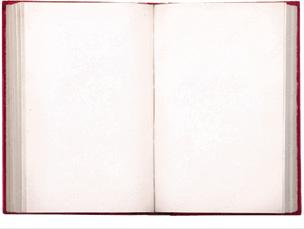
Unfortunately, most of us (I know it is true of myself!) make efforts to convince others and ourselves that we did no sin –that there was a good reason to act as we did or that it was another’s fault, or that others do the same, etc., etc. But unless we can recognize that, indeed, we have stumbled, we will continue tripping down that sinful path.
But Shabbat Shuva has arrived and our Avigayil has awakened us out of our stupor. The question that remains is whether that “almost inborn emotion of regret”, as the Rav puts it, will succeed in arousing us to the harm we inflict upon ourselves…. and upon others.

The Shofar has sounded. We must respond!





United Hatzalah of Israel is the largest independent, non-profit, fully volunteer Emergency Medical Service organization that provides the fastest and free emergency medical first response throughout Israel. This year's sale will go toward providing a volunteer medic with an ebike, a fast-response vehicle that will allow them to reach the site of an emergency as fast as possible.

You can choose a set from various hidur options:




On Marcus St, Talbieh
Spacious new 200m apartment on one level, large sukkah terrace facing open views, elevator, parking. Deborah 0544804767

In Lev Rechavia Residence with pool, doorman 24/7, gym, unique 180m on one level facing the park, succah balcony, very bright. Maya 0546650184
FOR RENT!! Luxurious 300m penthouse with private pool on a 200m terrace, panoramic views of Jerusalem, 2 elevators, parking, storage. Maya 0546650184
In a new building in San Simon edge of Old Katamon, beautiful 150m apt., 5 rooms, 2.5 bathrooms, 15m sukkah terrace, finished at top standard, being sold furnished. Maya 0546650184
In a luxurious residence in Talbieh with security 24/7, apartment of 200m on one level sold as a shell, client can finish per their layout, parking, storage. Julia 0547007436
In Jerusalem Spirit Building
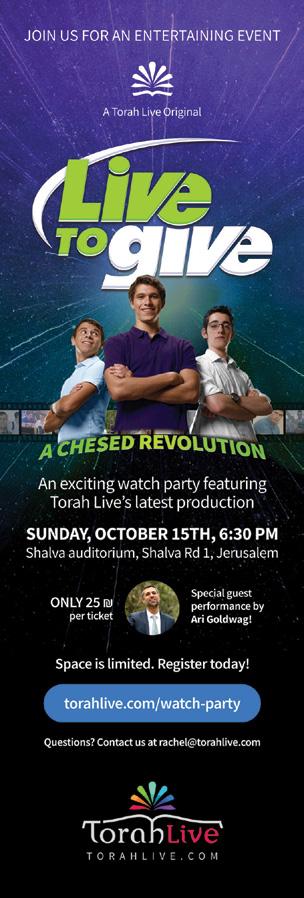
Great investment and holiday flat- City Center, new building, lobby, high-end 45m apt, 2 rooms, 10m balcony. Maya 0546650184
Beautiful 240m apartment totally renovated on Ben Maimon - Rechavia Duplex, 6 rooms, 5 bathrooms, very bright, succah terrace, parking. Deborah 0544804767
In a small lane of the German ColonyUnique Authentic house of 700m built on a huge plot of 1,200m - perfect for making an apartment building or a tremendous private house - Potential to build up to 2,000m. Deborah 0544804767
Charming unique small private house on a small alley of Baka - 250m built at top standard, private pool, beautiful garden and deck, 6 bedrooms, very attractive price! Deborah 0544804767
Presale of a new boutique development in German Colony - Penthouses, garden apartments, and 3-4 rooms apartment, attractive prices for one month only! Ready in 3 years. Deborah 0544804767
02-6744000 0544804767
King David St. 26 www.real-estate-jerusalem.co.il




’ה דע לארׂש י הבוׁש
What is the relationship between Shabbat and Teshuvah? The Midrash (Breishit Rabbah 22:16) relates that Adam HaRishon met Kayin and asked him to share the verdict that he received after murdering his brother Hevel. Kayin responded that he repented and was thereby forgiven. Adam HaRishon was so moved hearing the power of Teshuva that he immediately composed Psalm 92, תבשה םויל ריש רומזמ , A psalm. A song; for the sabbath day. Yet, if you look at the text of תבשה םויל ריש רומזמ , it does not discuss the relationship of Shabbat and the Teshuvah process. The Mizmor expresses the appreciation of Hashem’s creations and the triumph of the righteous in contrast to the wicked. Why then did Adam compose this psalm as a way of expressing his profound appreciation of the concept of repentance?
As mortal beings, we are not entitled to forgiveness from Hashem. He is our Creator and we owe everything to Him. We cannot undo what is already done and thus sin appears permanent. But Shabbat demonstrates that nature can be overcome. There is a sphere of existence that transcends nature, namely Shabbat. Shabbat is the space where even time is
suspended and our regular way of life is replaced by a spiritual existence.
One might think that if a person sins, he or she is forever labeled a sinner. This was the fear of Adam HaRishon. When he was spared death for his sin, he realized that Teshuvah is a space where one can over come the limitations of natural existence, just as Shabbat allows man to rise above the humdrum of weekly pursuits.
Shabbat inspires us to do Teshuva - just as we are able to rise above the limitations of the physical week, we can overcome sin and achieve forgiveness. We recite the words of Hoshea, Yoel and Micha directing us toward repentance to synthesize the message of the power of Shabbat in the Teshuvah experience.


 SHABBAT SHUVA - PARSHAT HA'AZINU
SHABBAT SHUVA - PARSHAT HA'AZINU
Throughout the prayers over the Ten Days of Repentance, from Rosh Hashana and culminating with Yom Kippur, again and again we ask for life. “Remember us for life, King who desires life”, “Who is like You, merciful Father, who remembers His creations for life”, “and You are trusted to give life.”
And yet, we also believe that each person has a certain amount of time that they are allocated in this world. Is it reasonable for us to request a few more years to be added to our lives? Is this not an alteration of the Divine plan for each individual? In addition, one can meet people who do not want to continue living, who are suffering and, at least temporarily, prefer not to have more life. Are more years always such a blessing?
I believe that the prayers’ request is not limited to biological life, we do not only pray to live and not die. Rather, it is a request that our life should have meaning; we ask to live a full life. This is distinct from the number of years that we inhabit the earth, we want our life to have purpose and joy.
Numerous long-term studies have shown that what gives life the most meaning is family and community. People can live happy lives in poverty if they are
surrounded by family and friends.
This is why the joyful celebration of Sukkot comes immediately after Rosh Hashana and Yom Kippur. We go from asking for life, to living life. We enter into a precarious dwelling and are happy there with our family and guests. We prove that the meaning of life is not how much we amass, but who we celebrate with.
The joy of a week spent with extended family is a natural extension of our desire for life, not only more time, but more essence, more meaning, more delight.
It is a time and an opportunity to think of those who do not have that joy, who celebrate Sukkot, and Shabbat, and all the other festivals, without children. Since they have no children, even though they have been trying to have children for years.
This helps us appreciate even more the joy of our own families, and increases our sensitivity to such couples, and encourages us to help and support them whenever we can, in whichever way we are able to.
We ask for life, for ourselves and for others, those around us, and those who we do not even know.
Shannah Tovah
Now


Now starting my 5th year at NCSY Israel

 Gavriel Novick Development Director,
Gavriel Novick Development Director,

Before making Aliyah my parents threw me a goodbye party where my father quoted a Rashi from this week’s parsha. The pasuk describes Hashem’s relationship with the Jewish nation “as an eagle awakens its nest, hovering over its fledglings, it spreads its wings, taking them and carrying them.” Rashi explains that the eagle “does not impose its whole body upon them. Rather, it hovers above them, touching them and yet not quite touching them.”
Similarly, one opinion is that the Sukkah is supposed to represent the ananei hakavod which Hashem provided for Bnei Yisrael while they traveled through the desert. Clouds which hovered over the Jewish people and protected them, without being overbearing or pressuring. Hashem teaches us that this is the perfect way to inspire religious and personal growth.
As we educate our youth we try to strike that same balance. We try to inspire and motivate, to protect and influence, but ultimately to hover above and allow children, teens and young adults to make their own decisions.
I honestly feel this is something which drives our youth movement. Our teens know that we are always there for them. Our programs are built to inspire and help them grow. Our staff guide and support them through their high school years and beyond. But we are always hovering, providing and acknowledging the teens’ own independence. This is the crucial recipe that Hashem teaches us will affect real change and growth.
Daniella GoldfarbParshat Ha'azinu is teaching us something very important about Tshuva and taking responsibility for our actions. The Parsha starts off with God telling the Jewish people to listen to what He is about to say through Moshe. Moshe starts by praising God. He then goes on to say that the new generation of Jewish people are ungrateful and unworthy of God. God gave the people everything they needed and more, but they started worshiping other gods. God punished them with famine, plague, and deadly pests and beasts. When
Moshe is done telling this to the people, he tells them to take these words seriously. If they think this is just a story, they are mistaken. It applies to every one of their lives.
As the הבושתה ימי תרשע (the ten days of repentance) comes to a close, I want you to think about what Moshe said. Although you may not be living in famine or plague, maybe you’re unhappy with something, or your friends seem to be drifting away. Instead of putting the blame on others, ask yourself what you are doing to cause these things. Maybe you haven’t been on top of your schoolwork and are unhappy with yourself, or you said something rude by
Amazing Israel Properties For You To Own Buying in US Dollars? USD to NIS: 3.82*

Great Values on Beach Properties!
JerusalemRamot - New Project - 88 Units - Call For Details
*September
Rassco - 3.5 Bedrooms - 3.5M NIS
Kiryat Yovel - Amazing Views- 4 Bedrooms - 3 8M NIS
Rehovot -
2 Bedrooms - 2.09M NIS
3 Bedrooms - 2 65M NIS
Ra'anana -


3 Bedrooms -3 905M NIS

2 Bedrooms - 2.68M NIS
4 Bedrooms - 4.09M NIS
Nahariya - Sea Views
4 Bedrooms - 1.63M NIS - Low Floors
4 Bedrooms - w/Sea Views - 1 8M NIS
Netanya - Sea Views
Nth. Netanya - 4 Bedrooms - 3.25M NIS
Ashkelon - Sea Views - Close to Marina
4 Bedrooms - 3.25M NIS New Project
Yizkor is recited in memory of a loved one both on Yom Kippur Shmini Azeret.
The custom to pledge to give charity on behalf of the departed in Ohr Hachayim 621:6.
Yizkor
Yizkor is recited in memory of a loved one both on Yom Kippur and on Shmini Azeret.
Yizkor is recited in memory of a loved one both on Yom Kippur and on Shmini Azeret.
For full Yizkor text please consult your machzor.
The custom to pledge to give charity on behalf of the departed is recorded in Ohr Hachayim 621:6.
For full Yizkor text please consult your machzor.
The custom to pledge to give charity on behalf of the departed is recorded in Ohr Hachayim 621:6.
For full Yizkor text please consult your machzor.

Shacharit
Vayikra 16:1-34
Maftir Bemidbar 29:7-11
Haftorah Yeshayahu 57:14- 58:14
Mincha
Shacharit
Vayikra 18
Haftorah - Sefer Yonah
Vayikra 16:1-34
Maftir Bemidbar 29:7-11
Haftorah Yeshayahu 57:14- 58:14
Mincha
Vayikra 18
Haftorah - Sefer Yonah
Prohibitions of Yom Kippur
Prohibitions of Yom Kippur
1. All activities forbidden on Shabbat are forbidden on Yom
1. All activities forbidden on Shabbat are forbidden on Yom Kippur.
2. The five abstentions of Yom Kippur are:
2. The five abstentions of Yom Kippur are:
• Eating and drinking
1. All activities forbidden on Shabbat are forbidden on Yom Kippur.
2. The five abstentions of Yom Kippur are:
• Eating and drinking
• Washing
• Applying ointments to the body
• Washing
• Eating and drinking
• Washing
• Applying ointments to the body
• Applying ointments to the body
• Wearing shoes
• Wearing shoes
• Having marital relations
• Wearing shoes
• Having marital relations
• Having marital relations continued on next page...
continued on next page...
3. An adult may handle food and feed children on Yom Kippur.
3. An adult may handle food and feed children on Yom Kippur.
4. Sick people are not exempt from fasting unless there is at least a remote possibility that fasting would endanger their lives. A halachic authority should be consulted in cases of illness.
4. Sick people are not exempt from fasting unless there is at least a remote possibility that fasting would endanger their lives. A halachic authority should be consulted in cases of illness.
5. Washing any part of the body, whether in hot or cold water, is forbidden on Yom Kippur, except for the purpose of cleanliness. One should wash his hands up to the knuckles upon rising in the morning, and recite the blessing. After using the bathroom, or after touching a covered part of the body, one should wash his hands up to the knuckles to cleanse himself for prayer. A kohen who is to recite the priestly blessing should wash his entire hands. An ill person may wash himself.
5. Washing any part of the body, whether in hot or cold water, is forbidden on Yom Kippur, except for the purpose of cleanliness. One should wash his hands up to the knuckles upon rising in the morning, and recite the blessing. After using the bathroom, or after touching a covered part of the body, one should wash his hands up to the knuckles to cleanse himself for prayer. A kohen who is to recite the priestly blessing should wash his entire hands. An ill person may wash himself.
6. Applying any kind of ointment, lotion, etc. is forbidden on Yom Kippur.
6. Applying any kind of ointment, lotion, etc. is forbidden on Yom Kippur.
7. It is forbidden to wear shoes made wholly or partly of leather.
7. It is forbidden to wear shoes made wholly or partly of leather.
1. In Havdala, no blessing on fragrant spices is recited. The Havdala candle must be lit from fire which was burning all of Yom Kippur.
1. In Havdala, no blessing on fragrant spices is recited. The Havdala candle must be lit from fire which was burning all of Yom Kippur.
2. To celebrate the forgiving of our sins, one should eat well and be in a joyous mood after Yom Kippur ends.
2. To celebrate the forgiving of our sins, one should eat well and be in a joyous mood after Yom Kippur ends.
3. It is also customary at the conclusion of Yom Kippur to commence the building of the Sukkah.
3. It is also customary at the conclusion of Yom Kippur to commence the building of the Sukkah.
(The laws above are base on the volume, ‘Festivals and Fast, published by Student Organization of Yeshiva)
(The laws above are base on the volume, ‘Festivals and Fast, published by Student Organization of Yeshiva)
Kaparot is a custom that dates back to the time of the Gaonim. Traditionally, one uses a chicken - rooster for a male, hen for a female, one of each for a pregnant woman. Through the years, there were problems with improper attention paid to the slaughter of the chickens, due to the large demand for slaughter on Erev YK. Since Kaparot chickens were to be prepared and given to poor people, there developed - in some communities - the practice of using money instead, which is given to TZEDAKA, thereby seeing to the needs of the poor and alleviating the abovementioned problems.
KAPAROT is often misunderstood. It is NOT a shortcut to atonement. For real atonement, we must approach HaShem with sincere repentance, mitzvot and good deeds, prayer and fasting. KAPAROT is a sobering reminder of the frailty of life, an inspiration to T'SHUVA, AND a way of involving us in G'MILUT CHASADIM before YK.
Ideally, "do" Kaparot on Erev Yom Kippur in the morning. The text on this page is meant for those who use money for tzedaka rather than chickens. Those who use chickens (or fish) can find the standard text in a Machzor or Siddur.
Many people use a multiple of CHAI, such as 1.80, 3.60, 5.40... 18.00, etc. Some suggest that the amount taken for KAPAROT should at least be the cost of a chicken. The money should ideally be given to tzedaka before Yom Kippur. Shuls provide collection plates at Mincha on Erev Yom Kippur for that purpose.
Hold the money in your right hand and say the following passage 3 times:
Next, wave your hand with the money in a circles over your head while saying the first 3 word-pairs below, then finish the statement. Repeat a second and third time.
BEFORE LIGHTING YOM KIPPUR CANDLES... It is customary to light memorial candles for one's departed parents/ close relatives before lighting Yom Kippur candles. An additional 24-hr. candle is lit "for the living". This candle also provides the "Flame that Rested" (NEIR SHESHAVAT) for Havdala.
Candles are lit in the "usual" Shabbat candles manner: light them, cover your eyes, make the brachot, then open your eyes and "benefit" from the light. When a woman lights Yom Kippur candles, she accepts upon herself ALL the restrictions of Yom Kippur - both the Fast Day aspect as well as the Shabbat-like restrictions.
If there is a compelling reason to do so, a woman may make a T'NAI (mental/ verbal condition) that she is not yet taking upon herself Yom Kippur with the lighting. In such a case, she should NOT say ונייחהש with lighting (she DOES say L'HADLIK), but waits until shul to say it with the congregation, after Kol Nidrei and before Maariv.
A woman who says ונייחהש at candle lighting, does not repeat it in shul. She should, of course, answer AMEN when the Chazan and congregation say it.
Since we will not be eating to the light of the candles, one should try to benefit from the candles in some way (without touching them, of course) upon returning home from shul. It is also good to have in mind at candle lighting, the various lights we leave on (or set to go on) around the house, which are part of the mitzva of HADLAKAT NEIROT.
The following is an elaborated commentary on the Viduy which is recited throughout the day of Yom Kippur. It should be used along with the text in your machzor.
The following is an elaborated commentary on the Viduy which is recited throughout the day of Yom Kippur. It should be used along with the text in your machzor.


For each of the following 24 "terms of sin", one symbolically strikes the left side of his/her chest with the right fist. Before or after saying the word itself, sight-read (or say) the English text and allow your mind and heart to really become part of the VIDUI process by backing up your words. Don't hesitate to actually say more than the text - in any language - adding personal prayers, thoughts, and feelings. T A L K T O G - D . This is a special time to do that. (Don't worry about being slower than others; just find a good place to stand where you will not inconvenience others - so you won't have an additional sin to repent.)
The first part of the English text is based on the word itself. Then there are some of the items included by Rabbi Moshe Sternbach in HaDerech LiTshuva. Remember that the connection is based on the Alef-Bet, and won't be obvious from the English. Also, keep in mind that we must repent once-in-a-while violations - not just whole behavior patterns. E.g. "We have stolen". This is not just for a person who is a career thief; it is also for a person who is basically law-abiding, but once in a rare while will download a pirated movie or copy a friend's CD to his computer. Or - one who usually avoids gossip and Lashon HaRa, but thought a particular episode about someone else was SO funny, that he just had to share it with his friend. W
d e v a s t a t e d b y o u r b e h a v i o r
Wehaveeaten-forbiddenfoods,questionablefoods,withoutbrachot,withoutgood mannersandconcernforothers;thereissomethinglackinginourfaithinG-d (evenjustsometimes);wedon'talwayssayAmenproperly,wehaveacruelstreak...
W e h a v e b e t r a y e d G - d b y n o t d o i n g H i s m i t z v o t p r o p e r l y a n d b y s i n n i n g i n a w a y t h a t i s d i s l o y a l t o G - d ; w e h a v e b e t r a y e d f a m i l y & f r i e n d s
WehavewastedprayerandTorahstudytime;wewerenotcarefulwithMilk&Meat; wereliedonourselvessometimestotheexclusionoftrustinginG-d;wehavesaid"sloppy" brachot;wehavebelittledparents,teachers,scholars,friends;wehavewastedtime...
W e h a v e s t o l e n - t h i n g s , t i m e , o t h e r ’ s s l e e p , i d e a s ; w e h a v e d e c e i v e d . . .
Wehavebeenarrogant;wronglytookcreditforsomething;harmedorannoyed others;notraisedourchildrenproperly;havenotbeenstrictenoughaboutsexualbehavior; havenotrepaidkindnessesproperly...
W
Wehavegossiped,defamed,usedvulgarities,spokendisrespectfully,shoutedmisusedthepowerofspeech;notgivenpeoplethebenefitofthedoubt...
W e h a v e c a u s e d p e r v e r s i o n , c o r r u p t e d o t h e r s
Wehaveentertainedimproperthoughts-duringdavening,Torahlearning, oringeneral;wehavedavenedwithoutkavana;burdenedothers; encroachedonanother's"space";lookedatindecentpictures,literature,etc.
WehaveneglectedtobeproperlyrespectfulofG-d;showedlackof concernforthepossessionsofothers;saidwe'resorrywithouttrying tomeanit;fomenteddissent;joinedwithothersandwastedtimeonnonsense...
W e h a v e s i n n e d i n t e n t i o n a l l y , a n d t h e n h a v e r a t i o n a l i z e d o u r b e h a v i o r ( m a k i n g T ' s h u v a a l l t h e m o r e d i f f i c u l t )
WehavetakenG-d'sNameinvain;beencarelessaboutritualwashingofourhands; beendisrespectfultoourparents;we'atelikepigs';threwfood,mingledimmodestly...
W e h a v e e x t o r t e d ; w e h a v e t a k e n a d v a n t a g e o f t h o s e w e a k e r t h a n u s ; w e h a v e p r e s s u r e d o t h e r s t o g i v e i n t o u s
WehavecausedChilulHaShem;wehavefalselyflatteredothers;thoughtbadthoughts; unjustlysuspectedothersofwrongdoing;desecratedtheShabbat;notpaidourdebts; desired(inanunhealthy,unkoshermanner)thepossessionsofothers...
W e h a v e " a t t a c h e d " o u r s e l v e s t o f a l s e h o o d ; l y i n g h a s b e c o m e a p a r t o f o u r l i v e s ; w e h a v e a c c u s e d o t h e r s f a l s e l y ; c o m p o u n d e d l i e s b y l y i n g m o r e ; h u n g o u t w i t h t h e w r o n g c r o w d
Wehavegivenerroneousopinionsandadvice;defiledourselvesandothers; handledMuktzaonShabbatorYomTov;belittledGoodandchosenBad...
W e h a v e g i v e n e v i l c o u n s e l ; w e h a v e a b u s e d t h e t r u s t o f o t h e r s ; a d v i s e d o t h e r s i n w a y s t h a t a r e n o t i n t h e i r b e s t i n t e r e s t
Wehavesecludedourselvesimproperlywithmembersoftheoppositesex;joinedothers intime-wastingactivities;knowinglysinned;lackedproperreverenceandaweforG-d...
W e h a v e b e e n d e c e i t f u l ; m a d e i n t e n t i o n a l l y m i s l e a d i n g s t a t e m e n t s ; f a l s e p r o m i s e s ; h a v e n o t t r i e d h a r d e n o u g h t o k e e p o u r p r o m i s e s WehavemadeHaShemangryatus;beenungrateful;intendedtoharmothers(even ifwedidn't);wastedtime;delayedpayingwages;calledothersderogatorynicknames...
W e h a v e c l o w n e d a r o u n d a b o u t m a t t e r s t h a t w e s h o u l d h a v e t r e a t e d s e r i o u s l y ; w e h a v e r i d i c u l e d g o o d p e o p l e ; w e ' v e j o k e d a b o u t t h i n g s , w h i c h p r e v e n t s u s f r o m p r o p e r T ' s h u v a b e c a u s e w e d o n ' t t a k e t h i n g s s e r i o u s l y e n o u g h
Wehave-notlearnedTorahproperly;wornShaatnez;notbeenkind&charitable;notbeen meticulousaboutmitzvot&halacha;notbeenscrupulousinourdealingswithothers...
W e h a v e r e b e l l e d ; d e f i e d G - d ' s w i l l ; s i n n e d b e c a u s e o f i n c o m p l e t e f a i t h
Wehaveheldothersbackfromdoingmitzvot;notbehavedproperlyinbusiness...
W e h a v e a n g e r e d G - d (so to speak) b y d i s r e g a r d i n g H i s m i t z v o t , e t c .
Weviolatedpromisesandvows;tookrevengeandboregrudges;benefitedfrom thisworldwithoutbrachot;werelazyinTorahlearningandserviceofHaShem...
W e h a v e t u r n e d a w a y , i g n o r e d o u r r e s p o n s i b i l i t i e s t o G - d ( a n d f e l l o w s )
WehaveturnedfromJewishcustoms;contradictedourparentsorTorah authorities;dealtwithcontraband;forgivenothersinword,butnotinourhearts...
W e h a v e b e e n p e r v e r s e a n d h a v e s i n n e d b e c a u s e o f p e r v e r t e d r e a s o n i n g ; w e h a v e d e l i b e r a t e l y s i n n e d t o g r a t i f y o u r d e s i r e s
Wehavebeenfalselymodest;aburdentoourspouse; wewereinsensitivetoorphans&widows;wehaveviolated(minor)prohibitions...
W e h a v e a c t e d w a n t o n l y ; d e n i e d t h e v a l i d i t y o f ( s o m e ) m i t z v o t ; w e
b a s i c a l l y b e l i e v e i n G - d & T o r a h , b u t h a v e d i s r e g a r d e d a s p e c i f i c m i t z v a
WehaverejectedtheYokeofHeaven;wewereafraidtoreproachsomeone; weturnedourheartstoidleness;weopenedsomeoneelse'smail;welackedfearofsin...
W e h a v e p e r s e c u t e d o t h e r s ; c a u s e d s u f f e r i n g ; b e e n c a l l o u s t o o t h e r s Wehavedistressedourfamilymembers;weputourneedsbeforeG-d's...
W e h a v e b e e n s t u b b o r n ; w e h a v e r e f u s e d t o s e e G - d ' s H a n d i n l i f e ; w e h a v e i g n o r e d o r d e n i e d t h a t w h a t h a p p e n s i n t h i s w o r l d i s n o t c h a n c e , b u t G - d ' s W i l l
Wehavebeenjealousofothers;beenstingywithTzedaka;readimproperbooks; listenedtoandacceptedLashonHaRa;notbeencarefulwithKriyatSh'ma...
W e h a v e b e e n w i c k e d ; d o n e s i n s t h a t a r e p a r t i c u l a r l y i d e n t i f i e d w i t h w i c k e d n e s s , s u c h a s h i t t i n g o t h e r s , s t e a l i n g , p l a n n i n g t o s i n
Wehavepursuedhonor;quarreledfornogoodreason;ranaftertemptations...
W e h a v e c o r r u p t e d o u r c h a r a c t e r ; b e e n a r r o g a n t ; e x t r e m e l y a n g r y ; v u l g a r - s i n s w h i c h a f f e c t o n e ' s c h a r a c t e r
Wehave-lied;forgottenG-dandourcommitmenttoHim;weresilentwhenwe shouldhaveobjected;gloatedoveranother'smisfortune;hatedothers;squandered physical&spiritualenergies...
W e h a v e b e e n a b o m i n a b l e ; h a v e b e c o m e l o a t h s o m e t o G - d ; i m m o r a l i t y ; i d o l a t r y ; h a u g h t i n e s s ; a n g e r
Wehavedesiredsinfulthings;belittledtheTorah;wedidnottaketheopportunity torepent;werenotcarefulwithourT'filin;weresloppywithdavening...
W e h a v e s t r a y e d ; d r i f t e d f u r t h e r a w a y f r o m G - d r a t h e r t h a n g e t t i n g c l o s e r t o H i m
Y o u h a v e l e t u s g o a s t r a y ( w e l o s t t h e m e r i t t o h a v e Y o u r h e l p ) ; w e h a v e m i s u s e d f r e e d o m o f c h o i c e f o r o u r s e l v e s a n d o t h e r s
In summary... We have veered from Your mitzvot and good rules, and that hasn't been worth it at all. We acknowledge that Your judgments against us are just, because You act truthfully and we have brought evil upon ourselves. (Nonetheless, please forgive us...)
Li«¤h¨R§W¦O¦nE Li«¤zF§v¦O¦n Ep§x«©q d¨Y©`§e .Ep«¨l d¨e«¨W `Ÿl§e ,mi¦aFH©d i¦M ,Epi«¥l¨r `¨A©d l¨M l©r wi¦C©v .Ep§r«¨W§x¦d Ep§g«©p£`©e ¨zi«¦U¨r z¤n¡`
For NE’ILA, go to VIDUI pages 11 and 12, and then p.10
What can we say to You, G-d; You know everything; nothing is hidden before You...
zFx¨Y§q¦P©d l¨M `Ÿl£d ,mi¦w¨g§W o¥kFW Li«¤p¨t§l x¥R©q§p d©nE ,mFx¨n a¥WFi Li«¤p¨t§l x©n`Ÿp d©n l¨M U¥tFg d¨Y©` .i¨g l¨M i¥x§z¦q zFnEl£r©z§e ,m¨lFr i¥f¨x ©r«¥cFi d¨Y©` .©r«¥cFi d¨Y©` zFl§B¦P©d§e .Li«¤pi¥r c¤b«¤P¦n x¨Y§q¦p oi¥`§e ,‚¤O¦n m¨l§r¤p x¨a¨C oi¥` .a¥l¨e zFi¨l§M o¥gFaE ,o¤h«¨a i¥x§c©g
Therefore, may it be Your will that You forgive, pardon, and atone our many sins... ,Epi«¥z`ŸH©g l¨M l©r Ep«¨l g©l§q¦Y¤W ,Epi«¥zFa£` i¥dŸl'`¥e Epi«¥dŸl'¡` 'd ,Li«¤p¨t§N¦n oFv¨x i¦d§i o¥k§aE .Epi«¥r¨W§R l¨M l©r Ep«¨lÎx¤R©k§zE ,Epi«¥zFpF£r l¨M l©r Ep«¨l l©g§n¦z§e
T'shuva includes: recognition of sin, stopping sinful behavior, regret for having sinned, commitment not to continue to sin... and VIDUI
After summarizing, we once again use an alphabetical format (this time, a double alphabetical arrangement) to enumerate a multitude of sins. And once again, the custom is to strike the heart (left side of the chest) for each AL CHEIT...
For the sin that we have sinned before You... (repeated for each)
a c c i d e n t a l l y ( o r u n d e r d u r e s s ) a n d w i l l i n g l y - even when we don't mean to sin, we still must repent, for it indicates a lack in us that we sinned. How much more so, when it is intentional
t h r o u g h h a r d n e s s o f t h e h e a r t - refusing to admit that we might be wrong often results in sin. We have to be more humble...
t h r o u g h i g n o r a n c e - lack of Torah learning results in doing the wrong thing. Rather than plead ignorance, we must strive for greater knowledge
w i t h w o r d s - many sins, especially related to misuse of the power of speech, such as flippant oaths, cursing, gossip. We must be more careful of what emerges from our lips...
i n p u b l i c o r i n p r i v a t e - sins in public are potential Chilul HaShem; sins in private often indicate fear of what others will think, but a disregard for what G-d thinks. Negative either way.
t h r o u g h i m m o r a l i t y - this includes a wide variety of sins and includes the sins themselves as well as that which a person does that causes lust and leads to the more serious sins...
w i t h h a r s h s p e e c h - generally, this refers to misuse of the power of speech in all forms; specifically, it refers to speaking harshly to someone and unjustly hurting his/her feelings.
w i t h k n o w l e d g e a n d d e c e i t - refers to using our knowledge in order to deceive and take advantage of others. Also includes deceiving ourselves.
t h r o u g h t h o u g h t s - this includes fantasizing about sin; such thoughts are the root of sin and also interfere with Torah learning and davening. "I was ONLY thinking about..." is no excuse.
t h r o u g h w r o n g i n g a f e l l o w - deceiving, taking advantage of a friend, etc.; also refers to unfair treatment in business
b y i n s i n c e r e c o n f e s s i o n - T'shuva must be "in your mouth and in your heart, to do..." Let our words motivate us to sincere repentance and let our sincere repentance be accompanied by proper VIDUI (VIDUI can start or 'cap' the T'shuva process)
i n i m m o r a l g a t h e r i n g s - being part of a group whose conversations are improper can easily lead one astray.
"But everyone else was there!" is not a reason or excuse
w i l l f u l l y a n d c a r e l e s s l y - even when we did not mean to sin, we have what to repent - we should have been more careful, etc.
b y b e l i t t l i n g p a r e n t s ( i n c l i n - l a w s ! ) a n d t e a c h e r s - this is not only something we do or say, but even something we think. It all is wrong and it threatens the strength of the Chain of Tradition.
Li¤«p¨t§l Ep`«¨h¨g¤W `§h¥g l©r ,oFv¨x§aE q¤p«Ÿ`§A
Li«¤p¨t§l Ep`«¨h¨g¤W `§h¥g l©r§e .a¥N©d uEO¦`§A
Li¤«p¨t§l Ep`«¨h¨g¤W `§h¥g l©r ,z©r«¨c i¦l§a¦A
Li¤«p¨t§l Ep`«¨h¨g¤W `§h¥g l©r§e .m¦i«¨z¨t§U iEH¦a§A
Li¤«p¨t§l Ep`«¨h¨g¤W `§h¥g l©r .x¤z«¨Q©aE iEl¨B©A
Li¤«p¨t§l Ep`«¨h¨g¤W `§h¥g l©r§e ,zFi¨x£r iEN¦b§A
Li¤«p¨t§l Ep`«¨h¨g¤W `§h¥g l©r .d¤R xEA¦c§A
Li¤«p¨t§l Ep`«¨h¨g¤W `§h¥g l©r§e ,d¨n§x¦n§aE z©r«©c§A
Li¤«p¨t§l Ep`«¨h¨g¤W `§h¥g l©r .a¥N©d xFd§x©d§A
Li¤«p¨t§l Ep`«¨h¨g¤W `§h¥g l©r§e ,©r«¥x z©`«¨pFd§A
Li¤«p¨t§l Ep`«¨h¨g¤W `§h¥g l©r .d¤R iEC¦e§A
Li¤«p¨t§l Ep`«¨h¨g¤W `§h¥g l©r§e ,zEp§f z©ci¦r§e¦A
Li¤«p¨t§l Ep`«¨h¨g¤W `§h¥g l©r .d¨b¨b§W¦aE oFc¨f§A
Li¤«p¨t§l Ep`«¨h¨g¤W `§h¥g l©r§e ,mi¦xFnE mi¦xFd lEf§l¦f§A
b y e x e r c i s i n g p o w e r - it is wrong to use one's power to intimi- date others; one must not arrogantly act superior over others.
t h r o u g h d e s e c r a t i o n o f G - d ' s N a m e - includes major Chilul HaShem as well as relatively minor acts which cause a lowering of the respect for G-d or Torah in the eyes of others.
t h r o u g h f o o l i s h s p e e c h - "why do we say stupid things?" One has to repent this too, since speech is such a precious & powerful feature of humans. And, foolish speech often leads to action.
t h r o u g h i m p u r e l i p s - this is one of several references to improper speech; in this case, the subject is vulgar language and cursing.
w i t h t h e E v i l I n c l i n a t i o n - we sometimes fail to fight our Yeitzer HaRa - rather flirt with it, then give in to it and follow it.
k n o w i n g l y a n d u n k n o w i n g l y - we want to repent even sins that we are unaware of having done. Also, sins against others who may or may not know what we've said about or done to them.
Li¤«p¨t§l Ep`«¨h¨g¤W `§h¥g l©r ,c¨i w¤f«Ÿg§A
Li¤«p¨t§l Ep`«¨h¨g¤W `§h¥g l©r§e .m¥X©d lEN¦g§A
Li¤«p¨t§l Ep`«¨h¨g¤W `§h¥g l©r .d¤R zEW§t¦h§A
Li¤«p¨t§l Ep`«¨h¨g¤W `§h¥g l©r§e ,m¦i«¨z¨t§U z©`§nªh§A
Li¤«p¨t§l Ep`«¨h¨g¤W `§h¥g l©r ,r¨x¨d x¤v«¥i§A
Li¤«p¨t§l Ep`«¨h¨g¤W `§h¥g l©r§e .mi¦r§cFi `Ÿl§aE mi¦r§cFi§A
NOTE: G-d's name ©DF«l|¡` is pronounced e-LO-ahh (Ashkenazi) or e-LOwahh (S'faradi)N O T ELOHA. Two points: the accent is on the F«l syllable, not the ©D . And secondly, the PATACH under the HEI is pronounced BEFORE the aspiration of the HEI. (Just like it is with the ©g of TAPU'ACH, RU'ACH, MIZBEI'ACH) .Ep«¨lÎx¤R©M
For all of these sins, G-d of Forgiveness, forgive us, pardon us, atone for us.
(These are different levels of forgiveness - commentators disagree concerning the terminology. Basically, we ask G-d to forgive what we've done, not to punish us for it, not to even hold a sin against us, and to completely erase it, as if we never did it. Some suggest that S'LACH is to forgive, but not necessarily to forget. M'CHAL is more - maybe like forgiven & forgotten.)
b y y i e l d i n g t o b r i b e r y - monetary bribery as well as flattery with ulterior motives are insidious to honest dealings among people. Bribery and flattery can blind one and cause a multitude of sins in their wakes.
t h r o u g h d e n i a l a n d f a l s e p r o m i s e s - we have not been honest, neither with G-d nor with our fellow human beings. Remember: this need not be a chronic condition, we must repent even the minor instances of dishonestly. "I'm basically honest, but..." Not good either.
w i t h L a s h o n H a R a - another misuse of the power of speech. A particularly serious sin because it often results in permanent damage to a person's reputation, even when groundless. "But it's true" is not an acceptable excuse for Lashon HaRa. Neither is "I was only joking".
t h r o u g h f o o l i n g a r o u n d - not taking someone's reproach of us seriously, laughing it off, will impede T'shuva. Ridiculing others, joking at someone else's expense are serious offenses.
Li¤«p¨t§l Ep`«¨h¨g¤W `§h¥g l©r .c©g«ŸW z©R©k§A
Li¤«p¨t§l Ep`«¨h¨g¤W `§h¥g l©r§e ,a¨f¨k§aE W©g«©k§A
Li¤«p¨t§l Ep`«¨h¨g¤W `§h¥g l©r .r¨x¨d oFW§l¦A
Li¤«p¨t§l Ep`«¨h¨g¤W `§h¥g l©r§e ,oFv¨l§A
i n b u s i n e s s - business ethics and proper behavior in the market place are just as much a part of Halacha as is fasting on Yom Kippur or keeping Shabbat. Extra warning: these kinds of sin often involve Chilul HaShem and are often disregarded by many
w i t h f o o d & d r i n k - one should not pat himself on the back for keeping kosher; one needs to carefully answer the question: "Am I as careful and as strict as I ought to be?" Included in this sin are not making brachot properly, sloppy benching, careless washing for meals, poor table manners, gluttony, stinginess with guests...
t h r o u g h i n t e r e s t a n d e x t o r t i o n - taking or paying interest on personal loans is forbidden. Besides the sin, it causes one to become hard-hearted.
t h r o u g h h a u g h t i n e s s - arrogance is a particularly reprehensible character trait. We must repent sins that result from it as well as work on ridding ourselves of this negative characteristic.
w i t h p r y i n g e y e s - this includes looking at forbidden things, invasion of privacy of others, expressing disapproval of others with a raised eyebrow
w i t h i d l e c h a t t e r - yet another expression of the misuse of speech. Here it can refer to davening and benching without kavana, as well as pointless and time-wasting conversation.
w i t h h a u g h t y e y e s - looking down at others. This is parallel to the earlier reference to haughtiness, a particularly negative trait.
w i t h b r a z e n n e s s - acting without shame and a bit of natural embarrassment is a contributory factor to a host of other sins
i n t h r o w i n g o f f t h e Y o k e - we exist to learn Torah, perform mitzvot, and be good people. Many sins come from shirking our responsibilities.
i n j u d g m e n t - refers to sins of unfair judgment, in the formal courtroom as well as in everyday life. It even refers to judging G-d.
t h r o u g h e n t r a p p i n g a f e l l o w - taking advantage of others, manipulating people for our own purposes
t h r o u g h a b e g r u d g i n g e y e - being jealous and stingy. Finding excuses for not giving Tzedaka or being generous with others. Not helping others.
t h r o u g h l i g h t h e a d e d n e s s - we are often frivolous. This is especially inappropriate in shul and when learning Torah or davening.
w i t h s t u b b o r n n e s s - refusing to recognize that we might be wrong. Not learning from experience. Not taking constructive criticism. This is a major obstacle to T'shuva, and we must repent this in order to repent other things too.
Li¤«p¨t§l Ep`«¨h¨g¤W `§h¥g l©r ,o¨Y©n§aE `¨V©n§A
Li¤«p¨t§l Ep`«¨h¨g¤W `§h¥g l©r§e .d¤Y§W¦n§aE l¨k£`©n§A
Li¤«p¨t§l Ep`«¨h¨g¤W `§h¥g l©r ,zi¦A§x©n§aE K¤W«¤p§A
Li¤«p¨t§l Ep`«¨h¨g¤W `§h¥g l©r§e .oFx¨B z©I¦h§p¦A
Li¤«p¨t§l Ep`«¨h¨g¤W `§h¥g l©r .o¦i«¨r xET¦U§A
Li¤«p¨t§l Ep`«¨h¨g¤W `§h¥g l©r§e ,Epi«¥zFz§t¦U ©gi«¦U§A
Li¤«p¨t§l Ep`«¨h¨g¤W `§h¥g l©r ,zFn¨x m¦i«©pi¥r§A
Li¤«p¨t§l Ep`«¨h¨g¤W `§h¥g l©r§e .g©v«¥n zEG©r§A
l©r§e
Li¤«p¨t§l Ep`«¨h¨g¤W `§h¥g l©r ,lŸr z©wi«¦x§t¦A
Li«¤p¨t§l Ep`«¨h¨g¤W `§h¥g l©r§e .zEli¦l§t¦A
Li¤«p¨t§l Ep`«¨h¨g¤W `§h¥g l©r ,©r«¥x z©I¦c§v¦A
Li¤«p¨t§l Ep`«¨h¨g¤W `§h¥g l©r§e .o¦i«¨r zEx¨v§A
Li¤«p¨t§l Ep`«¨h¨g¤W `§h¥g l©r ,W`Ÿx zEN©w§A
Li¤«p¨t§l Ep`«¨h¨g¤W `§h¥g l©r§e .s¤x«Ÿr zEi§W©w§A
.Ep«¨lÎx¤R©M ,Ep«¨l l©g§n ,Ep«¨l g©l§q ,zFgi¦l§q ©DF«l'¡` ,m¨NªM
e n t h u s i a s t i c a l l y - One must examine his wrongdoings and see if there is the added sin of doing them with a smile or with "licking one's lips".
b y g o s s i p i n g - The prohibition includes Lashon HaRa and character assassination, but also includes telling tales with no intention to hurt anyone. It is all too frequent that people get hurt from plain gossip.
t h r o u g h v a i n o a t h s - swearing falsely or frivolously can damage the underpinnings of interpersonal relationships as well as being a serious lack of respect to G-d. One has to be extremely careful in this regard.
t h r o u g h b a s e l e s s h a t r e d - do you hate a person when you should really be hating the wrong things that he does?. This distinction is crucial for the proper growth and development of Klal Yisrael.
i n m a t t e r s o f " g i v i n g a h a n d " - we have been callous towards the needs of others. Also, we have sometimes joined with others in evil.
t h r o u g h c o n f u s i o n - this refers to a diminished faith in G-d caused by not seeing G-d's hand in everything and by doubting the validity of the Torah and the authority of halacha.
.Ep«¨lÎx¤R©M
Li¤«p¨t§l Ep`«¨h¨g¤W `§h¥g l©r ,r©x¨d§l m¦i«©l§b©x z©vi¦x§A
Li¤«p¨t§l Ep`«¨h¨g¤W `§h¥g l©r§e .zEli¦k§x¦A
Li¤«p¨t§l Ep`«¨h¨g¤W `§h¥g l©r ,`§e¨W z©rE«a§W¦A
Li¤«p¨t§l Ep`«¨h¨g¤W `§h¥g l©r§e .m¨P¦g z©`§p¦U§A
Li¤«p¨t§l Ep`«¨h¨g¤W `§h¥g l©r ,c¨iÎz¤nE«U§z¦A
Li¤«p¨t§l Ep`«¨h¨g¤W `§h¥g l©r§e .a¨a¥l oFd§n¦z§A
l©g§n ,Ep«¨l g©l§q ,zFgi¦l§q ©DF«l'¡` ,m¨NªM l©r§e
After enumerating different kinds of sins, we ask for forgiveness of sins according to punishment & style: For sins which would require a sacrifice in the Beit HaMikdash, then for those which one gets corporal or capital punishment from Beit Din or penalties from Heaven.
Then we mention sins of commission and omission, sins we know about and those of which we - but not G-d - are unaware
.d¨lFr m¤di¥l£r mi¦a¨I©g Ep«¨`¤W mi¦`¨h£g l©r§e
.z`¨H©g m¤di¥l£r mi¦a¨I©g Ep«¨`¤W mi¦`¨h£g l©r§e
.c¥xFi§e d¤lFr o¨A§x¨w m¤di¥l£r mi¦a¨I©g Ep«¨`¤W mi¦`¨h£g l©r§e
.iEl¨Y m¨W¨`§e i`©C©e m¨W¨` m¤di¥l£r mi¦a¨I©g Ep«¨`¤W mi¦`¨h£g l©r§e
.zEc§x©n z©M©n m¤di¥l£r mi¦a¨I©g Ep«¨`¤W mi¦`¨h£g l©r§e
.mi¦r¨A§x©` zEw§l©n m¤di¥l£r mi¦a¨I©g Ep«¨`¤W mi¦`¨h£g l©r§e
.m¦i«¨n¨W i¥ci¦A d¨zi¦n m¤di¥l£r mi¦a¨I©g Ep«¨`¤W mi¦`¨h£g l©r§e
.i¦xi¦x£r©e z¥x¨M m¤di¥l£r mi¦a¨I©g Ep«¨`¤W mi¦`¨h£g l©r§e
,oi¦c zi¥A zFzi¦n r©A§x©` m¤di¥l£r mi¦a¨I©g Ep«¨`¤W mi¦`¨h£g l©r§e
mEw D¨A W¥I¤W oi¥A ,d¤U£r©z `Ÿl z©e§v¦n l©r§e d¥U£r z©e§v¦n l©r .w¤p«¤g§e b¤x«¤d ,d¨t¥x§U d¨li¦w§q
m¦iEl§B©d z¤` .Ep«¨l m¦iEl§B m¨pi¥`¤W z¤`§e Ep«¨l m¦iEl§B©d z¤` .d¥U£r mEw D¨A oi¥`¤W oi¥aE ,d¥U£r m¦iEl§B m¥d Li«¤p¨t§l ,Ep«¨l m¦iEl§B m¨pi¥`¤W z¤`§e ;m¤di¥l£r L§l Fpi«¦cFd§e ,Li«¤p¨t§l mEp§x©n£` x¨a§M Ep«¨l :x©n¡`¤P¤W x¨a¨C©M ,mi¦rEci¦e m½¨lFrÎc©r ÆEpi¸¥p¨a§lE Ep³¨l zºŸl§b¦P©d§e Epi®¥dŸl|¡` 'd«©l zŸ½x¨Y§q¸¦P©d :z`Ÿ«G©d d¬¨xFY©d i¥x§a¦CÎl¨MÎz¤` zF¾U£r«©l i¥h§a¦W§l o¨l¢g¨nE l¥`¨x§U¦i§l o¨g§l¨q d¨Y©` i¦M .d¨Y«¨` `¨N¤` ©g«¥lFq§e l¥gFn K¤l«¤n Ep«¨l oi¥` Li«¤c¨r§l©A¦nE ,xFc¨e xFC l¨k§A oExªW§i
TT 1342 RH&YK Pull Apart section VIDUI - page 9
Can a humor-laden fiancé marry into a No Joking family? What if the Yom Kippur Goat of Repentance goes astray?

Did Rabbi Akiva orchestrate the exact timing of his death? Is it true that Cain killed Abel, For The Sake Of Heaven? Will Morris' guaranteed cure for constipation go viral?
Frustrated with poor bank communication in Israel or abroad?


Overwhelmed by banking regulations? Unsure about your current investments?
With over 40 years of experience in private banking in Israel and the UK, I'll help you navigate the banking landscape, improve your communication with your banks and investment companies, and connect you with caring bankers and investment managers.


We wish all 285 OTS shlichim in the field and all of our returning graduates hatzlacha on behalf of the Jewish people.
RABBI DR. KENNETH BRANDER PRESIDENT & ROSH HAYESHIVA RABBI DR. SHLOMO RISKIN FOUNDER & ROSH HAYESHIVA YINON AHIMAN DIRECTOR GENERAL ZEV WEISS CHAIRMAN, ISRAELI BOARD OF DIRECTORS RABBI ELIAHU BIRNBAUM DIRECTOR, OTS EMISSARY TRAINING PROGRAMS

The Torah reading for Yom Kippur is the description in Chapter 16 of Vayikra of the entire service in the Mikdash for Yom Kippur. The Kohen Gadol himself read this exact Torah reading in the Mikdash on Yom Kippur. We are reading what he read.
1ST ALIYA (VAYIKRA 16:1-6)
One may enter the Holy of Holies with the following elaborate procedure. For I, G-d, appear there in a cloud. Aharon is to bring a bull for a sin offering, along with a ram. The Jewish people bring 2 goats for sin offerings and a ram. Aharon wears 4 unique white garments for this service.
The goal or purpose of the elaborate ceremony of Yom Kippur is stated clearly; For I, God will appear in a cloud. G-d appearing in a cloud is a recurring theme in the Torah, the most dramatic of which is at Mt. Sinai. The pinnacle moment of Yom Kippur is just you and Me, in My most private place, the Holy of Holies. You, Aharon, as the representative of My people. And Me, in the cloud. The image is dramatic – G-d promising to join us on earth, albeit in private, in His most private place. But here on earth. Yom Kippur is the most intimate moment of Divine-human contact in the year. Atonement is achieved through the Divine descending, as it were, in a cloud in the Holy of Holies. Atonement is achieved through the
intimate, close encounter of G-d with man.
2ND ALIYA (16:7-11)
Take the 2 goats of the people. Through lots, identify one as an offering and the other to send to the desert for atonement. Aharon offers the offering for himself and his household.
In this moment of intimate contact of the Divine and us, we achieve atonement through pageantry. The pageantry of the 2 goats is rich; identical in appearance, their roles achieved through lots, their fate radically different. One will be an offering to G-d. The other will be sent to the barren desert.
3RD ALIYA (16:12-17)
Aharon is to take a pan of coals and of incense into the Holy of Holies, with the smoke of the incense enveloping the covering of the Aron. Aharon takes the blood of his sin offering and sprinkles it 7 times in the Holy of Holies and 7 times in front of the curtain, outside of the Holy of Holies. He repeats this with the blood of the people’s sin offering, the goat.
This moment of entry into the Holy of Holies happens only once a year. The Torah does not say that the smoke from the incense fills the Holy of Holies. It says it covers the Aron. The incense smoke covering the Aron is reminiscent of Mt. Sinai, where the thick cloud covered the mountain when G-d spoke. The Aron holds the 10 commandments, the concrete representation of the experience of Mt. Sinai. It
is like a re-enactment of that moment. Not the content of the Torah, its mitzvot. But the descent of the Divine into this world. That is the essence of Sinai. And it is the essence of this moment; the Divine is joining us on this earth. This is the pinnacle moment; the Shechina joining us here on earth.
He then takes the blood of his bull and the goat of the people and both places it on the incense altar and sprinkles it 7 times, purifying it. He thus completes the atonement of the holiest places. Aharon then places his hands upon the head of the other goat of the people, confessing all their sins, placing them on the head of the goat. The goat, bearing the sins of the people, is led out to the desert. Aharon now changes from the special white garments to his regular ones and offers the more conventional offerings for himself and the people.
With the smoke still in the Holy of Holies, meaning the Divine Presence on this earth, the atonement can occur; the confession of sins upon the goat that is then led to the desert. Rav Soloveitchik captured the drama as a metaphor. This goat is pushed over a cliff, falling to its death. The fall, the pull of gravity is a metaphor for man who allows himself to be pushed and pulled by his nature, failing to exercise will. Man can choose to assert his will. Or choose to be subject to the whims and forces of his nature, like the goat unable to break his fall. In a word, when man allows himself to be pulled down by his nature, failing to assert his will, gravity pulls him down to his demise. Such is the sinful one, allowing forces to dominate, failing to assert his will.
The one who led the goat to the desert need be purified upon his return as do the ones who burn the sin offerings of Aharon and the people out of the camp. All of this is to be done every year on Yom Kippur accompanied by fasting. For on this day, He provides you with atonement and purity; you become purified before G-d.
While the drama of this day was punctured by the destruction of the Temple, the atonement persists through the day of Yom Kippur itself. Rabbi Akiva noted: you become purified through the day and its rendezvous with G-d. He is the purifier.
6TH ALIYA (16:31-34)
This procedure atoning for the Holy of Holies, the outer area, the altar, the Kohanim and the people shall be done once a year.
This atonement and purification are humbling, overwhelming, ennobling. For the Holy One reaches for mankind, descends in a cloud as it were to the Holy of Holies, granting atonement. It is His reach for man; His kindness, generosity, and love.
Yom Kippur is a gift, an affirmation of man, a chance to begin anew, a smile from the Holy One, appreciating our desire and passion, even if we err. Yom Kippur is the faith of the Holy One in us, giving us a yearly clean slate. That is a gift.
The maftir describes the extra mussaf that is brought in addition to the unique Yom Kippur offerings..

There was great rejoicing when a shidduch was made between the families of the Rhizner Rebbe, Reb Yisroel Friedman, and the Riminover Rebbe, Reb Zvi Hersh. As customary, when families came together to celebrate the tenaim or ‘engagement’ of their children, the two mechutanim were expected to describe their yichus and extol their genealogical and spiritual lineage. By each honoring their family histories, the chasan and kallah would begin their commitment to one another with holy pride and achrayus, a sense of spiritual responsibility for the future and obligation toward past generations.
After the Rhizner, a tzadik of royal bearing and presence, detailed his long line of spiritual luminaries from the Maggid of Mezritch back to King David himself, he turned to his mechutan, Reb Zvi Hirsch, and motioned for him to do the same.
Reb Zvi Hirsch had a different kind of background — he was not aware of being part of a chain of luminaries, nor did he learn how to be a rebbe with his father, as he was an orphan. As a child, he had spent time in the Beis Medrash of Reb Mendel Riminover, where he was known as Reb Zvi Hersh Meshareis, the ‘Minister’, meaning ‘the devoted attendant’ ministering to the Rebbe. Reb Menachem Mendel was so
deeply impressed by his student’s modesty, scholarship and hidden righteous ways, that he instructed that Reb Zvi Hirsch become his successor.
“...My parents left the world when I was just an infant,” began Reb Zvi Hirsch, in front of the silent wedding party. “But I’m told they were honest, simple, God fearing Yidden! And before coming to the Beis Medrash of Reb Mendel Riminover, I was an apprentice to a humble tailor, who raised me with kindness. I learned two important lessons from my adopted father. Firstly, in our craft, it is our privilege and responsibility to mend old and worn articles of clothing as best as we can. And secondly, we are to be especially careful not to ruin the new garments that have been entrusted to us to make for the future.”
With that, the Riminover concluded his remarks, and sat down.
Choked with emotion, the great Tzadik haDor, Reb Yisrael of Rizhin, turned to Reb Zvi Hirsh and said, “My heiligeh mechusan! That is indeed a most chashuv and admirable yichus! What a great honor it is for me to link with such a lineage, and what a great responsibility our children will bear together. May they make all of their holy ancestors proud!”
Rebbe Tanchuma shared a story that took place הבר אמוצ תבורעב, on the eve of the Great Fast, Yom Kippur:
A simple tailor set out to purchase a fish to prepare in honor of the Erev Yom Kippur seudah and found the choicest of fish in the marketplace. A servant of the Roman governor did as well, and they began bargaining for it, bidding against one another until the tailor offered a whopping twelve dinars and won the purchase. When fish wasn’t served at the Roman governor’s dinner, he demanded an explanation from his servant, and was shocked to hear that a simple Jew would spend such an outlandish amount on a fish. When the tailor was summoned, he explained:
There are families torn apart by machlokes and disagreement. Jealousy, politics and pettiness are ripping apart communities. On Yom Kippur, the headquarters of tikun, ‘mending’ the past, Chazal wanted each and every one of us to know that we are called upon to become a ‘tailor’. In order to prepare for the avodas ha-teshuvah of this holiest of all days, we must get to work, right now, stitching back together the torn fabric of our family, our chevra, our community and nation.
“Sir, we have but one, precious day when all of the sins of our previous year are forgiven, and we honor it greatly.”
Impressed by the sincerity and sacrifice of the tailor, the Roman governor allowed him to leave in peace. Upon returning home, when the tailor opened the fish to prepare it, he was astonished to find a precious gem inside — a reward from Heaven that sustained him all his days. (Medrash Bereishis Rabba, 11:4)
This Midrashic account is so central to our understanding of our avodah of Yom Kippur that it is mentioned by various Rishonim and numerous Halachic works. The Chasam Sofer reveals a deeper significance in the Midrash, as it highlights the protagonist’s professional identity, a seemingly insignificant detail immaterial to his
There are new garments to create, as well. As the Lubavitcher Rebbe, z’ya, says: shefa, a flow of blessing, comes into the world to be received, contained and ‘clothed’ in the natural world. In this sense, too, we are called to be tailors, to prepare and preserve well-fitting ‘garments’ for the Divine blessings that we must offer to our family and nation.
According to Midrash Tanchuma (Lech Lecha 2), our forefather Avraham was considered a ‘spiritual tailor’, dedicated to repairing the perceived tear in the relationship between God and mankind. May we follow in the ways of the tzadikim and begin this holy task by mending the fragmented aspects of our own lives and repairing our relationship with the Ribbono Shel Olam. May we be careful not to ruin the new garments that we have made for the future, and make all of our holy ancestors proud. And most importantly, may we receive the precious reward from Heaven that will sustain us all our days: teshuvah me-ahavah, the work of returning to HaKadosh Baruch Hu out of love.


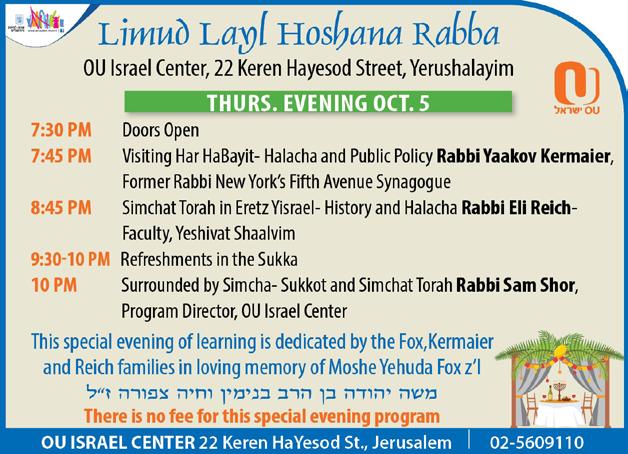


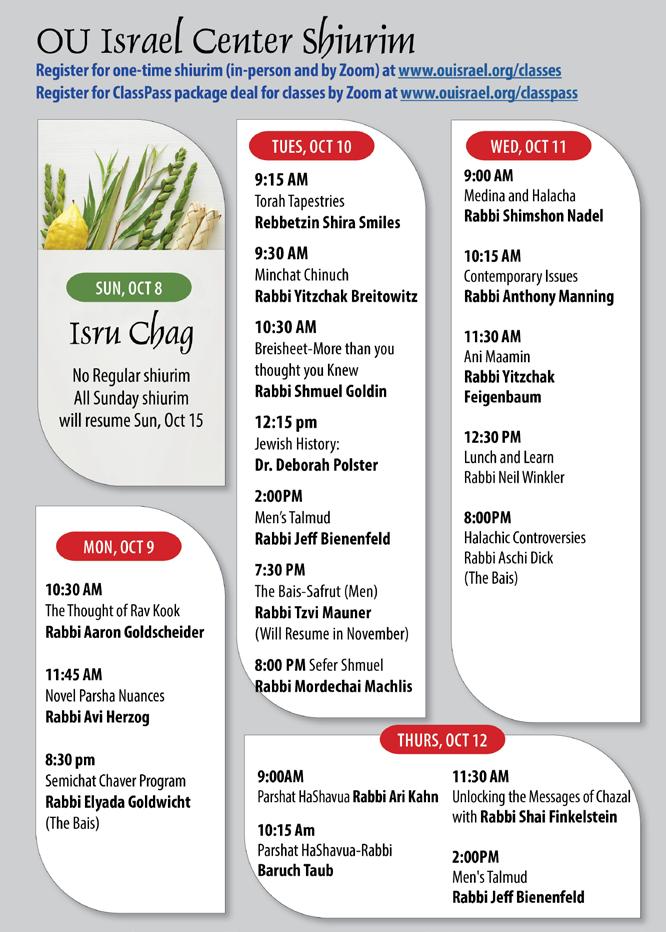

Eyal Drory, one of the most talented young Israeli winemakers, is part of the dream team at Anava Vineyards, which gives a unique opportunity for individuals to buy their own vineyard and produce their own wine in Israel. “We have found the perfect place in Elah Valley, in the Judean Foothills, which has tremendous versatility.” is valley has a unique microclimate, which is 50C colder than the region as a whole. Drory studied for six years in the Piedmont region of Italy before returning to Israel. He currently serves as the winemaker of Agur Winery. At Anava, he will be the winemaker, alongside viticulturist Avinoam Inbar. ey will be the professional team to advise throughout the process from the vine cutting to the bottle. Decisions of varieties to plant and the style of wine will be taken together. “We invite our members to really experience the joys of what it means to make wine in the Land of Israel.”

For Eyal, winemaking is a deep personal experience, something he hopes to share with Anava members. “Today, most people live with such a disconnect from nature that we think a tomato or a cucumber is born in the supermarket – people have no idea what they look like in nature. When someone actually steps into a eld, and joins us in working the land, it is a powerful experience, where suddenly what was once taken for granted is now appreciated. It was this that made me fall in love with winemaking in the rst place.” And while winemaking is a meaningful experience whether in Piedmont or in Bordeaux, there is something unique about making wine in the Land of Israel. “Sometimes it is not uncommon to stumble across one of the many ancient wine presses in our region, that date between two to three thousand years old. We are making wine like our forefathers did.” We invite you to become part of this ongoing story and join at Anava Vineyards!”
For more information about purchasing a vineyard, starting at..., please contact Racheli at info@anavavineyards.com / +972 50 717 5479



“For years, I have been ful lling my dreams as a winemaker. At Anava, I am now able to ful ll the dreams of others.”
Teshuvah is a multilayered and multifaceted journey through the subterranean layers of identity. As teshuvah encompasses a wide range of emotions and a broad variety of experiences it cannot be captured by one single term or phrase. Instead, our Nevi’im and our Chazal developed a battery of terms portraying the different hues and colors of this transformational experience.
In chapter 44, Yeshayahu employs geulah as a metaphor for teshuvah. In wellknown pasuk, recited during slichot, he announces:
Hashem promises to erase our sins like a cloud, while also proclaiming “Return to Me [and repent] for I have redeemed you”. As geulah evokes the spirit of teshuvah, by exploring geulah we can better understand the pathways and alleyways of teshuvah.
Teshuvah
The gemara in Yoma (86b) lauds teshuvah because it advances final redemption:
disassociated geulah from teshuvah, assuring us that we will be redeemed independent of national repentance. By contrast, Rebbe Eliezer argued that redemption is completely dependent upon teshuvah. Without mass repentance Jewish redemption stalls. Even Rebbe Yehoshua, however, concedes that teshuvah, though not necessary for redemption, still deeply affects its pace and texture. Repentance makes the process quicker and more graceful, while also accelerating the timelines of geulah. Even if teshuvah isn’t a prerequisite, it is certainly a stimulus of redemption. Recognizing that teshuvah fuels geulah Yeshayahu, effectively urges us “Return to Me so that I will redeem you “. Hashem solicits our teshuvah so that redemption will be enabled.

Based on this coupling, the gemara in Sanhedrin (99) cites a debate as to whether teshuvah is a necessary precondition to final redemption. Rebbe Yehoshua
The relationship between teshuvah and geulah though, is reciprocal. Teshuvah accelerates and enhances geulah, but geulah, for its part, awakens teshuvah. We believe that one day, all of humanity will gather in Yerushalayim and acknowledge Hashem. Our Messianic narrative doesn’t envision extinction of others but inspiration and education.
At this late stage of history, however, much of the world has turned its heart
away from Hashem, including a sizable portion of the Jewish population who have abandoned faith or have discarded halachic fidelity. Yet, we still believe in ultimate mass teshuvah. Evidently, mass teshuvah will be triggered by a colossal divine intervention which will revolutionize human consciousness.
Redemption, or at least the incipient stages of redemption, is the type of event which can revitalize alienated religious hearts. Hopefully we are living through this dynamic and the initial miracles of Jewish regeneration will, ultimately, revive faith and religious commitment across our people.
Recognizing the capacity of geulah to incite teshuvah, Yeshayahu effectively pleads that we should “return [to Hashem] because He has already begun to redeem us.” Initial redemption incites teshuvah, which, in turn, accelerates final redemption. To phrase it in Yeshayahu’s terms, Hashem asks us to perform teshuvah, to ignite initial geulah, which hopefully, leads to broad teshuvah which ultimately clinches the final redemption of our people and this world. Teshuvah and geulah march in lockstep through history.
Though Yeshayahu’s description of teshuvah as geulah underscores that geulah causes teshuvah and teshuvah advances geulah, his primary intent is to highlight the shared features between teshuvah and geulah. By using geulah as a metaphor for teshuvah, Yeshayahu highlights the similarities between these two experiences.
Belief in redemption is premised upon a
WISHING YOU A SWEET, HEALTHY AND HAPPY NEW YEAR
CLASSIC RECHAVIA 4 RM APT IN THE HEART OF THE SHAAREI CHESED COMMUNITY #2 IBN EZRA CORNER WITH KKL, 4 RMS, 1ST FLOOR, 93 M WITH LARGE ENCLOSED BALCONY WITH PARTIAL SUKKAH (OVER 100M IN TOTAL), HIGH CEILINGS, GOOD CONDITION.

ASKING PRICE 5,400,000
BEAUTIFUL SPACIOUS BAKA FAMILY HOME FOR SALE
186 SQM SPLIT-LEVEL HOME WITH TWO 40M TERRACES 7 ROOMS, 3 FULL BATHROOMS, 2ND FL (31 STEPS), GREEN AND BRIGHT, PRIVATE PARKING, STORAGE, EXCELLENT CONDITION, CHURCHLAND UNTIL 2077 NOW ASKING NIS 5,200,000
Ilana Nelson 054.5341403www.integrityrealestate.co.il
distinctly Jewish view of history. Western civilization views history as evolutionary and open-ended. The future is completely unknown and is solely a product of human decision. For us as Jews, the historical process is predetermined: history has a beginning and an inexorable end. The beginning is called creation and the end is called redemption.
For a Jew, history is not only predetermined but is also cyclical. The beginning resembles the end. Redemption doesn’t reverse advances in culture, technology, and science but it does restore an earlier condition of religion and morality. Redemption doesn’t just change or improve our world but restores it to an earlier and more perfect state.
The actual word geulah appears three times in parshat Behar, all in the context
of restoring land to original owners or liberating slaves. Under certain conditions a seller may reacquire his land, in effect, redeeming or restoring it. During the yovel year the entire Land of Israel experiences geulah, in that all sold lands are refunded. If geulah of lands restores original ownership, geulah of history restores the human condition to its original terms. Geulah returns history back to the moral and religious conditions of the past.
By describing teshuvah as geulah, Yeshayahu emphasizes that teshuvah, as well, is restorative. We depict teshuvah with many words: forgiveness, pardon, absolution of sin, penitence, and self-improvement. But teshuvah is, fundamentally, a restoration. Sin barriers us from Hashem, whose presence cannot countenance evil. Teshuvah removes those obstructions and reboots our relationship.
Human beings, when insulted or betrayed, can often summon the courage and generosity of spirit to forgive. However, emotional wounds run deep, and it is almost impossible to turn back the clock on a ruptured relationship. We bear the scars of past hurt and rarely can the original innocence of a relationship be fully restored. Humans can offer forgiveness, but full restoration of a relationship is seldom achieved.
By gifting us with teshuvah, Hashem offers us complete restoration and the ability not just to overcome our sins but to reboot our relationship with Him to its original pristine state of purity. It is the gift which only Hashem can offer.
The list of 13 middot enumerates various
compassionate traits of Hashem. The first trait, the word ׳ה, connotes basic mercy which Hashem extends to us. Interestingly, the term ׳ה is repeated twice. Noticing this repetition, the gemara in Rosh Hashanah (17b) explains that we ask Hashem for His mercy both before we sin and after we sin. As the Chofetz Chaim asserted, our bold request of Hashem is to restore our relationship to the exact same “pre-sin” condition. By requesting His mercy with the exact same term, both before and after sin, we seek full restoration of lost innocence. Authentic teshuvah causes a reboot.
Teshuvah is a glance back at the past and a reclamation of our past relationship with Hashem. We look back to a simpler time, when we were more innocent and more pure. Life was simpler and our relationship with Hashem was less complicated and less confused. Sins muddle the water and introduce uncertainty and static. Our betrayals erected barriers and obstacles. What was once a clear path is now a minefield. Teshuvah offers us a ticket back to our past.
The concluding pasuk of Eicha captures our longing for restoration of our earlier state:
As the midrash comments, we don’t merely seek forgiveness. We boldly ask Hashem to restore us to our original state, prior to sin and prior to human rebellion. We seek Gan Eden, or the “days of old”.
For this reason, Yeshayahu compares teshuvah to geulah. We know where history is heading. We know that history is a circle, and that redemption leads us back
Rabbi Ari Kahn's Shiur - Thursday, Septemer 14th
was sponsored by Shelley Hirshberg and Helen Raff Scher on their Dad's, Binyamin ben Yisrael Zev Halevi z"l 11th yahrzeit. He was loved by all who knew him, and on the 13th yahrzeit of Tzvi Hirsh ben Yisrael Zev Halevi z"l, their Uncle Harry, a generous man.
All Morning Shiurim - Tuesday, September 19th
were sponsored by Naomi & Ori Carmel in memory of Zisa ben Baruch z"l
Rabbi Manning's Shiur - Wednesday, Sept 20th
is sponsored by Miriam Marcus in memory of her beloved father, Mordechai ben Yehoshua Zvi z"l - 11 Tishrei 59 years ago

Rabbi Shai Finkelstein's Shiur
is sponsored for the 2023 - 2024 academic year by the Sondhelm and Wertenteil families in memory of Mel David z"lםחנמ
ל"ז הקבר אביוטו ריאמ םהרבא ןב לדנמ
Rabbi Adler’s Shiur
is sponsored for the 2023-2024 academic year by the Frist family in memory of their beloved daughter and sister Elisheva Frist a"h תב אמיס עבשילא
ה"ע ןמלז
Rabbi Goldscheider’s Shiur
has been sponsored for the 2023 Academic Year
ל’’ז המלש ןב בוט םשו ה’’ע םהרבא תב םירמ תמשנ וליעל
Rebbetzin Shira Smiles Shiur
is sponsored for the 2023 academic year
by Dr. & Mrs. Menachem Marcus in memory of their parents, Rose & Dr. Emanuel Marcus z”l -
ל”ז סוקרמ השמ ןב יכדרמו ריאמ ףסוי תב לזייר Rosi and Ernest Strauss z”l -
ל”ז סוארטש דוד ןב לאינדו םהרבא תב דומיל
Rabbi Breitowitz’s Tuesday ShiurMinchat Chinuch
is sponsored for the academic year 2023 by Rabbi Refoel & Sharon Auman in memory of their parents Edith & Reiner Auman z”l
ד”יה לאפר תב ה”ע רתסאו ל”ז קודצ ןב הנוי and their son Rabbi Shmuel Eliyahu Auman z”l
י”נ לאפר ברה ןב ל”ז והילא לאומש ברה
Rabbi Goldin’s Shiur
is sponsored for the 2023 academic year by Dr. & Mrs. Menachem Marcus in memory of beloved aunts
Irma Haas a”h and Hilde Myer a”h
Rabbi Manning’s Shiur
has been sponsored for the 2023 academic year
ל’’ז ןמלק ןב גילזו ה’’ע תידנרב תב הנרב תמשנ יוליעל
Rabbi Taub’s Weekly Thursday Parshat HaShavua Shiur is sponsored by The Jewish Legacy Foundation
to the beginning of time. Knowing this, we also believe that the redemption of teshuvah leads us back to our own beginning.
Reach back to the past and reclaim it. Reach back to lost purity and renew it. Redeem and Repent. Repent and Redeem.
הבוט המיתחו הביתכ



ven though we already concluded our study of Birchat HaMazon in the last article, I recently came across a remarkable story about bentching that I thought would be important to share with you. The story illustrates a beautiful point brought down by the Sefer HaChinuch. The Sefer HaChinuch writes –
Anyone who is careful with their Bentching, his livelihood will be provide for him with respect all of his days
We spent a lot of time in our Birchat Hamazon series discussing the meaning and significance of all of the Brachot of the Bentching. But beyond understanding the deeper meanings, we also need to make sure to be ריהז with our bentching, to be careful how we recite the Bentching, the respect we give to it, and the way we concentrate and focus. If we do our bentching right, we are told that Hashem will reward us with a good livelihood.
Since this edition of Torah Tidbits spans from Yom Kippur through Sukkot, Shemini Atzeret, and beyond, I thought it only appropriate to discuss the process we undergo throughout this time period. Rav Shimshon Raphael Hirsch brings the following beautiful insight highlighting the amazing transformation we strive to undergo during this entire time period.
Yom Kippur is the holiest day of the year. It’s the day we strive to be like malachim. We stand in shul all day long, dressed in our white clothing, living in a purely spiritual world. We daven and connect to Hashem without any breaks for eating or drinking, we have no material distractions. We focus and we cry and if we’ve done it right, when we reach Neila at the end of the Yom Kippur davening, we have reached the climax, the height of all spiritual experiences.
This story is told by Rabbi Yoel Gold and has a profound message for us in our own bentching.
Two years ago, after the tragedy in Meron, a man named Chaim Ginz decided to try and be menachem avel as many of the victims’ families as possible. The first family he visited was the Zacbach family in Bnei Brak, who were mourning their 24 year old son, Menachem Asher. At the shiva house, the family gave out bentchers with the inscription – “The last will/
But where do we go from there? We’re on a high because we just spent the whole day in tefilla, separated from all things physical. But the problem is - we aren’t meant to live like that on a daily basis. We now need to figure out how to take that spiritual high and translate it into everyday life. How do we do that?
The answer is, we already have a system set in place. The coming Chagim form a slow progression from total spirituality to
request (האווצ) of Menachem Asher is to bentch out of a bentcher”. The family explained that at the age of 16, Menachem Asher had taken on the practice of always bentching from a bentcher and never reciting the bentching by heart. He took this commitment very seriously and would never wash and eat bread unless he was absolutely sure there was a bentcher available in the vicinity. Chaim Ginz heard this and decided to take on this practice as well, l’iluy nishmat this young man.
About a month later, Chaim was feeling pretty stuck. He was having trouble making a living. He was a Sofer and he had just completed a project and was unable to find any more work. Day after day, he would show prospective clients samples of his work but they just kept turning him away. He was feeling very rejected and depressed. One day, he was in a special apartment in Bnei Brak which sofrim use as a place to do their work. He had something to eat and was ready to bentch. He didn’t have a bentcher on him so he was about to bentch by heart. But he remembered his commitment and began to search the apartment from top to bottom. Finally, after many minutes, he located a bentcher hidden under a stack of papers on the top of a bookshelf. He noticed that the bentcher was written in תירושא בתכ, the font used by sofrim. He admired the beauty of the writing and after bentching, he decided to use the bentcher to help him with his own writing. For three hours, he
regular everyday life. We begin with the holiday of Sukkot. If you think about it, the entire Sukkot experience is very physical –full of delicious Yom Tov meals and simcha. But the catch is - it’s all done within the four walls of a mitzvah. We are learning to enjoy the material world within the confines of a mitzvah. Next, we move onto Shemini Atzeret. On Shemini Atzeret, we no longer sit in a Sukkah. In fact, there are no special Mitzvot at all on Shemini Atzeret. We are not surrounded anymore by mitzvot, by the spiritual world, but we are still basking in the glow of a Yom Tov. And finally we move onto Isru Chag, the day after Sukkot. No mitzvot, no chag, (this year Misrad HaChinuch even decided to send the kids backs to school) and yet, we still have that fresh taste of chag in our mouths.
At each stage, we stop and we check ourselves - can we still hold onto the inspiration, to our focus and our goals, as we move farther and farther away from that purely spiritual existence? And then we get to days following Isru Chag and eventually to the month of Cheshvan, where we are really put to the test. A month of no holidays, no spiritual highs, no specific mitzvot, a month of the ordinary, a boring old month. What do we do now? Can we remain inspired and committed, can we
continue to grow in our Avodat Hasham without the external spiritual experiences?

As we prepare to enter into Cheshvan, Rav Hirsch explains that “the stem syllable ושח itself indicates silence and quiet. This is the characteristic of the month of Cheshvan which directly follows the festive celebrations of the month of Tishrei. Cheshvan, in contrast to Tishrei, gives an impression of stillness and entrance into quiet, private life. A Jew has to serve Hashem well in his quiet, private life.” (Collected Writing of Rav Hirsch Volume 2, p.159)
In addition, it is brought down in Chassidut that another meaning for the word Marcheshvan is םיתפשה תא ןישחרמ - we continue throughout the month of Cheshvan to hum the Tefillot of Tishrei, we are still chewing it over, digesting all we encountered in Tishrei.
It is the days following the Chagim that represent ordinary, daily life. As we re-enter into הרגש (routine), we find out how well we did during Tishrei. Tishrei is the time of inspiration, and the days following are the time of application. As we step back into our ‘quiet private lives’, we need to learn to grow in our Avodat Hashem not only through those bursts of inspirational moments but also in our ordinary day-to-day lives.

So as we experience the different Chagim over the next couple of weeks, let’s try and stop and ask ourselves along the way – “How can I apply this inspiration?” “How can I take all of these magnificent spiritual experiences and make them part of my daily life?”
IyH, may we all have an extremely impactful Yom Kippur, Sukkot, and Shemini Atzeret, and then be able to take real steps to apply that inspiration into our lives.
Read The Tripod: A New Perspective on the Shalosh Regalim

Just when you thought you had a pretty good handle on what the annual festivals are all about, this recently released book by N Neil Lauer comes to uncover the fundamental lessons embedded within the Shalosh Regalim that you might have overlooked.
Available in bookstores and online.

“
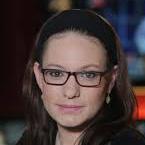
There is a custom to take upon ourselves each year a new commitment. In other words, to make a resolution in one area of our lives and to persist in staying with it. Here are a few ideas I have heard on this subject:
1. Think about what is most important to you and focus primarily on it, whether this area of concentration is family, community, tzedakah, social media, praying, or learning Torah.
Much excitement has surrounded Emunah Cohen and Neta Lax, the two fresh winners of the annual International Bible Quiz. Yesterday I interviewed them and heard their story.
It turns out that they studied long hours together and were confident they would be the leading competitors. "We planned on winning together," Emunah revealed. "We thought both of us would answer every question correctly so that we would both be champions, tied for first place.
2. There are commentators who explain that a new year’s resolution is like a new piece of clothing that a person acquires -- only it is a garment for the soul and not for the body. This is the gift that we give to ourselves. It is worthwhile to speak about it with a friend so that we feel a sense of obligation and accountability where it’s concerned.
But in the end Emunah won. "They made a big deal about our big hug after I lost," Neta said. "But it was the easiest thing to share in her happiness. Besides, we were just relieved that the competition was finally over."
In the course of the entire contest, Emunah made only one error. "I knew the answer to the question: 'When did King David cry for
Blvd, 1 month min. Amazing sea view, kosher, furnished: May, June, July 2023 from September 2023 short or long term
APTNETANYA@GMAIL.COM

3. It is advisable that the commitment be modest so that it can readily be kept. Of a certain student ,it’s told that upon approaching his rabbi at the beginning of the year, he asked what commitment he should take upon himself. The rabbi answered: “Think about a commitment that you can keep throughout the year.” The student returned to the rabbi with his resolution and the rabbi said: “Now cut your commitment in half, and take that half upon yourself in order that you will be
the first time?' Yet I simply forgot it. I thought afterwards that HaShem caused me to forget the answer in order to remind me that I do not know everything, that I am human and not perfect."
certain to keep it.”
So what’s your new year’s resolution?
"The more you learn," Neta said, "the easier it gets. When you learn a lot of Tanach (Bible) you simply see how everything connects to your life. I truly felt that what I learned accompanied me wherever I went. It made my heart feel good."
Shana tova and may you enjoy success in staying with it.
Sivan Rahav-Meir is a media personality and lecturer. Married to Yedidya, the mother of five. Lives in Jerusalem, and formerly served as the World Mizrachi Shlicha to North America. Sivan lectures in Israel and overseas about the media, Judaism, Zionism and new media. She was voted by Globes newspaper as most popular female media personality in Israel and by the Jerusalem Post as one of the 50 most influential Jews in the world.
In closing, Neta declared: "The two of us will continue to study the Tanach. There were parts of the Tanach that were not in the material covered by the quiz, and it's important for us to learn them too."
Pinsker building - 4 rooms, fully renovated. Electrical appliances, closets, Succa, parking, Shabbat elevator, immediate Rechavia Wolfson towers4 rooms, 100m, renovated, high floor 5 rooms, 136m, renovated, high floor
San Simon - 60 Ben Zakkai: 3.5 rooms, 4th floor, unfurnished, bright. Price: 5100nis.
Talbieh, Balfor St - 3 rooms, spacious apt., unfurnished, 1st floor, quiet, bright, immediate
And Emunah had this recommendation: "Study the Bible for 5 minutes every day. Not for school, not for the Bible quiz, but just for how much fun it will be."
Pinsker building - 4 rooms, fully renovated. Electrical appliances, closets, Succa, parking, Shabbat elevator, immediate Rechavia Wolfson towers4 rooms, 100m, renovated, high floor 5 rooms, 136m, renovated, high floor
San simon - New 7 room duplex penthouse of 300m, Succa balcony, Shabbat elevator, parking, machsan
Katamon - Near shteiblach, 4 room apt., 1st floor, well kept, bright, 3 exposures, parking
San simon - New 7 room duplex penthouse of 300m, Succa balcony, Shabbat elevator, parking, machsan
Old Katamon - Semi detached house of 8 bedrooms, garden, car park, 4 exposures, close to schools, busses, central.
Katamon - Near shteiblach, 4 room apt., 1st floor, well kept, bright, 3 exposures, parking
Sivan Rahav-Meir is a media personality and lecturer. Married to Yedidya, the mother of five. Lives in Jerusalem, and formerly served as the World Mizrachi Shlicha to North America. Sivan lectures in Israel and overseas about the media, Judaism, Zionism and new media. She was voted by Globes newspaper as most popular female media personality in Israel and by the Jerusalem Post as one of the 50 most influential Jews in the world.
Gdud Haivri - 4 rooms, for renovation, exposures, 9 steps to apt., car park, immediate
Gdud Haivri - 4 rooms, for renovation, 3 exposures, 9 steps to apt., car park, immediate
Gdud HaIvri, Katamon - 4 rooms, 3 great exposures, 8 steps to the apt, car park, priced to sell. 3.4 million nis
052-2639702 | www.shneller.co.il
Shiffy@shneller co.il
052-2639702 | www.shneller.co.il
Shiffy@shneller co.il









The economist John Kenneth Galbraith once commented that the definition of a true philosopher is someone who can defend two polar opposite theories and be comfortable with Galbraith was on to something, but he was preceded by Chazon Ish.
In a letter, Chazon Ish comments on the qualifications of a Navi. He quotes Rambam for example who states that Nevu’ah can only be received and transmitted if the prophet is b’simcha. Remarkably that means, comments Chazon Ish, that when Yirmiyahu wrote Eicha he was b’simcha! This counter-intuitive reality highlights the fact that a person has the capacity to live with two contradictory qualities and function comfortably with both of them simultaneously.
The very last Halacha in the Yom Kippur section of the Shulchan Aruch (Orach Chaim 624) states: “The pious begin building the Sukkah immediately after Yom Kippur, in order to go from one Mitzvah to the next Mitzvah”. Additionally, the next chapter which begins the laws of Sukkot (Orach Chaim 625:1) the very first Halacha is: “It is a Mitzvah to build the Sukkah immediately after Yom Kippur, following the general rule stating: ‘A Mitzvah that comes your way do not miss the opportunity to perform it’ “.
The repetition of virtually the same law (back-to-back) in the Shulchan Aruch is certainly an anomaly. It would appear that there is some sort of symbiotic relationship between Sukkot and Yom Kippur, a blended theme whereby the Sukkah (and for that matter the Arba Minim) connect these two Yamim Tovim.
Rav Hutner (Pachad Yitzchak Rosh Hashana 10) points out that there are two different cycles of Chagim, the Yamim Nora’im and the Shalosh Regalim. He explains strikingly that Sukkot following Yom Kippur and beginning the Shalosh Regalim is actually related to both cycles thematically and is the bridge between

In fact a careful reading of the first and second chapters of Rambam’s Hilchot Deot will reveal that this is the proper understanding of the Golden Mean, the middle path in exercising character traits. Contrary to the generally accepted understanding of this central motif that this “middle road” is “moderation” in the classic sense ( not extremely arrogant yet not extremely humble, but somewhere in the middle). Rabbi Menachem Mendel of Kotzk was known to say “A horse walks in the middle of the road not a Jew”.
them. This would explain why the Shulchan Aruch would conclude its discussion of Yom Kippur with the building of the Sukkah.
A proper analysis of Rambam’s halachot will reveal the true understanding of the Golden Mean.
Additionally, the Midrash (Vayikra Rabbah 30) links the theme of Rosh Hashana and Yom Kippur with the Arba Minim. Metaphorically when the Jew comes out of court holding his Lulav high it is an indication that he was victorious in his judgement. A clear blending of the two cycles.
What about the Sukkah itself?
It is not about a constant positioning “in the middle “Deot is about being in total control of one’s emotions. True success
The Talmud (Sukkah 26a) rules that one who is in pain or discomfort is exempt from dwelling in the Sukkah. This in fact is a Halacha (Orach Chaim 640). Another anomaly that requires explanation.
Why is the Mitzvah of Sukkah different from other Mitzvot which are not exempt even if one were to be “uncomfortable” performing them? On the contrary, the rule of ארגא ארעצ םופל “more pain, more gain” applies, whereas in relation to Sukkah, the fact that one is uncomfortable exempts him entirely from the Mitzvah.
The solution to this anomaly lies in the words of the Kotzker Rebbe (Amud Haemet):
When one exits the protected environment
of his home and enters the physically unprotected Sukkah “this is total surrender and submission to God. Therefore, one who is uncomfortable [while sitting in the Sukkah] is exempt from this Mitzvah since the fact that he feels uncomfortable indicates that he is not totally submitted to God. Consequently, since his being in the Sukkah is not achieving the anticipated effect on his persona he is therefore exempt since he is not truly connected to his Sukkah”.
This journey of surrender and submission to the creator begins with Rosh Hashana through Yom Kippur where one accepts Malchut Shamayim (God’s Kingship). He internalizes the notion that sin is detrimental and that he must repent and become closer to God, surrendering himself before Him.
Immediately following Yom Kippur, one transits into the Mitzvah of Sukkah. It is for this very reason that the Halacha of building a Sukkah appears at the end of the laws of Yom Kippur and at the beginning of the laws of Sukkot.
This also explains the two different reasons for building the Sukkah offered by the Shulchan Aruch. In the laws of Sukkah, the reasoning given relates to the general rule that when an opportunity to fulfill a Mitzvah arises one should not postpone its performance. The reasoning given however in the laws of Yom Kippur speaks of the transition from Mitzvah to Mitzvah which is focused on the unique connection between Yom Kippur and Sukkot, highlighting the nexus between the two holidays.
And then there are the almost magical four purifying days between Yom Kippur
and Sukkot. In the words of the Midrash: “And from Yom Kippur to Sukkot, all of Israel is involved in commandments. This one is involved with his sukkah, that one is involved with his Lulav. And on the first day of the festival, all of Israel stand in front of the Holy One, blessed be He, [with] their Lulavs and Etrogs for the sake of the Holy One, blessed be He. And He say to them, “What is past is past. From now, let us start a [new] reckoning.” Hence, Moshe warns Israel (Leviticus 23:40), “And you shall take for yourselves on the first day.” (Vayikra Rabbah 30:7)
Practically speaking the Midrash is expressing the idea that God begins the new annual counting of one’s sins only from the first day of Sukkot onwards (although the new year started with Rosh Hashana). In essence, this means that the Kapparah and renewal is clarified during these four days and finalized on Sukkot.
The Shela HaKadosh explains that the Kapparah renewal of Yom Kippur extends via these four days between Yom Kippur and Sukkot.
The clarifying journey from Yom Kippur to Sukkot provides us with a renewed relationship with the Almighty. And let’s not forget Simchas Torah, the celebration continues!

Candle
,הָכָרְבוּ הָבוֹט ןוֹרָּכִזְּב וּנֵרְּכְזִתְו ,םיִּכֻרֲאַו םיִבוֹט םיִּיַח לֵאָרְׂשִי לָכְלוּ וּנָל ןֵּתִתְו ,יַבוֹרְק לָּכ ,םיִנוֹבְנוּ םיִמָכֲח םיִנָּב יִנְבוּ םיִנָּב לֵּדַגְל וּנֵּכַזְו ,וּנֵכוֹתְּב ךֶָתָניִכְׁש ןיִּכְׁשַתְו ,םיִמֲחַרְו הָעוּשְׁי תַּדֻקְפִּב םיִׂשֲעַמְבוּ הָרוֹתַּּב םָלוֹעָה תֵא םיִריִאְמוּ ,םיִקֵבְּד 'הַּב ,שֶׁדֹק עַרֶז תֶמֱא יֵׁשְנַא ,םיקלֱֹא יֵאְרִי ,'ה יֵבֲהוֹא הָאֵלְו לֵחָרְו הָקְבִרְו הָרָׂש תוּכְזִּב ,יִתָנִחְּת תֵא עַמְׁש אָּנָא .אֵרוֹבַּה תַדוֹבֲע תֶכאֶלְמ לָכְבוּ ,םיִבוֹט .ןֵמָא ,הָעֵׁשָּוִנְו ךָיֶנָּפ
When entering the Sukkah we invite the Ushpizin - guests to join us. Customs vary regarding these prayers.

)ְו תָבַּשַּׁה :תבשל( שֵׁדַּקְמ .'ה הָתַּא ךְוּרָבּ :הֶזַּה ןַמְזַּל וּנָעיִגִּהְו וּנָמְיִּקְו וּנָיֱחֶהֶשׁ םָלועָה ךְֶלֶמ וּניֵקלֱא 'ה הָתַּא ךְוּרָבּ
On Sukkot only recite: בֵשׁיֵל וּנָוִּצְו .ויָתוְצִמְבּ וּנָשְׁדִּק רֶשֲׁא .םָלועָה ךְֶלֶמ וּניֵקלֱא 'ה הָתַּא ךְוּרָבּ :הָכֻּסַּבּ
Even though LULAV is only one of the Four Species - it is the most prominent; it is named in the B'RACHA and the mitzva is referred to as N'TILAT LULAV.
*Remember: Lulav & Etrog are not taken on the Shabbat during Sukkot.
The mitzva of the Four Species [L&E] is fulfilled while STANDING. The mitzva of L&E is to take the Four Species in hand together. Therefore, one gets ready to do the mitzva by holding the Lulav “bundle” in the right hand and the Etrog in the left, but does not hold them together, and preferably has specifically in mind NOT to fulfill the mitzva YET; then says the bracha (AND shehecheyanu the first time as well), and THEN holds the L&E TOGETHER and UPRIGHT with the intention of fulfilling the mitzva.
After the bracha/brachot and the joining of the L&E, the mitzva is done. The custom is to wave the L&E in six directions. Keep the L&E upright; hold them close to the chest and then extend your hands forward. With the L&E in front of you, gently shake them. Bring your hands back to your chest. Repeat in the same direction two more times. Now do the same thing three times to the right. Then three times behind you. Try not to turn too much in the direction of the NA’ANU’IM (waving); rather face front as best as possible and move the L&E in the different directions. Then to the left three times. Up three times. Down three times. Extend, shake, retract. Three times in each of the six directions.
Another custom for the order of directions for NA'ANU'IM: SOUTH, NORTH, EAST, UP, DOWN, WEST
The following is said after each day's Hakafa (Shabbat has its own), and after the 7th Hakafot of Hoshana Rabba. It is said back at one's seat in shul.
The following is said after each day's Hakafa (Shabbat has its own), and after the 7th Hakafot of Hoshana Rabba. It is said back at one's seat in shul.
The following is said after each day's Hakafa (Shabbat has its own), and after the 7th Hakafot of Hoshana Rabba. It is said back at one's seat in shul.
m ¨ c ¨ i § A oEPg ,mic ¨ a £ r ziAn miMf ¨ Y § r « WFd § M
.` ¨ p § rWFd o ¥ M ,mi ¦ xi ¦ a £ rn m ¨ O ¦ r L § x ¨ w § i ,mi ¦ x ¨ f § B lEv § A mi ¦ rEa § h ¨ Y § r « WFd § M
¦ ci ¦ a £ rn m ¨ c ¨ i § A oEPg ,mi ¦ c ¨ a £ r zi ¥ A ¦ n mi ¦ Mf ¨ Y § r « WFd § M
.` ¨ p § rWFd oM ,rW « ¨ Eie z ¤ p ¤ I ª v § n D ¨ gFb § l ,rWF « Ie z ¤ x « ¤ xFW § n d ¨ PM ¨ Y § r « WFd § M
.` ¨ p § rWFd oM ,mixia £ rn m ¨ Or L § x ¨ w § i ,mix ¨ f § B lEv § A mirEa § h ¨ Y § r « WFd § M
¦ n mi ¦ Mf ¨ Y § r « WFd § M
.` ¨ p § rWFd o ¥ M ,m ¤ k § Y ¦ ` i ¦ z` ¥ vEd § e aEw ¨ p ,m ¤ k § z ¤ ` i ¦ z` ¥ vFd § e xn £ `n ¨ Y § r « WFd § M
.` ¨ p § rWFd o ¥ M ,rW « ¨ E ¦ ie z ¤ p ¤ I ª v § n D ¨ gFb § l ,rWF « Ie z ¤ x « ¤ xFW § n d ¨ PM ¨ Y § r « WFd § M
.` ¨ p § rWFd oM ,mixia £ rn m ¨ Or L § x ¨ w § i ,mix ¨ f § B lEv § A mirEa § h ¨ Y § r « WFd § M
.` ¨ p § rWFd o ¥ M ,g « ¥ A § f ¦ n si ¦ Td § l d ¨ a ¨ x £ r i ¥ q § nFr ,g « ¥ A § f ¦ n i ¥ a § aFq ¨ Y § r « WFd § M
.` ¨ p § rWFd o ¥ M ,rW « ¨ E ¦ ie z ¤ p ¤ I ª v § n D ¨ gFb § l ,rWF « Ie z ¤ x « ¤ xFW § n d ¨ PM ¨ Y § r « WFd § M
.` ¨ p § rWFd oM ,m ¤ k § Y` iz`vEd § e aEw ¨ p ,m ¤ k § z ¤ ` iz`vFd § e xn £ `n ¨ Y § r « WFd § M
.` ¨ p § rWFd oM ,rWFp § e s` oFx £ gA z ¤ W « ¤ l § R xrv ,rW § t ª d § M oFx ¨ ` i` § lR ¨ Y § r « WFd § M
.`
¨ p § rWFd oM ,m ¤ k § Y` iz`vEd § e aEw ¨ p ,m ¤ k § z ¤ ` iz`vFd § e xn £ `n ¨ Y § r « WFd § M
.` ¨ p § rWFd oM ,g « A § fn siTd § l d ¨ a ¨ x £ r iq § nFr ,g « A § fn ia § aFq ¨ Y § r « WFd § M
.` ¨ p § rWFd o ¥ M , ¨ Y § gN ª W m ¨ p £ rn § l mEgx , ¨ Y § g « N ¦ W d ¨ l « ¤ a ¨ A zFN ¦ d § w ¨ Y § r « WF d § M
.` ¨ p § rWFd oM ,g « A § fn siTd § l d ¨ a ¨ x £ r iq § nFr ,g « A § fn ia § aFq ¨ Y § r « WFd § M
.` ¨ p § rWFd o ¥ M ,rWFp § e s` oFx £ gA z ¤ W « ¤ l § R x ¥ r ¦ v ,rW § t ª d § M oFx ¨ ` i ¥ ` § l ¦ R ¨ Y § r « WFd § M
.` ¨ P d ¨ ri « WFd § e ,a Ÿ w £ ri il ¢ d ¨ ` zEa § W aiW ¨ z § e aEW ¨ Y ,a Ÿ w £ ri ih § aW zEa § W ¨ Y § r « WFd § M
.` ¨ p § rWFd oM , ¨ Y § gN ª W m ¨ p £ rn § l mEgx , ¨ Y § g « NW d ¨ l « ¤ a ¨ A zFNd § w ¨ Y § r « WF d § M
.` ¨ p § rWFd o ¥ M ,rWFp § e s` oFx £ gA z ¤ W « ¤ l § R x ¥ r ¦ v ,rW § t ª d § M oFx ¨ ` i ¥ ` § l ¦ R ¨ Y § r « WFd § M
.` ¨ P d ¨ ri « ¦ WFd § e ,zFr ¨ WFn § l l' ¥ ` ,zFrEW § i i ¥ kFg § e ,zF § v ¦ n i ¥ x § nFW ¨ Y § r « WFd § M
.` ¨ P d ¨ ri « WFd Fd ¨ e ip £ `
.` ¨ P d ¨ ri « ¦ WFd § e ,a Ÿ w £ ri i ¥ l ¢ d ¨ ` zEa § W ai ¦ W ¨ z § e aEW ¨ Y ,a Ÿ w £ ri i ¥ h § a ¦ W zEa § W ¨ Y § r « WFd § M .` ¨ P d ¨ ri « WFd § e ,zFr ¨ WFn § l l'` ,zFrEW § i ikFg § e ,zF § vn ix § nFW ¨ Y § r « WFd § M .` ¨ P d ¨ ri « ¦ WFd Fd ¨ e i ¦ p £ `
Finish with these lines (On Hoshana Rabba, continue at this point with a machzor.)
.` ¨ p § rWFd oM , ¨ Y § gN ª W m ¨ p £ rn § l mEgx , ¨ Y § g « NW d ¨ l « ¤ a ¨ A zFNd § w ¨ Y § r « WF d § M .` ¨ P d ¨ ri « ¦ WFd § e ,a Ÿ w £ ri i ¥ l ¢ d ¨ ` zEa § W ai ¦ W ¨ z § e aEW ¨ Y ,a Ÿ w £ ri i ¥ h § a ¦ W zEa § W ¨ Y § r « WFd § M .` ¨ P d ¨ ri « WFd § e ,zFr ¨ WFn § l l'` ,zFrEW § i ikFg § e ,zF § vn ix § nFW ¨ Y § r « WFd § M .` ¨ P d ¨ ri « ¦ WFd Fd ¨ e i ¦ p £ `
Finish with these lines (On Hoshana Rabba, continue at this point with a machzor.) x ¤ W £ ` d ¤ N « ¥ ` ix ¨ a § c Ei § d ¦ i § e .m ¨ lFr ¨ d cr m ¥ ` § Vp § e m ¥ r § xE ,L « ¤ z ¨ l £ gp z ¤ ` K ¥ x ¨ aE ,L « ¤ Or z ¤ ` d ¨ ri « ¦ WFd hR § W ¦ nE FC § ar hR § W ¦ n zFU £ rl ,d ¨ l § i « ¨ l ¨ e m ¨ nFi Epi « ¥ dŸl' ¡ ` 'd l ¤ ` mi ¦ a Ÿ x § w ,'d i ¥ p § t ¦ l i ¦ Y § p « Pg § z ¦ d .cFr oi ¥ ` ,mi ¦ dŸl' ¡ ` ¨ d `Ed 'd i ¦ M ,u ¤ x « ¨ ` ¨ d i ¥ Or l ¨ M zr « C orn § l .FnFi § A mFi xa § C ,l ¥ ` ¨ x § U ¦ i FOr
x ¤ W £ ` d ¤ N « ` ix ¨ a § c Ei § di § e .m ¨ lFr ¨ d cr m` § Vp § e mr § xE ,L « ¤ z ¨ l £ gp z ¤ ` Kx ¨ aE ,L « ¤ Or z ¤ ` d ¨ ri « WFd
Finish with these lines (On Hoshana Rabba, continue at this point with a machzor.)
hR § WnE FC § ar hR § Wn zFU £ rl ,d ¨ l § i « ¨ l ¨ e m ¨ nFi Epi « dŸl' ¡ ` 'd l ¤ ` mia Ÿ x § w ,'d ip § tl iY § p « Pg § zd
.cFr oi` ,midŸl' ¡ ` ¨ d `Ed 'd iM ,u ¤ x ¨ ` ¨ d iOr l ¨ M zrC or « n § l .FnFi § A mFi xa § C ,l` ¨ x § Ui FOr
x ¤ W £ ` d ¤ N « ` ix ¨ a § c Ei § di § e .m ¨ lFr ¨ d cr m` § Vp § e mr § xE ,L « ¤ z ¨ l £ gp z ¤ ` Kx ¨ aE ,L « ¤ Or z ¤ ` d ¨ ri « WFd hR § WnE FC § ar hR § Wn zFU £ rl ,d ¨ l § i ¨ l ¨ e m ¨ nFi EpidŸl' ¡ ` 'd l ¤ ` mia Ÿ x § w ,'d ip § tl iY § p « Pg § zd
Hoshana Rabbah: Please see your Machzor for the extensive Hoshanot for Hoshana Rabbah which falls on Friday Oct. 9 6th
.cFr oi` ,midŸl' ¡ ` ¨ d `Ed 'd iM ,u ¤ x « ¨ ` ¨ d iOr l ¨ M zr « C or « n § l .FnFi § A mFi xa § C ,l` ¨ x § Ui FOr
Hoshana Rabbah: Please see your Machzor for the extensive Hoshanot for Hoshana Rabbah which falls on Friday Oct. 9
Hoshana Rabbah: Please see your Machzor for the extensive Hoshanot for Hoshana Rabbah which falls on Friday Oct. 9
Before leaving the Sukkah for the final time at the end of Hoshana Rabah one can recite the following prayer:
ךְָמָדֳק ןִמ אָוֲעַר אֵהְי אָמְלָעְד אָנוֹבִּר
וּוַּלְתִי םֵה ,תוֹכֻּּסַה גַחְּב םיִגֲהוֹנַּה הָבָרֲעַו סַדֲה גוֹרְתֶאְו בָלוּל םיִניִמ 'ד תַוְצִמְלוּ הָּכֻס
וּניֵלָע דיִמָּת תוֹיְהִלְו
86 TORAH TIDBITS / SHABBAT SHUVA/YOM KIPPUR/SUKKOT/SHMINI ATZERET 5781

22:26-23:44
1ST ALIYA (VAYIKRA 22:26-33)
An offering may not be brought in the first 7 days of the animal’s life. An animal and her offspring may not be killed on the same day. A thanksgiving offering must be eaten within one day. Do not profane My Holy Name, rather sanctify My Name, the One who brought you out of Egypt to be Your G-d.
The Torah reading for the first day of Sukkot is the whole of Chapter 23 in Vayikra, which lists the entire yearly cycle of holidays. Curiously, we begin 8 verses before that chapter with a paragraph describing various rules concerning offerings. But it is the last line that is the connection to Yom Tov. Sanctify My Name because I brought you out of Egypt to be Your G-d. That is a perfect intro to the holidays. While each holiday has its own meaning, they all share an overarching meaning; connecting with our G-d.
2ND ALIYA (23:1-3)
Here are the holy days: Shabbat is a holy day to G-d. Shabbat differs from the other holidays in that it is not a once-a-year occurrence as the others are. However, it shares the broader theme as a holy day of connecting with G-d.
3RD ALIYA (23:4-8)
Pesach is on the 14th of the 1st month. For seven days consume Matza. Day 1 and Day 7 are holy, no work is to be done.
The holidays are all called “mikra’ei kodesh”, holy gatherings. The Ramban understands this to mean that we endow the day with holiness by gathering. In shul. For tefilla and for Hallel. There is a special element of communal gathering on the holidays.
4TH ALIYA (23:9-14)
On the day after the Yom Tov, bring a measure of the first harvest of barley as an Omer offering, accompanied by a sacrifice. The new grain may not be consumed until this Omer is offered.
The description of the Omer offering seems out of place; it isn’t a holiday. Though each holiday has an offering, the emphasis of this section is not offerings but holidays, chagim. The day the Omer is brought is not a yom tov. But, similar to the holidays, it has a specific calendar date. Hence this section would more accurately be called, not a list of chagim, or holidays, but a list of special national events that occur on a specific day in the calendar; calendric events.
5TH ALIYA (23:15-22)
Count 7 full weeks from this offering and on the next day, the 50th bring 2 baked breads of chametz accompanied by sacrifices. The Kohen shall
wave these 2 bikkurim breads. That day is a yom tov, no work is to be done. When harvesting your fields leave the corners and gleanings for the poor and foreigner.
The 2 breads brought on Shavuot are the bookends of the Omer. The Omer was barley, brought the 2nd day of Pesach. The 2 breads on Shavuot are wheat, chometz bread, the first wheat offering of the new crop. The Omer offering on Pesach allowed consumers to now be able to use the newly harvested grains. But in the Temple, the new grain cannot be used until 7 weeks later, with the offerings of the 2 breads on Shavuot.
The contrast of the matzah that we eat on Pesach and the chametz of this bread offering on Shavuot invites our curiosity. Why matza and why chametz? Perhaps, it expresses 2 qualities but that need to be in their proper time. Pesach is the holiday of history. In history you need to move, move fast. Don’t let the dough rise. Seize the moment; don’t miss it. Speed. But on Shavuot, in the context of holy offerings, patience is king. Wait. 7 weeks. Patience. Let the dough rise, become chometz. Wait. While history demands speed, holiness inheres in restraint.
The first day of the 7th month is a day of Teruah, a yom tov. But the 10th day of the month is Yom Hakippurim. Afflict yourself for it is a day of atonements. It is a holy day; no work may be done. Afflict yourself from the 9th in the evening, evening to evening.
Rav Soloveitchik pointed out that in spite of the fasting on Yom Kippur, there is still a mitzvah of simcha. How can one
feel simcha when the Torah itself says we are to afflict ourselves? True simcha is a deep feeling of joy, not fleeting moments of pleasure. Simcha is the profound sense of meaning, of standing before G-d. Our greatest joy is the knowledge that G-d reaches for us and infuses our life with ultimate meaning. And that is the atonement of Yom Kippur.
7TH ALIYA (23:33-44)
The 15th of the 7th month is Sukkot for 7 days. The first day is a yom tov as is the 8th day. Take a lulav and etrog and rejoice for 7 days before G-d. Dwell in Sukkot for 7 days so you will know that G-d had your ancestors dwell in Sukkot when leaving Egypt.
Sukkot rounds out the year of chagim. It is the end. As such, it is a celebration not only of itself but a celebration of the completion of the chagim of the year. The satisfaction of completing the cycle of chagim is expressed through the Lulav. This notion that Sukkot is the end of the cycle of chagim is further expressed through linking the cycle of Torah reading with the conclusion of Sukkot. End of the chagim; end of the Torah readings.
For more details call 0523882751 or Sonia 0528066664
yadgitteltrudy@gmail.com

Parsha that follows (why the information is given at that particular point is the subject of another article).
Context: In order to properly fulfill the mitzva of sukka, the Rabbis declare, “[Over the seven days of Sukkot] asei sukatcha keva v’diratcha arai, treat your Sukka as permanent and your homes as impermanent.”
With the month of Nissan upon us, we return to the story of our nation’s birth, as Moshe rises to leadership and the exodus again unfolds.
This deceptively simple statement is much more powerful than first appears. As our year begins, the festival of Sukkot is designed to transform our view of permanence and impermanence.
Moshe’s yearly introduction in the text, however, is cause for pause. For some reason, the Torah chooses to introduce the birth of the greatest leader we have ever knownin the most innocuous way possible.
Our homes, our neighborhoods, our citiesall that we feel to be stable and real- are, in the long run of history, fleeting and temporary.
If the information concerning Moshe’s lineage is eventually shared, why is it left out in the first place?
actually temporary; and what appears to us as temporary is actually permanent.
Numerous commentaries address the issues before us…
There is only one problem…
If you were to write a handbook concerning the construction of a temporary dwelling, what would you write?
I assume that you would instruct the reader to create a structure that is entirely impermanent; a structure that, as a whole, is not built to last.
Working within the realm of pshat, the Ibn Ezra suggests that, at the time of Moshe’s birth, the Israelites lived in many cities in Egypt. Through the phrase, “And a man went,” the Torah is simply informing us that Amram “went” from one Egyptian city to another in order to marry Yocheved.
Strangely enough, however, that is not the path taken by Jewish law.
What, then, is truly permanent?
“And a man went from the House of Levi and he took a daughter of Levi. And the woman conceived and gave birth to a son.”
Questions abound:
Why does the Torah depart from its usual mode of describing an individual’s birth?
What does the seemingly superfluous phrase “and a man went…” indicate?
The frail sukka, the seemingly temporary dwelling that not only captures our nation’s beginning; but mirrors the totality of our people’s passage, nationally and individually, across the face of history. The festival of Sukkot is designed to teach us that the sukka, and the enduring journey it represents, is all that is truly permanent in our lives.
Why does the Torah omit any mention of Moshe’s lineage- to the point where even the names of his parents are deliberately omitted?
Perhaps the Ibn Ezra intends to emphasize that Yosef’s plan for his family’s descent into Egypt has, by this point, broken down. Originally meant to remain separate from the Egyptians in the land of Goshen, the Israelites are assimilating into their surroundings.
According to halacha, the walls of the sukka can be as permanent as brick and mortar. Only the schach, the ceiling of the sukka, must be impermanent in character; temporary material, with enough openings to allow in the rain.
The Ramban, however, takes issue with the Ibn Ezra’s interpretation, arguing that the Torah would have no reason to inform us concerning a journey taken by Amram from one city to another.
If the the sukka is primarily defined by its impermanence, why doesn’t Jewish law insist on a sukka that is temporary in its entirety?
Above all, is this any way to introduce a hero?
If the mandate of this festival is to work, however, the sukka must physically be a dirat arai, a temporary dwelling, according to halachic specifications.
Compounding these questions is the fact that the omitted information concerning Moshe’s lineage is ultimately included in the
Only if the sukka is itself physically impermanent, will our dwelling within convey the dual message: What appears to us as permanent is
Instead, maintains the Ramban, the verb lalachet, “to go,” is often used in the text when a new and difficult step is about to be taken. By stating, Veyeilech ish, “And a man went,” the Torah underscores Amram’s courageous willingness to marry in spite of Pharaoh’s harsh decrees.
Why allow for walls that are insusceptible to change; relying on the schach, alone, to define the sukka’s character as a dirat arai?
The answer lies in understanding that the variability allowed concerning the Sukka’s walls, counterintuitively, teaches us a lesson of constancy.
The Ramban’s approach connects to a
Our experiences over the course of our people’s journey have varied greatly. At times, as a nation, we have felt safe and secure; at countless other times, we have been vulnerable and exposed. Personally, we experience moments when we feel ascendant; while, at other times “cold winds blow,” and we are threatened with descent into despair.
As different as these phases may seem, however, they are fundamentally the same.
In each case we travel along a path open to the sky. We struggle to fashion secure and meaningful life paths through our efforts, but we ultimately remain subject to God’s will from above.
The message of the Sukka’s construction thus becomes clear…
Sukkot created out of solid bricks and mortar, and Sukkot created out of flimsy

plywood planks, are halachically identical; each are temporary structures, covered by schach, open to the sky.
We should never take times of national or personal security for granted. And, conversely, we should never despair completely when the going gets rough. Our history and personal experience have taught us that life can, and will, “change on a dime.”
The character of the “walls” surrounding life’s passages vary widely. The appearances created by those walls, however, can be deceiving.
Truth lies in the “temporary” schach above our heads, symbolizing the transient nature of our efforts and accomplishments in the face of God’s eternal will.


There is a great deal of symbolic significance attributed to the daled minim (four species). We will offer two such interpretations.
On Succot, we shake the four species, which, according to a midrash, correspond to different parts of our bodies. The lulav represents the spine; the hadasim, the eyes; the aravot, the lips; and the etrog, the heart. The Shemen HaTov1 wonders about a discrepancy in this comparison: Three out of the four species matchup numerically with the specified parts of our body. We have one heart and one spine, like one etrog and one lulav. There are two aravot, like our two lips. Why is it that we take three hadasim, which represent our eyes? We have only two eyes, so one would have thought that two hadasim would be more appropriate.
The Shemen HaTov explains that a Jew views the world through three lenses: the past, present, and future. This connects to a mishna in Pirkei Avot (3:1): “Know from where you came, where you are going, and before Whom you will ultimately give an
accounting.” We must be familiar with our past, recognize the present, and anticipate the future. The three hadasim indeed symbolize the three perspectives that one is to view with their eyes.
Rabbi Norman Lamm2 develops a very creative idea based on the anatomy of an etrog. At either end of the etrog there are two appendages. Where the fruit was originally attached to the tree is the oketz, or stem. At the other end of the etrog where it tapers off to a narrow point, is a small brown appendage, known as the shoshanta, or pittum. It is reminiscent of the flower from which the etrog blossomed.
There is a dispute among the poskim as to whether both the oketz and the pittum need to be intact for the etrog to be considered a kosher etrog upon which a blessing can be recited. The Rambam disqualifies an etrog that is lacking either of these appendages.
What is the symbolic meaning of these two appendages? As we articulated above, the pittum reminds us of the blossom. It is a part of the fruit that protrudes as it
grows, as if it were pointing in the direction of growth. It represents youthful openness to change and newness. On the other end of the etrog is the oketz, or stem, that ties the fruit to the tree. It symbolizes rootedness, stability, continuity and endurance. While the pittum points to the future, the stem ties to the past.
If there is no oketz on the etrog it is disqualified because it is considered lacking and incomplete. If, however, there is no pittum, it is still categorized as complete (shalem), but invalidated because it lacks beauty- it is not hadar, not beautiful.3
To lose the oketz, symbolizes severing one’s connection to his roots – to tradition! Without that bond, there is a deficiency and a sense of incompleteness. To be incapable of the pittum is to lack hadar (beauty). One who is not open to change and to a brighter future, lacks charm, freshness, vigor and color.
Judaism reminds us that we must embrace both our history (oketz) and our future (pittum), with the proper balance. At times, youth seek to ignore tradition and revolutionize behaviors. At the other end of the spectrum, as we age, we cling to our past and

3. The fruit is to be a pri etz hadar -the fruit of a beautiful tree (Vayikra 23:40).
reject any sort of change. In our religious belief we must combine these views.
In the amida prayer we recite: “Elokei Avraham, Elokei Yitzhak, V’Elokei Yaakov.” Why do we need to repeat the word “Elokei” before each of our Avot? Why do we not just state “Elokei Avraham, Yitzhak and Yaakov”? After all, is it the same God that presided over each of our Avot? Perhaps this is to highlight that although each of our Avot was connected to God through their father, they each developed a personal relationship with Hashem as well. We must internalize that God is “Elokeinu, V’Elokei Avoteinu”. He is our God and the God of our forefathers. We adhere to tradition, but infuse it with newness, within a halakhic framework, so that we can connect to it personally as well.
As we mentioned above, the etrog symbolizes the heart. A healthy heart must possess a harmonious blend of change and stability – of blossom and stem. May we be able to establish the proper balance in maintaining our mesorah, adhering to our tradition while infusing it with newness and excitement and solidifying a personal connection and commitment, and may we successfully transmit this treasure to our children.





RENOVATED HOUSE IN PICTURUESQUE HAR ADAR
6BR|3 stories|260m²|150m² garden areas|rental unit
NIS 5,050,000 - Ouriel: 058-516-1356
RENOVATED APT WITH POTENTIAL, BEIT HAKEREM, JLM
2.5BR |ground floor | 71m² |in process of Pinui Binui
NIS 2,990,000 - Ouriel: 058-516-1356

CHARMING COTTAGE IN TE'ENA, EFRAT
5BR|4 stories |189m²|sukkah balconies| private garden

NIS 3,200,000 - Noa: 052-870-2387
LIKE-NEW APT IN BOUTIQUE BUILDING, EFRAT
4BR|1st floor |127m²|sukkah balcony| private parking
NIS 3,250,000 - Noa: 052-870-2387
AUTHENTIC PRIVATE HOUSE NACHLAOT, JLM
Duplex+Studio|on 3 levels |105m²|8m² balconies
PRICE REDUCTION! NIS 4,700,000 - Tehila: 050-420-5333
AMAZING 3 STORY COTTAGE, BET HAKEREM, JLM
4.5BR|179m² built|180m² garden|renovated
PRICE REDUCTION! NIS 7,750,000 - Tehila: 050-420-5333
BRAND NEW APT, MISHKENOT HAUMA, JLM 3BR|108m²|4th floor|balcony|parking|accessible
NIS 4,550,000 - Tehila: 050-420-5333

BEAUTIFUL DUPLEX APT, NACHALAT ACHIM, JLM 4BR|1st floor|183m²|2 sukkah balconies (20m²)
NIS 7,100,000 - Tehila: 050-420-5333



AMAZING DUPLEX PENTHOUSE, EFRAT
4BR |168m² | large balconies |3 exposures
NIS 3,750,000 - Noa: 052-870-2387
BEAUTIFUL SEMI-DETACHED HOME, EFRAT
5BR |3 stories |180m² built |160m² garden
PRICE REDUCTION! NIS 4,300,000 - Noa: 052-870-2387
FABULOUS APT WITH CHARMING YARD, MITZPE YERICHO
6BR | 165m² built | 70m² garden|storage unit
NIS 3,285,000 - Mordechai: 052-720-3089
STUNNING PRIVATE VILLA WITH VIEW, MITZPE YERICHO
5BR|4.5 baths|325m² built|600m² lot|+2 rental units
NIS 4,900,000 - Mordechai: 052-720-3089
Walking down King George St. in Jerusalem and want a cold bottle of water?
Come help yourself to a bottle at 52 King George.
In loving memory of Yoni’s wife

Tziporah a"h, a true Eishes Chayil, always full of chessed, kindness and laughter, and brought life and strength to so many people, that she touched! She was like Aron, who loved peace and pursued peace.

Yoni thanks Hashem for having the opportunity of having Tziporah in his life, to learn of her caring, patience and happiness, to overcome her challenges. May Tziporah's Neshama be a light onto the world, in a time of darkness, and may her Neshama shine to Gan Eden. Yoni misses Tziporah with tears in his eyes, as Hashem gave him a gift, a crown jewel, now he returns her to Hashem. With thanks and Toda. Love, Yoni
To help refill the supplysend tax deductible donations for Be’er Tziporah a"h Bottled Water Gemach to Chabad of RechaviaRabbi Yisroel Goldberg email Rabbi@JerusalemChabad.org


02 800-1717

www.JerusalermChabad.org/DonateShekels

enumerated. Yishmael dies. His descendants dwell from Egypt to Assyria.
Yishmael’s story is brief. He has numerous and powerful offspring. The brevity


his icant the
BY RABBI R av, Beit KnessetWhen Avraham addresses the people of Cheit, trying to “Ger V’Toshav Anochi Eimachem” (23:4) “A Stranger and This seems to be a contradiction. If one is a stranger than is no longer a stranger. What did Avraham mean?
The Magid of Dubno (Jacob ben Wolf Kranz 1741-1804)
this tense situation in order to, both, state his truth and be said, on the one hand, “I am a Resident’ due to G-d’s promise need your agreement to purchase a plot. In other words, Avraham “strangers”, while they understood him as saying that “they”
The peace was kept, and Avraham remained true to his

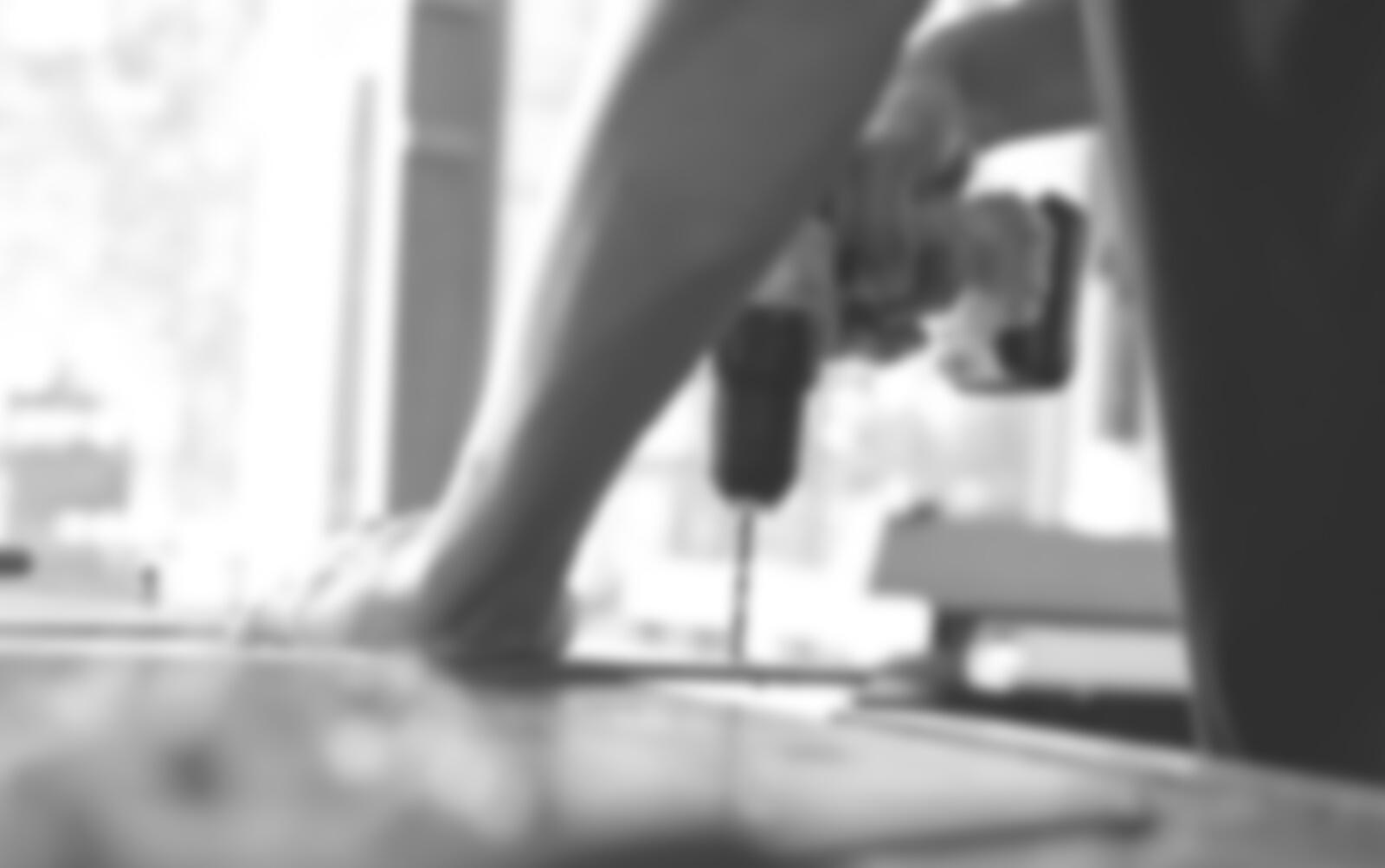


We are all familiar with the three large-scale, miraculous phenomena that occurred for the Jewish people in the desert. They were nourished by the Manna, the heavenly food that fell daily, their water was provided by the ever-present Well, and they were protected by the Clouds of Glory. The Slonimer Rebbe in Netivot Shalom asks the obvious question. Why do we have little or no tribute to the first two miracles, yet the “Ananei Hakavod”, the Clouds of Glory, form the motif of an entire chag?
The Rebbe explains that Jewish holidays do not simply recall past events. Every year we are meant to relive the past experiences and draw on the unique energies embedded therein. We achieve an aspect of redemption on Pesach and we receive the Torah anew each Shavuot. The Manna and the Well were miracles particularly suited for the generation that wandered in the desert. The Clouds of Glory, however, represent Hashem’s Divine Providence which is eternal. Indeed, the midrash in parashat Beha’alotecha notes that “following the clouds” is a mitzvah for all generations. Rav Wachtfogel, the late Mashgiach of Lakewood, notes in his Sefer Reshimos that one fulfills this mandate when he opens his eyes to the Divine Providence that pervades
his life. Further, one who looks for this Providence will see it at all times and in all places. If we don’t see it, it is only because our vision is limited. As Rabbi Nachman of Breslov was known to say, “The world is full of the light of G-d, but to see it we must learn to open our eyes.”
“Lema’an yeid’u doroteichem ki be’sukot hoshavti et benei Yisrael, so that future generations will know that I had the Children of Israel live in huts.” (Vayikra 23;43)
Emunah is the knowledge of Hashem’s continuous protection and constant care. The prophet Hoshea teaches, “And I will betroth you to Me with faith, and you will know Hashem.” (Hoshea 2:21) The chag of Sukkot infuses us with this knowledge. The word “sukkah” is related to Sara Imeinu’s other name, Yiska, which means to ‘gaze’ or to ‘see.’ Sukkot is a time for us to concretize the notion that Hashem is watching over us, always, at all times. As we sit in the sukkah, we feel enveloped by Hashem’s Presence and saturated with the joy that Hashem is not only protecting us, His attentiveness and benevolence is unceasing.
Rabbi Imanuel Bernstein in Sukkos: A Symphony of Joy, quotes a fascinating idea from the Aruch La’Ner that takes this idea one step further. The opening mishnah in
Masechet Sukkah rules that a sukkah taller than 20 amot is invalid. One explanation offered for this ruling is that from such a great height one is in the shade of the walls, as opposed to being in the shade of the schach. The Aruch La’Ner explains how this is so incredibly relevant to our lives. The sukkah is a physical manifestation of complete trust in Hashem. Having this trust means that although one can try and do his hishtadlut, one ultimately knows that even his efforts must be blessed through Hashem’s Will. Yosef Hatzadik is critiqued for placing his trust in the Sar Hamashkim, seeing him as his only recourse to freedom, not as an emissary of Hashem’s Will. The walls of the sukkah symbolize one’s hishtadlut, the Schach represents Hashem’s supervision.

Clearly one needs both walls and Schach to have a kosher sukkah. But which is seen as providing the shade? Sitting in a sukkah who’s walls are taller than 20 amot symbolizes that one feels the shade of the walls, not the schach, meaning, he sees his efforts as the bearer of his success. When we sit in a proper sukkah, in the shade of the schach, we are reminded that we are completely ensconced in Hashem’s embrace and wholly reliant on Him for our every need.
המלש האופר
Yosef Ezriel ben Chaya Michal
Chana bat Bruriah
Benzion Simcha Mendel Ben Chana Rachel
Feyge Sara bas Chaya Peshe
Nechama Charna bat Feigel
Leah Naomi bat Tova
אנדהאב לרפ ןב עשוהי םהרבא
IN THE LUXURIOUS NEIGHBORHOOD OF ARNONA, JERUSALEM NEVE
SHALEM IS AN ASSISTED LIVING FACILITY FOR RETIREES AND SENIORS WITH 60% ENGLISH SPEAKERS!

Full calendar of activities and entertainment in English and Hebrew!

Quality apartments built to high standards with balconies & gardens



Professional medical services









A dedicated staff providing for all the needs of our senior citizens 24/7 - Just like family! *3204



New on the Market in Rechavia!

Ground floor, completely accessible, spacious & airy, 4 rooms, 10m mirpeset, parking, tons of potential, 2 entrances so the 3rd bedroom can be used as a clinic/office or studio unit. 4.17m NIS
Great family apartment in the best part of Katamonim Spacious 4.5 rooms, 100m with 9m Sukka mirpeset, one floor up, good shape, 4 exposures, newly renovated bathrooms. 3.37m NIS
For rent on Emek Refaim
4 rooms, 80m, parking, 2 small mirpesets, 25 stair walk up, quiet as it does not face the street, perfect for young family or roommates. 6200NIS/month









Looking for something fun and meaningful to do with your kids over Chol Hamoed? Have they watched Torah Live on EL AL and want to see more?

Come see our new production studio in Jerusalem!

Enjoy Torah Live inspirational videos. Get a behind-the-scenes look at filmmaking with a tour of Torah Live’s new production studio led by Founder & CEO, Rabbi Dan Roth.
3 slots per day from Monday, October 2nd - Thursday, October 6th - Maximum 20 people per slot
Sukkah on-site / Light refreshments
Interactive activities for kids
Minimum donation 50 NIS per person
Maaser and tax-deductible Children 8 and up



To reserve your spot, visit: torahlive.com/studio-visit today!
By pre-registration only
All attendees will receive a 50% discount to one year subscription of Torah Live’s amazing video library
Questions? Contact us at info@torahlive.com


FOR SALE IN JERUSALEM:
KIRYAT SHMUEL (ALUF SIMCHONI)

Large, well-maintained, 3 rooms, 2nd floor, view, excellent location, near shops & cafes, parks, museums, synagogues, schools. Exclusive! Anita: 053-6318355

In quiet, central KIRYAT SHMUEL (HARLAP)

Lovely, well-lit 3 rooms, 85m+ option for “mamad” (shelter), street level - accessible for disabled. Near President's residence, shops and restaurants on Aza Street, synagogues, The Jerusalem Theater, public transportation, Exclusive. Nava 053-6642512
OLD KATAMON (RACHEL IMENU) ONE OF A KIND! Spacious 5-rooms, excellent condition, sunny, parking, elevator. Near quality schools and synagogues, boutiques, coffee shops, the Jerusalem Theater, Museums, public transportation. Exclusive! Anita: 053-6318355
3 Moshe Hess St., Jerusalem 0778038511








Question: May one build a sukkah in front of his house but on public property?

Answer: Most of our discussion will focus on the ability to fulfill the mitzvah, but civic considerations are crucial regarding the mitzvah as well as on their own.
Rabbanan rule that one does not need to own the sukkah he uses, but that it must not be stolen (Sukka 27b). The gemara (ibid. 31a) says that Rabbanan hold that not every sukkah connected to an element of theft is disqualified. For example, a sukkah on another’s property, including public property, is not disqualified as stolen because “land cannot be stolen,” meaning that land is seen as remaining in possession of its owner even if someone else is occupying it.
However, the Rama (Orach Chayim 637:3 and citing a Yerushalmi in Darchei Moshe, OC 637:1) forbids building a sukkah in the public domain or on a counterpart’s property without consent, saying that only b’di’eved one fulfills the mitzvah in those circumstances. The Magen Avraham (637:3) posits that although land is not “stolen enough” for the aveira to disqualify the mitzvah (mitzvah haba’ah ba’aveira),
that concept does preclude making a beracha on such an unauthorized sukkah (see Machatzit Hashekel ad loc.). We find a precedent regarding arba minim that were stolen and acquired by the thief – the mitzva can be fulfilled, but it is disgraceful to make a beracha in such a case (Shulchan Aruch, OC 649:1) The Eliya Rabba (637:4) distinguishes between the cases – theft caused switched ownership for the arba minim, whereas here the sukka’s ownership is unchanged. He also claims that even if one should not make the beracha, it would not be l’vatala since the mitzvah is valid. The Mishna Berura (637:10; Be’ur Halacha ad loc.) prefers the Eliya Rabba’s ruling when there are no good alternative places for a sukkah.
There are grounds to distinguish between public ground and a neighbor’s property. There is a greater chance the public implicitly agrees to such use of their land, as it belongs to and is used in some ways by all residents. This logic explains why poskim do not usually require permission from neighbors to use part of the joint property for a sukkah (Chut Shani, Sukkot, p. 223). While a neighbor may be happy for someone to use his sukkah while he is away (Mishna Berura 637:9), this is not true of building a

The Orthodox Union - via its website - fields questions of all types in areas of kashrut, Jewish law and values. Some of them are answered by Eretz Hemdah, the Institute for Advanced Jewish Studies, Jerusalem, headed by Rav Yosef Carmel and Rav Moshe Ehrenreich, founded by HaRav Shaul Yisraeli zt”l, to prepare rabbanim and dayanim to serve the National Religious community in Israel and abroad. Ask the Rabbi is a joint venture of the OU, Yerushalayim Network, Eretz Hemdah... and OU Israel’s Torah Tidbits.


sukkah on his property without permission (Pri Megadim, EA 637:7). Poskim are unhappy about using a sukkah (see Dirshu 637:12) on an illegally built a mirpeset (balcony), although seemingly after years of quiet on the matter, we can probably assume permission to use the mirpeset as one wants, at least in the meantime. In a Jewish community or even many friendly non-Jewish ones, it can often be assumed that people understand the use of the area near one’s house for his sukkah (Chut Shani ibid). Eshel Avraham (Butchach, siman 637) says that even in non-Jewish countries, lack of opposition is equivalent to permission.
Rav S.Z. Auerbach is cited (Halichot Shlomo, Sukkot 7:11) as being more provisional in allowing such a sukkah – there should be general permission from the locale and it should be done in a way that it does not impinge on use of the street/sidewalk. It is worthwhile for a rabbi to ascertain if (and perhaps influence that) the appropriate powers-that-be generally allow people to use the relevant public property.

When to assume permission depends on different things. Regarding place, attitude to religious Jews is a factor, as is socio-economics. Fancier neighborhoods are often more particular about nuisances and eyesores; how much space people have on their own property is also a factor. The size and positioning of the sukkah are also important, as one should not take advantage even when there is general
permission. Choosing between a smaller sukkah on one’s own property and a bigger one on a public area can be difficult, and both the kashrut of the sukkah and mentchlachkeit are important factors. An important rule is – you can be machmir on yourself but must judge others (i.e., those who are using public land) favorably.
For a Din Torah in English or Hebrew contact ‘Eretz HemdahGazit’ Rabbinical Court: 077-215-8-215 • fax: (02) 537-9626 beitdin@eretzhemdah.org

The oketz is the stem—the part of the etrog that connected it to the tree. When shaking the etrog along with the rest of the arba minim, the etrog is supposed to be held in the direction “of their growth”
- “derch gedilatam” (TM Sukka 45b; Shulchan Aruch OC §651:2). That is, we hold the etrog with the oketz face-down (which is counter-intuitive), since in the beginning of its growth, the oketz is below and the pitom is above. However, when the fruit forms, the fruit’s weight pushes the oketz upwards (Mishnah Berurah, ibid., 17).
When I guide visitors to the Torah and VeHa’aretz Institute, we see on the same etrog tree, young fruit with the oketz down and mature ripe fruit with the oketz up.


In order for the mitzvah to be performed directly after the blessing is made (over la’asiyatan), the prevalent custom is to pick up the arba minim with the etrog face- down (the pitom face-down and oketz face-up). The blessing is said, and the etrog is turned over (so the pitom faces up), and then the arba minim are shaken (Shulchan Aruch, OC §651:5).
Note that if unsure which part of the etrog should face up, it is best to place the
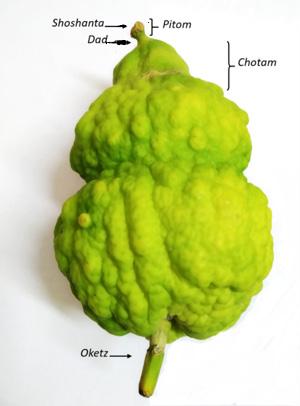
etrog on the table when making the blessing, and then pick it up with the pitom face-up, and then shake the arba minim (Shulchan Aruch, ibid., first opinion cited).
PRACTICAL TIPS FOR ETROG CARE
Color: If one purchased a green etrog, but wants it to become yellow, place in a plastic bag with an apple for several days (but first ascertain that the bag is not moist). The gasses emitted by the apple expedites the
etrog’s ripening process, and turns it yellow. Storage and care: One should keep the etrog in a closed container (even when purchased way in advance of the holiday). The etrog should not be wrapped in a damp cloth and should be kept away from moisture. This is in order to preserve its beauty for the entire duration of Sukkot.
Comprehensivefollow-up&treatmentfordry&wetage relatedmaculardegeneration(AMD)asanalternativeto hospital
- IntravitrealinjectionsofAvastin,Lucentis,Eylea&Vabysmo - OCTimaging


- ColorultrawideFunduspictures
-Speedydiagnosisandtreatmentgiveninsamevisit 2 KerenHayesodSt.,Ra’anana
Tobookanappointment
TEL: 1-700-70-10-30 www.retina.co.il
BAKA - stunning 3 story house on a quiet & pastoral cul-de-sac, very high end designed, swimming-pool, large wrap around garden, parking
MENDEL 052-8980111
In the heart of calm and pastoral BAKAPrivate arab house, 6 rooms, 500m + possibility of building 250m, huge garden, approx. 700m, completely renovated, underfloor heating + a/c, large parking, 5 bathrooms, 5 toilets, green
MENDEL 0528980111
BAKA / MEKOR CHAIM – 4 rooms, 90m, 2nd floor + elevator, renovated by architect, fireplace, a/c, very central, close to all amenities
3050000 NIS - MENDEL 052-8980111
BAKA - New penthouse, 4 rooms in a small luxurious building with character, alone upstairs, 3rd floor + elevator, 4 orientations, 3 toilets, 2 bathrooms, terrace / sukkah, 70m, parking, store-room
5450000 NIS MENDEL 052-8980111
ADAM ST. - close to Arnona Hatzeirain a step building, very spacious 5 rooms + terracce, 40m, open view, renovated, private entrance, quiet, potential of adding extra unit
3290000 NIS - MICHAEL 052-3202488
MOSHAVA / In a building after TAMA 38, new apartment, 4 rooms, 3rd floor + elevator, balcony/partial sukah, opened sight, 2 bathrooms, calm, parking
MENDEL 052-8980111
In a small & pastoral street in the heart of BAKA - Penthouse/Duplex 5 rooms, terraces, 15m + balcony, 6m, 2nd & 3rd floor + elevator, 3 orientations, parking
MICHAEL 052-3202488

BAKA / MEKOR HAIM - 4 rooms, 90m, 2nd floor + elevator, completely renovated, fireplace, a/c, gas heating, very central, close to all amenities
MENDEL 052-8980111

We read the parsha of V’zot Habracha, a short parsha of 41 verses. And the beginning of Breishit which itself is 34 verses.
Moshe blesses the tribes of the Jewish people, pointing out the qualities that a variegated society will need. Leadership, consistency, legislature, judges, business, agriculture, warriors, minerals. In this Moshe speaks mostly to G-d, not to the people, illustrating to Him the greatness of the people he is to take leave of.
1ST ALIYA (DVARIM 33:1-7)
Moshe blesses the people before his death. G-d approached us at Sinai, although He has all nations; we were the ones who received His utterances. He is the King over Israel. Reuven endures as does his progeny. Yehuda, G-d hears his voice, he is powerful, and be his help.
Moshe does not bless the tribes in a way that we think of blessing. A blessing would be: may you have success or may you have peace. Rather, Moshe describes the unique quality of each of the tribes. Perhaps the blessing is: be as you are, continue as you are.
Reuven is the consistent one. Enduring. Always at the ready. Yehuda is power and leadership, the eventual monarch.
2ND ALIYA (33:8-12)
Levi, He is Your pious one, withstanding trials by listening
to Your covenant. They will teach Your Torah and serve You. Bless him and gird him in the face of adversaries. Binyamin, the beloved of G-d, He protects him, while he dwells on His chest.
The Jewish people need religious leaders and that is Levi. Binyamin is the seat of the Mikdash, the physical partner to Levi’s religious service.
3RD ALIYA (33:13-17)
Yosef, his land is blessed, from the sweet of the land, mountains and hills. He has power through both Ephraim and Menashe.
Yosef is agricultural bounty, strength in economy and strength in numbers.
4TH ALIYA (33:18-21)
Zevulun is pleasing in his journeys, Yissachar in his dwellings. People gather at the mountain, enjoying the bounty of the sea and of the earth. Gad is blessed, dwelling as a lion. His portion is legislation, leadership, righteousness and justice.
Zevulun is the merchant marine, Yissachar the philosopher prince. Gad is the backbone of national institutions, of justice and the rule of law.
5TH ALIYA (33:21-29)
Dan is a lion cub, enjoying the Bashan. Naftali, satisfied, full of blessing, the sea and the south. Asher, blessed more than children, beloved by brothers, feet of oil, shoes of iron and copper. None is like G-d, riding the heavens in your aid, splendorous.
Dan protects the northern border, while Naftali the west and the south. Asher is the peacemaker, with “soft oiled feet but shoes of iron”, a metaphor for stepping softly but with principles when needed. The peacemaker.
CHATAN TORAH (34:1-12)
G-d of ages surveys, under Him strength, repelling enemies. The Jewish people dwell safely, wheat and wine, oil like dew. Fortunate are you Israel to have such a Protector. Moshe ascended Har Navo, looking out over the Land. G-d told him, this is the Land I promised to you, though you will not enter it. Moshe died, buried, though his burial spot is not known. His strength was with him to the end. The people mourned 30 days. Yehoshua was filled with Divine spirit, though none will ever be as Moshe, knowing G-d, face to face, performing all the
wonders which he did in front of all Israel.
Moshe’s life comes to an end. Perhaps a tinge of tragedy, failing to enter the Land he worked toward his whole life. But, in mentioning Yehoshua, and in following his poetic description of the spectrum of talent the Jewish people display, he leaves the world satisfied. His goal was not to enter the Land; his goal was to successfully lead his people to enter the Land. He leaves the world satisfied that all that is needed for success is right there in front of them. His life’s mission was accomplished.
CHATAN BREISHIT (1:1-2:3)
So as to continue the lifelong learning of our Torah, following the conclusion of the Torah we jump right in and continue with the beginning of the Torah, reading the story of Creation from day 1 through Shabbat.


Upon the conclusion of the festival of Sukkot, we celebrate the yom tov of Shemini Atzeret. The yom tov of Shemini Atzeret is of course known by another familiar name - Simchat Torah. On Shemini Atzeret we move from the simcha of sitting in the Sukkah and rejoicing with the arba minim to the joy of dancing together with the sifrei Torah. The Chasidic Masters suggest numerous messages which are represented by the hakafot and dancing of Simchat Torah.
The Baal HaTanya zy’a, noted that a sefer Torah contains 600,000 letters representing the 600,000 souls who stood together to receive the Torah at Sinai. The Sefer Torah represents the unity of Klal Yisrael, and the value and importance of every single member of the Jewish People- if one letter in a sefer Torah becomes erased or damaged, then the entire sefer Torah is considered pasul. On Simchat Torah, we all come together to dance with the sifrei Torah to remind us of the value of unity and sanctity of each and every Jew.
Reb Yisrael Friedman, the Rizhiner Rebbe zy’a, points to a well known Maamar Chazal to explain this yom tov of Shemini Atzeret and Simchat Torah. The gemara in Masechet Shabbat 31a records the familiar story of the prospective convert who comes before the sage Hillel and asks him to teach him the entire Torah, al regel achat-while standing on one foot.
Hillel of course famously replied “that which is hateful to you, do not do unto others...”
The Rebbe explained that what the prospective convert was really asking was - tell me all
the Torah there is to know about the yom tov of Shemini Atzeret - al regel achat - about the yom tov which is one day long - the holiday that seemingly has no particular mitzvah associated with it. The Rebbe explained that we therefore sing and dance and celebrate together, to remind us on this yom tov of Simchat Torah - this regel achat - of Hillel’s eternal message of unity and mutual respect.
Rabbi Kalonymus Kalmish Shapira h’yd, the Rebbe of Piascezna zy’a, offers another beautiful explanation as to why we call this yom tov of Shemini Atzeret by the additional name of Simchat Torah.
In Derech HaMelech, the collection of the Rebbe’s pre-war sermons and teachings, the Rebbe writes:
“After the entire period of the yomim noraim and Sukkot, when the Jewish People has expressed both renewed commitment and unity to one another, as well as displayed an invigorated sense of commitment to Hashem and his Torah, we come together and dance with the sefer Torah, not solely are we b’simcha and rejoicing, but the Torah itself is so to speak b’simcha, the Torah is the proverbial baal simcha that is rejoicing with the Jewish People, and we are basking in the Torah’s joy....”
May each of us merit to experience and recognize the unity, the sacred value of one another, and to bask in the Torah’s joy as we come together on the regel achat, the yom tov of Simchat Torah.
Hakafot Sheniyot
& @ Matan
Rabbanit Rachelle Sprecher Fraenkel


with Odeleya Berlin
Motzei Simchat Torah

October 7 • 9:00pm
Dr. Yael Ziegler


"אכלמ יבמ ןיקתפ ןקפנ" On Notes, Messengers & Agency The Voice of the Herald (Kol-Hamevasser): Stirrings of Mashiach

Rabbanit Shani Taragin
Pitfalls and the Plight of Brotherhood
Thursday October 5 • 8:30pm
Matan Jerusalem, 30 Rashbag St.
October 15 - Opening of the 2023-24 academic year First two weeks free of charge
Join the largest learning community in the world!

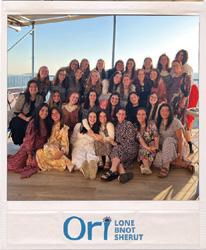






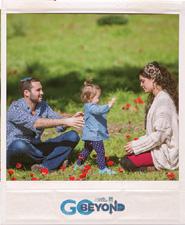




Join Crossroads for a psycho-educational conversation facilitated by Robbie Sassoon, MSW, Director of Crossroads, featuring a panel of leading mental health professionals. The program will start with short presentations offering parents an opportunity to learn how to support their teens and their peers, and will be followed with the opportunity to engage the panel with questions.
Wednesday October 18th 8:00 PM - 9:30 PM
Setting boundaries and creating trust with your teen

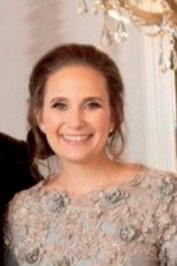
Dr. Zev Ganz, PhD
about
PhD
“Wait, We Can Both Be Right?!”
A DBT Approach to Emotional Struggles with Practical Applications for Improved Dialogue at Home

CROSSROADS PROVIDES PROFESSIONAL THERAPEUTIC PROGRAMS & SUPPORT, INCLUDING FREE THERAPY, FOR ANGLO TEENS, YOUNG ADULTS, GAP YEAR STUDENTS, BNOT SHERUT & LONE SOLDIERS IN ORDER TO REACH THEIR POTENTIAL AND THRIVE.


The essential color of Knesset Yisrael is being revealed; powers continue to develop - wisdom, valor, honesty, and inner purity progressively return - the nation advances forward and is built, developing towards its Redemption, a redemption lasting foreverthe nation blossoms in the revelation of its magnificent splendor.
Out of the massive waves of affliction which pass over her from all the gentiles, from all Diasporas, she gathers great wealth of knowledge, and an encompassing vision which spans the far horizons, adding to her own possessions the pure elements contained in foreign sources.
The zeal of the nation increases, its self-recognition grows. She already knows that she has a land, that she has a language, a literature…
And above all of them, she knows that she has a unique light of life which crowns her, and, through her, crowns the world. Through all of these together, she knows her strength, for she has a mighty valor with the God of truth. (Eretz Chefetz 7:4) (Translation Samson and Fishman)
Rabbi Kook tells us that the essence of the Jewish people is revealing itself in its essential colors. There is an inner force, and vibrancy of Jewish life that has been dulled and often muted in the darkness

and suffering of the exile. Jewish nationalism, valor, truthfulness, purity, idealism, wisdom, clear thinking, literature, and language, which went into hibernation during the long nightmare of Galut are returning to the nation with the appearance of the Zionist movement.
Perhaps this idea can be traced back to a stunning prophecy from Yechezkel: “For I will take you from among the nations, and gather you out of all the countries, and will bring you into your own Land. Then I will sprinkle clean water upon you, and you shall be clean, from all of your uncleanliness, and from all your idols will I cleanse you. A new heart also will I give you, a new spirit will I put within you…” (Yechezkel 36:24-26).
Rav Kook finds a sliver of light in our people’s prolonged exile. Namely, "From all the Diasporas she (i.e. the Jewish people) gathers great wealth of knowledge and an encompassing vision which spans the far horizons.”
When we examine the first galut of the children of Israel in Egypt we take note of the curious obligation for the Israelite slaves to take precious items with them when they leave their enslavement. “And the Children of Israel did according to the word of Moshe; and they asked of
Mitzrayim jewels of silver and jewels of gold and garments..” (Shemot 12:35-36).
Just as the Jew left Egyptian bondage with great wealth, taking the best of their culture along with the gold - we are to leave our modern-day exile with the scientific, cultural, and material treasures of the societies where we lived.
Rav Kook suggested two additional reasons why there was a need to take the spoils of Egypt with us to the Land of Israel. Both touch on themes Rav Kook accentuated in the passage above (Ain Aya, Berachot, 1:114). First, slavery crushes body and spirit alike. After 210 years of grueling, relentless laboring for others, the Jewish slaves needed to begin thinking of themselves as masters of their own destiny. In the very early stages of the redemption, the text relates that the Israelites had difficulty accepting Moshe’s message of hope and freedom because of their “smallness of spirit.” (Shemot 6:9). It was necessary to make something unimaginable very real in order to break them out of their small-mindedness, to expand their focus beyond the day’s toil and gruel. The sudden acquisition of precious metals would serve to awaken their sense of self-worth and to bolster their ambitions. Bedecked in gold and silver, their spirits could not help but be raised.
Second, the desire to acquire material wealth is necessary for the Jewish nation to fulfill its divine mission. Only a nation that garners the respect and admiration of the nations can be influential on the world stage. Countries interacting with the Jewish nation in the arena of commerce and finance are more likely to seek out Israel’s unique
Specializing in American Immigration and Naturalization Law for over 30 years

Early filing critical due to Corona delays!!!
www.wolgelaw.co.il
www.facebook.com/uscitizenshipinfo lawyer@wolgelaw.co.il
Tel: 02 590 3444
Member, AILA (American Immigration Lawyers Association)
Of Counsel to Bretz & Coven, LLP
www.bretzlaw.com
wisdom and divine knowledge. Prosperity and a robust sense of Jewish pride enable and empower Israel to be a light unto the nations. (Torah United, pp. 196-197)
According to Rav Kook we are seeing in the modern return of the Jewish people to the Land, the spirit and similar characteristics of the Egyptian redemption - a sudden injection of Jewish pride, the unique positioning to spread the light of Torah to the world, and for our nation to ultimately achieve her greatest promise.
Please note Torah Tidbits Advertising
Deadline: Shabbat Breishit Oct. 13-14
» Sunday, Oct. 8th
Call Ita Rochel: 02-5609125 or ttads@ouisrael.org
Resumes Oct 15th



Apartment Management

Handling tenant matters can be stressful and time consuming. The last thing you want to worry about is your property
Our service is to give you peace of mind
Have you been thinking about putting your place up for short-term rental, but feel nervous having strangers in your home? Let us ensure t he safety of your property and generating profit

Interested in buying a property?
Renting for long or shortterm.
Kosher short-term rentals are available
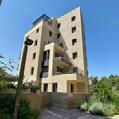


SUPPORTING THOSE WHO STAND ALONE
• Enhancing welfare and shelter.
• Empowering the destitute.
• Offering a personal touch through our "Big Brother" program.
• Counseling and home visits.
• Assisting with Shabbat, Chagim, and family Semachot.
Enter our NEW WEBSITE! www.yeshezra.org
Raising funds for a Hachnassat Kallah.

Checks
“Yesh Ezra” - POB 31476, Romema, Jerusalem, 9136101

Bank transfer
Bank Mercantile (17)
Branch 642, A/c 79747843
(Send Asmachta for tax receipt*)
Credit Card
Call Sara – 077-820-0196
Sun/Mon/Wed (10:15 am - 2.45 pm)
Website: www.yeshezra.org. Click on Donate Now
INQUIRIES: Menachem Persoff - 050-570-1067 | *menpmp@gmail.com



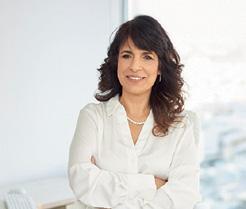

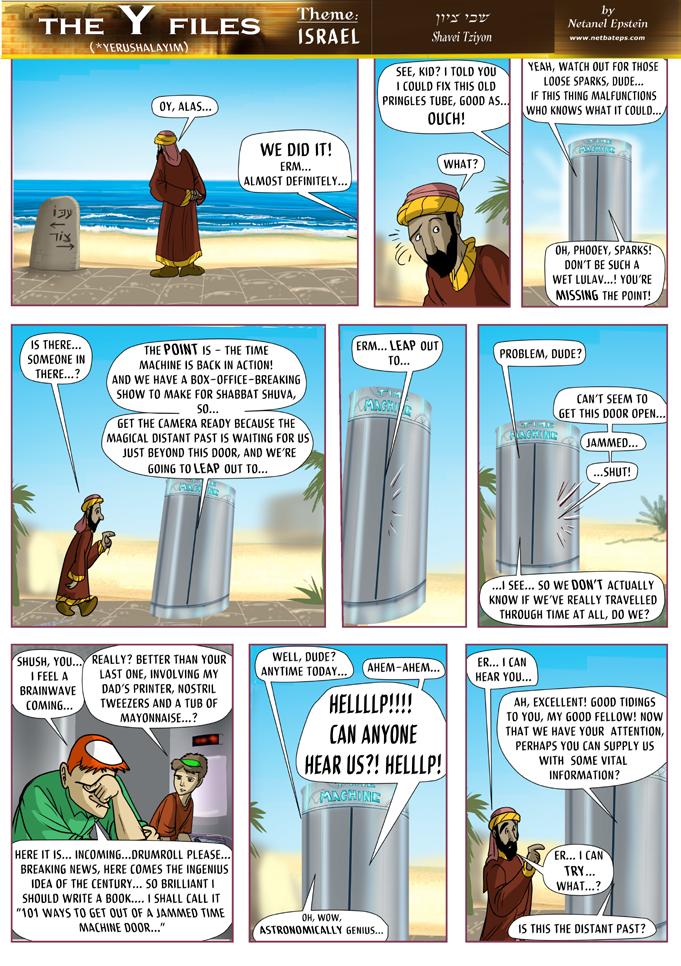

New project - Pinui Binui!
Heart of Rechavia
Full floor in new boutique building. Built to the highest of standards. 190 SQM, 2 balconies totalling 24 SQM. Private parking, machsan. Ready in 26 months. Construction has already begun. Contact us for more info.
New project - Pinui Binui!
Heart of Rechavia
Penthouse apartment with private rooftop & pool in new boutique building. Built to the highest standards. 285 SQM, 2 balconies totalling 61 SQM, 153 SQM roof. 2 private parking spots, 2 machsans. Ready in 26 months. Construction has already begun. Contact us for more info.
New project - Pinui Binui!

Heart of Rechavia
Small apartment in new boutique building. Built to the highest of standards.
67 SQM, 12 SQM balcony. Private parking, machsan. Ready in 26 months. Construction has already begun. Contact us for more info.
This beautifully secluded 5-story corner house is situated on a quiet street in the heart of the German Colony, Jerusalem. Both peaceful and green. This house is full of natural light and high ceilings, with a beautiful private rooftop. The house is situated a couple of minutes away from the bustling Emek Refaim street, which is filled with restaurants, cafes, shops & more. 353 SQM, huge private garden: 197 SQM, Balconies: 59 SQM, 7 bedrooms, 5 full bathrooms, elevator, private parking, 2 entrances, option to build another 140 sqm. Contact us for more info.
Off-market property! Saidoff Tower. Heart of Jerusalem centre. Renovated & is in good condition. Perfect vacation home or short-term rental apt. 3 bedrooms & mamad, 2.5 bathroom, natural light. Stunning view to the Knesset, machsan, private parking, 24/7 security guard/doorman, swimming pool & gym in building. 125 SQM+-, balcony(not sukkah).
Contact us for more info.
Off-market property!
Heart of Rechavia/Shaarai
Chesed.

Garden apartment, private entrance. Renovated & is in good condition. 3 bedrooms, 2 full bathrooms, air from 3 directions, natural light.
83 SQM & garden - 84 SQM. Property is in advanced stages of receiving a permit to add a mamad of 13 SQM.




Contact us for more info.
For more details on these properties or about how we can help you to find your home in Israel, please contact Yoel Kaufman +972-542074969 - yoel@kaufmanrlty.com



HAZORFIM'S "LEGACY" COLLECTION IS A CELEBRATION OF DEEP-ROOTED TRADITION AND SKILLED CRAFTSMANSHIP THAT REFLECTS THE PASSION OF TRUE ARTISTS.
